Europe, theAmericas and A f r



i c a
1
A highly refined Dutch Chinoiserie pinewood black and gold lacquered cabinet on stand Holland, late 17th century
H. 197 x W. 154 x D. 52 cm

The heightened decorations in gold on this cabinet are most certainly unique and of astonishing quality. The front of the cabinet arguably has been painted by the master of the workshop, whereas the sides of the cabinet, showing more sober sprays of flowers, were presumably painted by a (very skilled) apprentice. Probably made in large quantities, only a very small number of these cabinets in their original condition have survived, as they are basically paintings that are to be used. They were often sanded down, and/or overpainted in the 19th century, when Chinoiserie became in vogue again.
At the end of the 17th century, European lacquer art, an attempt to imitate imported Japanese and Chinese lacquer, started in Holland and England but rapidly spread to other European countries. However, if European lacquer art sought to imitate Asian lacquer art, this was not very successful. First, the essential raw material for East-Asian lacquer work, the resin of the Rhus verniciflua tree, did not exist in Europe and raw lacquer could not be exported to Europe because it did not survive the long sea journey. Secondly, the Chinese and Japanese decorations were not well understood, so European lacquer workers developed their own style, combining elements of Asian and European motifs, which also had to be adapted to the form of European furniture, such as the present Dutch-shaped cabinet. For comparable cabinets previously sold by us, see: Uit Verre Streken, June 2005, no. 2; December 2020, no. 5; and November 2021, no. 3.
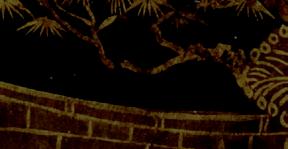

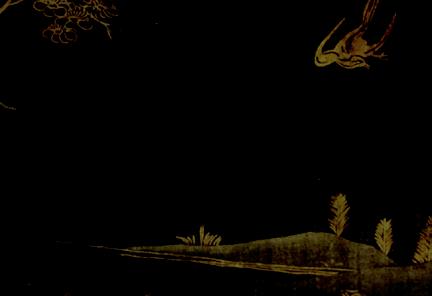


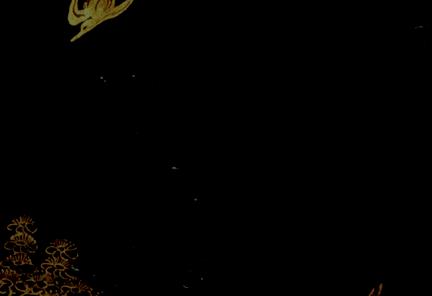







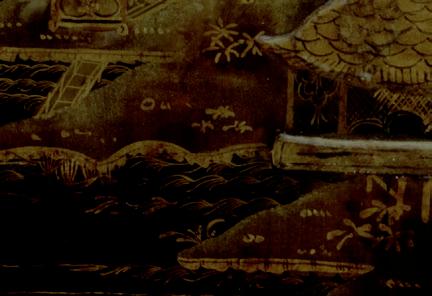
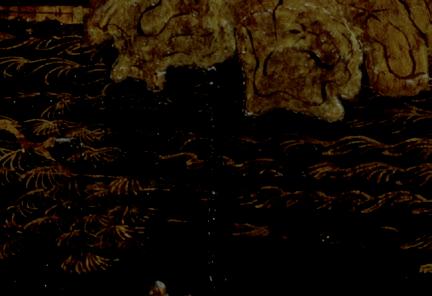

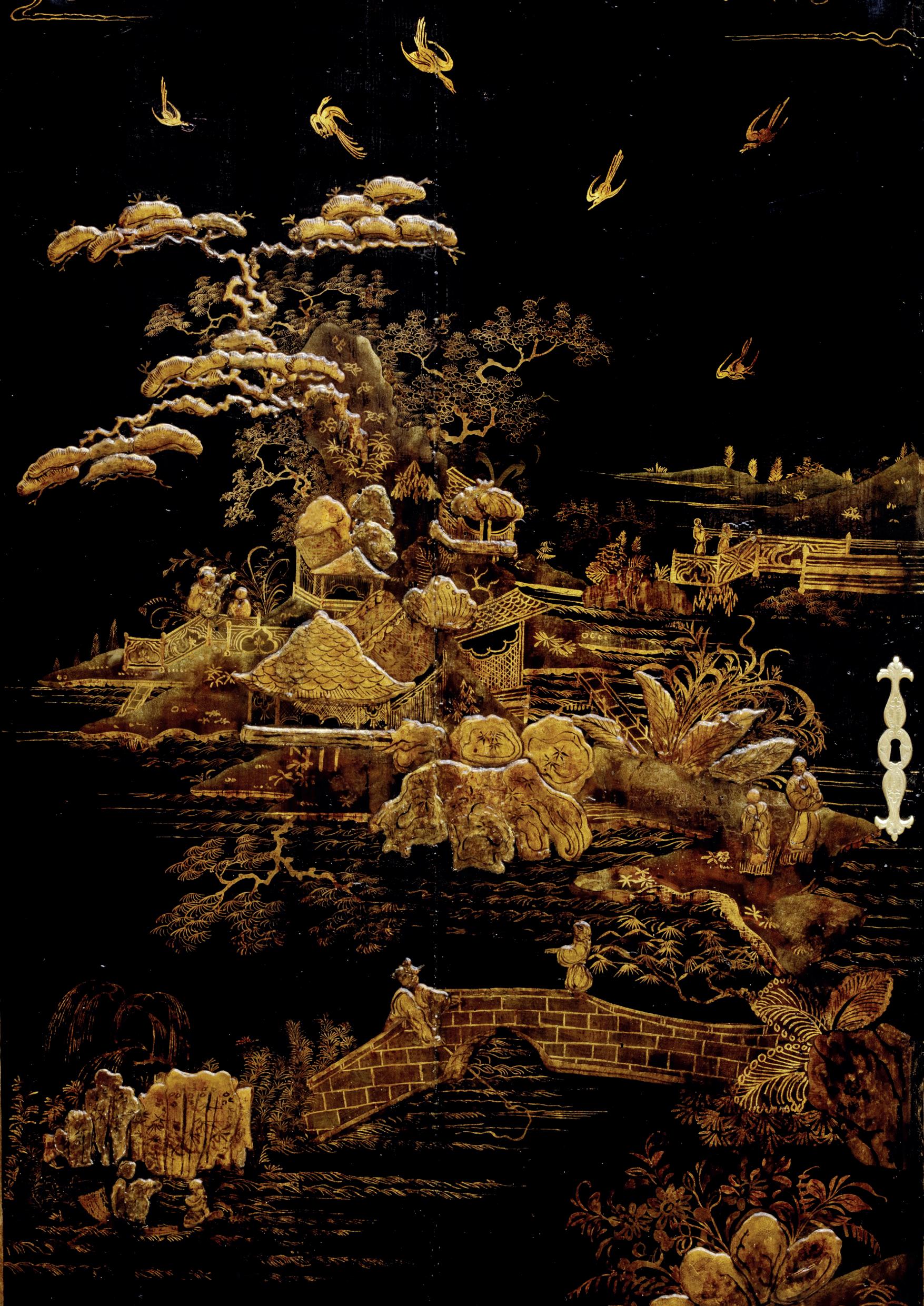
Literature: Monika Kopplin, European Lacquer, Hirmer Verlag, Munich, 2010
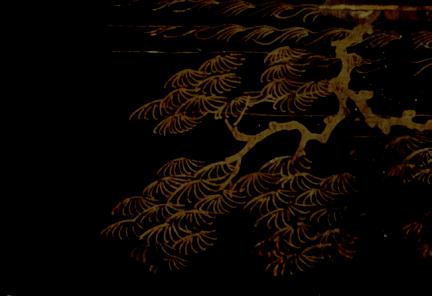 Provenance: Private collection, Bordeaux
Provenance: Private collection, Bordeaux
Portrait of Hendrik Brouwer (c. 1581-1642), Governor-General of the former Dutch East-Indies

The Netherlands, 2nd half 17th century
Titled ‘Hendrik Brouwer Gouvr. Generl. van India’ and annotated at the reverse 1640 Holl. Ausstellung Lenzburg 1934, Katalog Oil on panel, H. 33 x W. 24.6 cm
2
Hendrik Brouwer was born in circa 1581, somewhere in the Spanish Netherlands. He moved to Amsterdam at a young age, where he served six years as an apprentice to Leonard van Raey, an Amsterdam merchant, for whom he made journeys to Spain, Portugal and possibly the Dutch East Indies. In 1610 Brouwer sailed to the East Indies as commander of a fleet of three ships. On his initiative, he explored the Southern route, from Cape of Good Hope to the East, turning North to Java almost as far as the west coast of Australia. This route was so much quicker that the Heeren XVII, the VOC directors in the Netherlands, decided that this would be the route to Batavia (Jakarta) from then on. In Batavia, he didn’t get on very well with Governor-General Pieter Both, who sent him as Opperhoofd or Chief-Merchant to the VOC trade post in Japan, Hirado, in 1613. Brouwer made a court journey to Edo to pay respect to the Shogun and bring him the customary gifts such as telescopes, guns, globes and books on European science and shipbuilding. In 1613 Brouwer established the first Dutch trade post in Siam. He returned to Amsterdam in 1617, where he became one of the directors of the VOC. In 1632 he accepted, for three years, the post of Governor-General in Batavia. In 1641 Brouwer was back in Amsterdam but apparently out of favour with the Directors of the VOC, as he was now appointed Governor-General of the WIC, the Dutch West India Company. The position was not bad, if he had not been commanded to sail out to conquer the Spanish silver mines in Peru. During the magnanimous but unsuccessful attempt, Brouwer died in 1642 in front of the coast of Chili at Puerto Inglés.


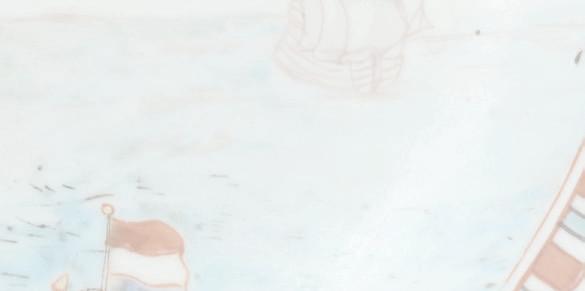
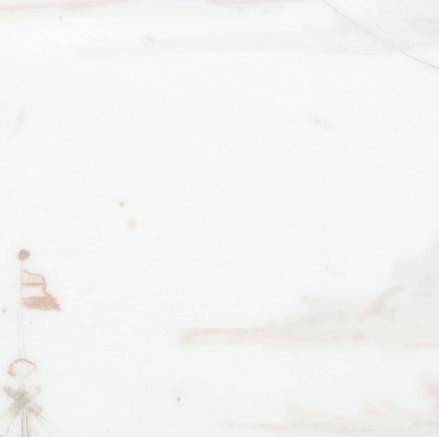
3
A Chinese export porcelain dish with Dutch decoration of a VOC ship

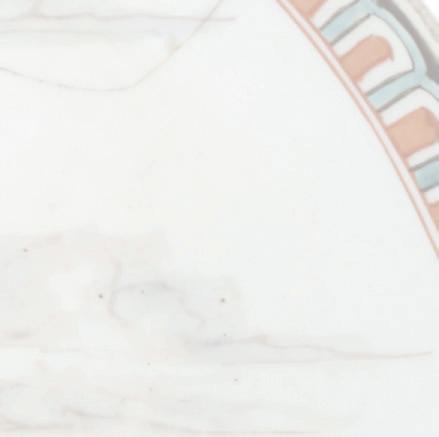
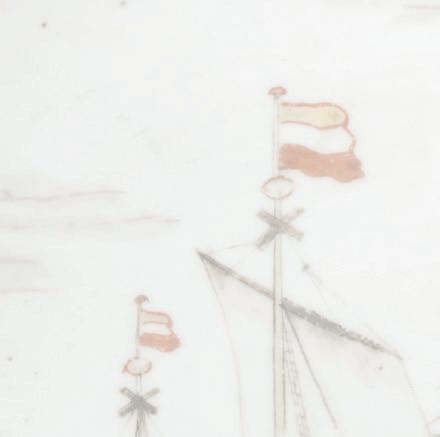
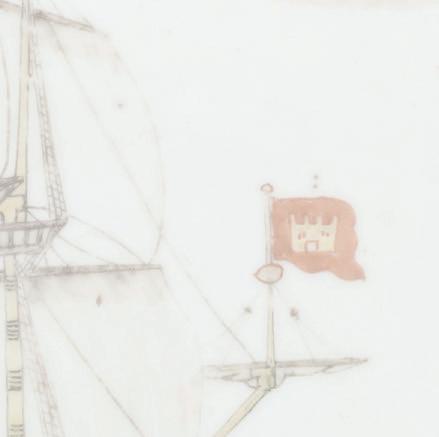


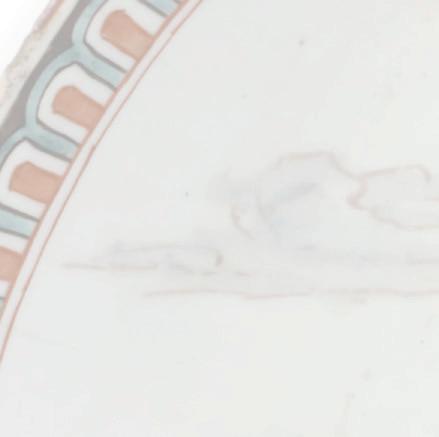
Circa 1700-1710, the Dutch decoration circa 1720-1730 Diam. 21.5 cm
Originally left white, this Chinese dish was painted in overglaze enamels in red, turquoise, yellow and black in Holland with a Dutch East-Indiaman with the arms of the province of Zeeland. It has a lion emerging from the waves (Luctor et emergo), on the stern, dated 1700, and flies the flags of the Dutch Republic and the city of Middelburg (a castle on a red ground) on the bowsprit, sailing on choppy turquoise waters. The dish has a red, white, black and green lappet border, a sticker at the reverse reading “brought from abroad 100 years ago, 1888”, and an old rivet restoration.
Identical dishes are held in the British Museum in London (inv.no. F 597 A) and the Rijksmuseum in Amsterdam (D.F. Lunsingh Scheurleer, Chinese Export PorcelainChine de Commande, London 1974, pl. 355).

4
A highly refined and rare Red Coral (Corallium rubrum) crown attributed to the Phillips Brothers of London England, circa 1850-1870, possibly by Robert Phillips, apparently unmarked
The polished Red Coral branches are used to form a tiara higher towards the centre, made in the form of a wreath of leaves at the lower edge. The individual coral parts are placed along a gold-plated ring with attachment eyelets.

H. 6 cm (front) Diam. approx. 15 cm
Although the present piece bears no signature, it is closely related to the work of the Phillips Brothers, for whom Robert Phillips was the leading supplier of coral objects in London. As early as 1870, the company was able to title itself “The most complete collection of fine coral work in the world”. Coral jewellery, from elaborate tiaras like the one presented to simple strings of beads, was one of the most characteristic forms of personal jewellery in the Victorian era. The origins of the fashion have been variously traced to Napoleon’s Italian campaigns; to the coral jewellery of a royal bride (the Duchess d’Aumale in Naples in 1845); or (more circularly) to the era’s general interest in decorative naturalism. The European centre for coral design was Naples, with easy access to beds of red coral in the Mediterranean, which were indeed largely destroyed by the popularity during this period. The most prominent designer Robert Phillips directed the fashion from his studio on Cockspur Street. Its heyday in Britain - particularly of the naturalistic strain, which preserved the spiky natural shapes of the coral forms - were the 1850s. Later the fashion collapsed, perhaps under its own weight. (Anderson, 2008) A comparable piece can be found in The William and Judith Bollinger Gallery of the Victoria & Albert Museum (inv. no. M.10:1.2-2003).

A first edition, second issue of ‘The Wonders of the East and West Indies, or New Treatise on Precious Stones & Pearls’, Les merveilles des Indes Orientales et Occidentales, ou Nouveau traitté des pierres precieuses & perles […], by Robert de Berquen (1636-1713), Paris, published by Christophe Lambin pour l’auteur, 1661

5
Les Merveilles des Indes orientales et occidentales, ou Nouveau Traitté des Pierres precieuses & Perles, contenant leur vraye nature, dureté, couleurs & vertus : Chacune placée selon son ordre & degré, suivant la cognoissance des Marchands Orpheures. Auquel est adjousté une petite Table fort exacte, pour connoistre en un instant à quel tiltre les Marchands Orpheures de Paris, & les autres dans toutes les principalles Villes presque de toute l’Europe, travaillent l’Or & l’Argent.
The lengthy title can be translated to: ‘The Wonders of the East and West Indies, or New Treatise on Precious Stones & Pearls, Containing Their True Nature, Hardness, Colors & Virtues: Each Placed According to Its Order & Degree, According to the Knowledge of the Marchands Orpheures (jewellers). To which is added a small very exact Table, to know at the instant at what angle the Marchands Orpheures of Paris, & the others in all the principal Cities almost of all Europe, work Gold & Silver’.
With an engraved portrait of Anne Marie Louise d’Orleans to whom the book is dedicated, by Larmessin dated 1664.
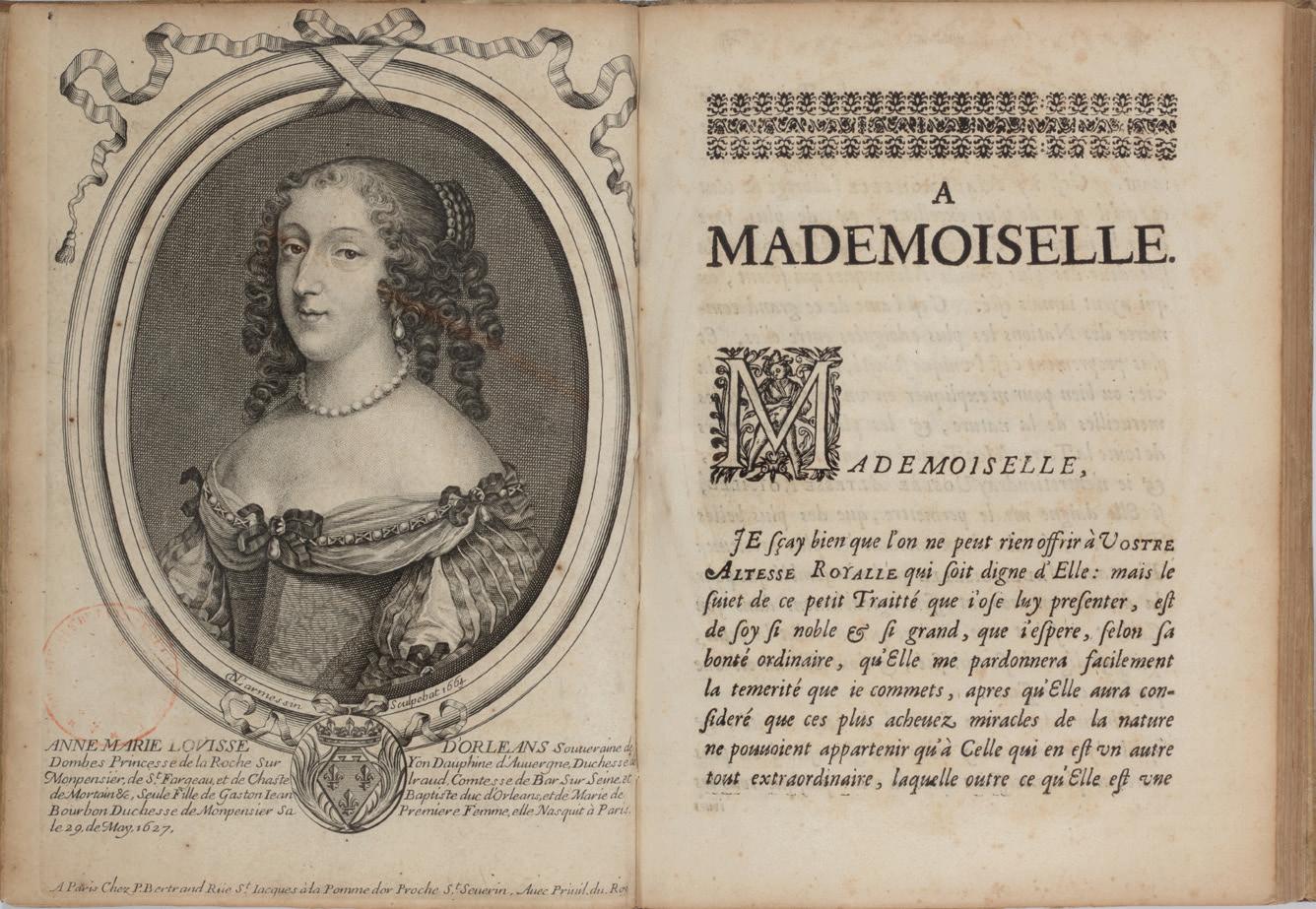
Written by a Flemish jeweller in Paris who catered to the court of Louis XIV. Fascinating in this book is the attention to where the best precious recourses can be found in the 17th century colonies. Several areas in America, the Middle East, Africa and Asia are described.
Robert de Berquen was an influential Parisian jeweller and goldsmith who played a significant role in perceiving the diamond as the most precious stone. According to himself, he was a direct descendant of the first diamond cutter: Lodewijk van Berken from Antwerp. De Berquen calls the diamond “the true sun of all precious stones”. More info: www.zebregsroell.com/europe-and-america

A highly unusual carved, painted, gilt and gem-set tortoise carapace respresenting the mythical Cosmic or World-bearing Turtle Probably Germany, late 19th century

L. 32 x W. 26 x H. 20 cm
Provenance: Private collection, Munich
Following the natural forms of the carapace, the artist carved medals all around and painted a surprising portrait gallery depicting the different peoples of the world, amongst them Maori, Sinhalese, Chinese, Tartars, papuans American Indigenous, Inuit, Persians, Europeans and many more. On the upper part of the shell, coats-ofarms belonging to China, The United States, Chile, Uruguay, Colombia, and Persia. Furthermore, the shell is decorated with miniature copies of famous Romantic paintings, and images of nature and men and with geometric patterns in polychrome and gold. An approximate globe map sits on the top, slightly rounded part of the shell.
In 19th century Germany, the Romantic wholesome idea of the mythical Worldbearing turtle, appropriated from American Indigenous, Chinese and Hindu Mythology, was still very alive and an attractive thought. In the Wunderkammer, the criteria which governed the selection of objects, rarity and strangeness served to blur the boundaries and create a direct synthesis between the three kingdoms of ‘Exotica’, ‘naturalia’ and ‘artificialia’. As a whole, this meticulously decorated carapace is a formidable example of everything above.
6
A collection of splendid mineral specimens naturally formed resembling snowy mountains

All found in Trepca, Kosovo
Sphalerite, Rock Crystal, Pyrite & Calcite H. 16 x L. 36 x W. 26. cm
Galenite, Rock Crystal & Calcite H. 24 x W. 24 x D. 12 cm
Pyrite, Pyrrhotite & Calcite H.32 x W. 11 x D. 7 cm
Sphalerite, Pyrite & Calcite H.22 x W.12 x D.11 cm
7

8
An extremely rare copy of the Venezuelan Declaration of Independence ‘Declaracion de Independencia de las Siete Provincias Unidas de Venezuela en Congreso de 5 de Julio de 1811’
By Lorenzo Lüthy (c. 1811-1877), printed in Philadelphia by Peter S. Duval, 1841
Lithograph on laid paper, H. 84 x W. 64.5 cm
Large and extremely rare, lithographed broadside Declaration of Independence of Venezuela by American immigrant artist Lorenzo Lüthy of which just a hundred copies were made. No other copies are documented except for a “very elaborately executed” manuscript facsimile in the Boston Public Library (Whitney). The present lithograph was the third printing of the entire text of the declaration: the first was in a newspaper shortly after the declaration was signed, and the second was in 1823, printed in letterpress and titled Declaracion de Independencia (González Guinán).
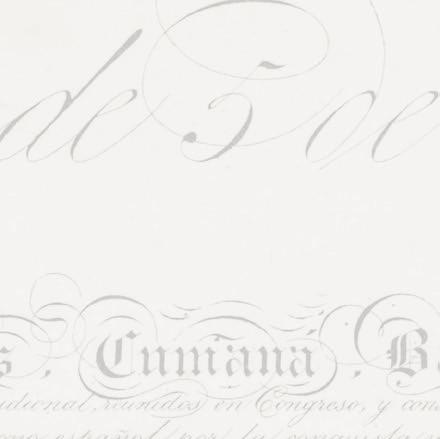
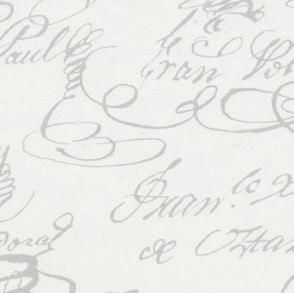
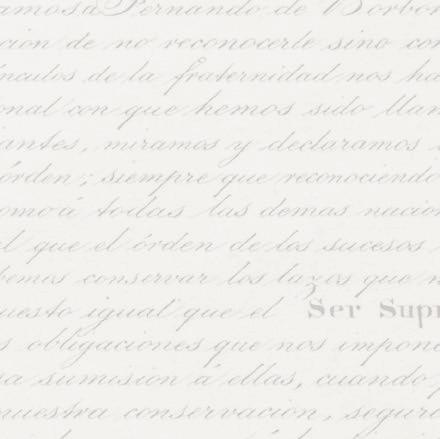


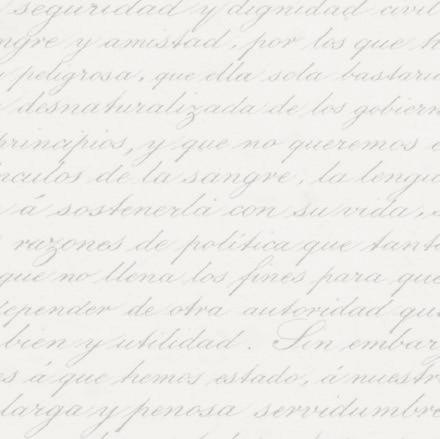





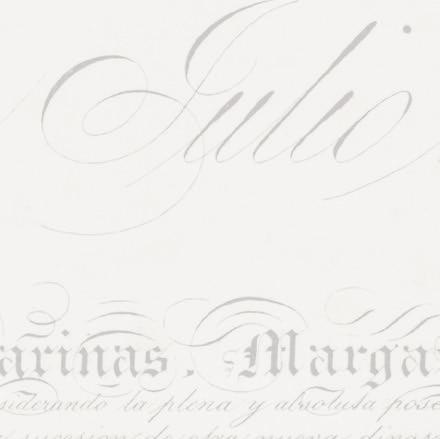
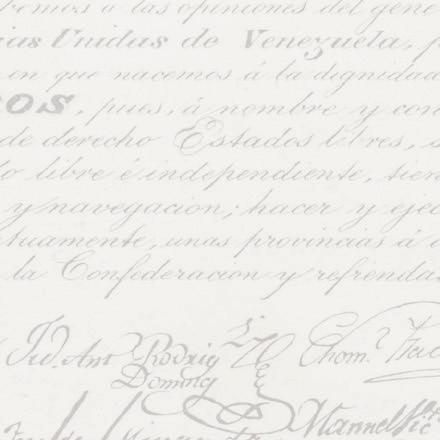
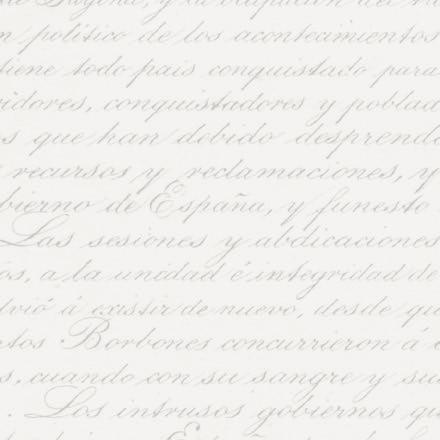





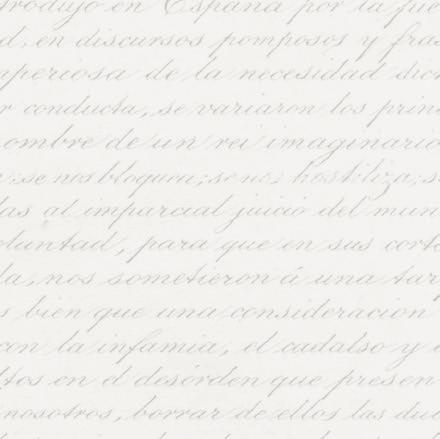
Lorenzo (Lorenz) Lüthy was born in Switzerland and moved in ca. 1840 to Venezuela. On June 28, 1841, he advertised as a professional calligrapher in the Caracas newspaper El Venezolano, taking subscriptions for a lithograph to be made under his direction in the United States to celebrate the 1811 Venezuelan Declaration of Independence. Lüthy had experience with artistic projects in Europe, and when he came to Venezuela, he must have signalled a need for printing of the Declaration of Independence. His plan was a success, and he arrived on August 28 in Philadelphia to arrange for the lithography, intending to return to Caracas with the finished product. The lithograph is indeed dated on the stone: 1841. He had a hundred copies made, and when he returned to Venezuela with the prints, he had them signed by the governor. In 1850 he immigrated to the US for good, and his immigration records show him arriving in New Orleans from San Juan, Nicaragua in 1850. From then on, he worked as an artist in and around New Hampshire, producing lithographs and paintings

The Declaration of Independence was passed by a Congress of the Venezuelan Provinces on July 5, 1811, decreeing to secede from the Spanish Crown to create a new nation, freed from 300 years of colonization. The statement announced a new nation called the Confederación Americana de Venezuela and was written primarily by Cristóbal Mendoza and Juan Germán Roscio. Seven out of ten provinces of the Capitanía General de Venezuela declared their independence after the abdications of Charles IV and Ferdinand VII. Three provinces did not participate in the Congress because they did not want to secede from the Spanish Crown. The declaration was ratified by Congress on July 7, 1811, and recorded in the minutes of Congress on August 17, 1811, in Caracas.
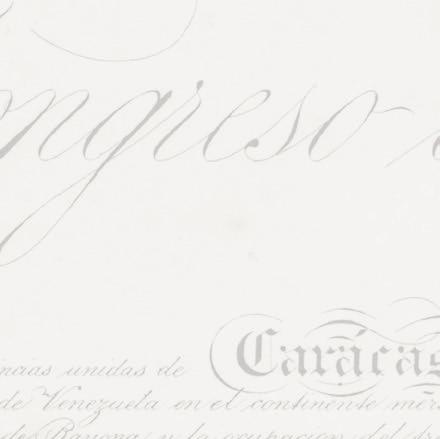
More info: www.zebregsroell.com/europe-and-america

Dutch School (19th century)
‘Gezicht op de Reede van Paramaribo’ - View of the Paramaribo Waterkant, circa 1835

Titled lower centre Watercolour on paper, H. 53 x W. 76 cm
It’s possible to date this view on the Paramaribo harbour fairly accurate to circa 1835. The church that was destroyed in the fire of 1821 was rebuilt in 1833 and can be seen on the right between the masts of two ships. On the left is the bridge over the Knuffelsgracht, the ‘English Bridge’. Before the fire, there were buildings to the left of the canal. In the front, slave ships can be seen lying at anchor - having just brought in the enslaved people that survived the long voyage - waiting for tobacco and sugar to be shipped to Europe. In the foreground, a tent boat or korjaal with several enslaved rowers can be seen, probably transporting their ‘owner’.
Provenance:
Stichting Edwina van Heek, the Netherlands Foundation named after Edwina van Heek-Burr Ewing (1872-1945), born in St. Louis, USA, and married to the Dutch textile manufacturer Jan Bernard van Heek.
9
A rare and splendid ArgentinianUruguayan relief carved Rhea’s egg commemorating the Battle of Obligado, 1845, on bronze and gilt-bronze stand
Montevideo, circa 1848
The carving on the egg commemorates the battle of Obligado, Argentina, 20 November 1845. The inscription in relief reads: “En mémoire de la bataille de Lobligado, gagnée le 20 Novembre 1845 par cinq batiments Francais sous les ordres du Capitaine de Vesseau Trehouart, et cinq batiments Anglais sous le commendement du Capitaine de Vesseau Otham, sur 3000 hommes de troupes Argentines, defendans quatre batteries redoutables dans la position la plus avantageuse de la riviere Parana. Après un combat meutrier l’ennemi abandonna les batteries ayans perdu environ 1000 hommes dans l’action. Montevideo le premier Janvier 1848 Amerique de Sud”
H. approx. 38 cm
Provenance: Collection Jacob Olie Jbzn, Amsterdam (circa 1880)
With the development of steam-powered sailing (which mainly took place in Great Britain, France and the USA) in the third decade of the 19th century, merchant and military ships became capable of sailing up rivers at a reasonable speed and with a heavy load. This technology allowed the British and French governments to avoid Argentine custom houses in Buenos Aires by sailing directly through the La Plata estuary. This avoided taxation and allowed them to export their products cheaply. Rosas’ government tried to stop this
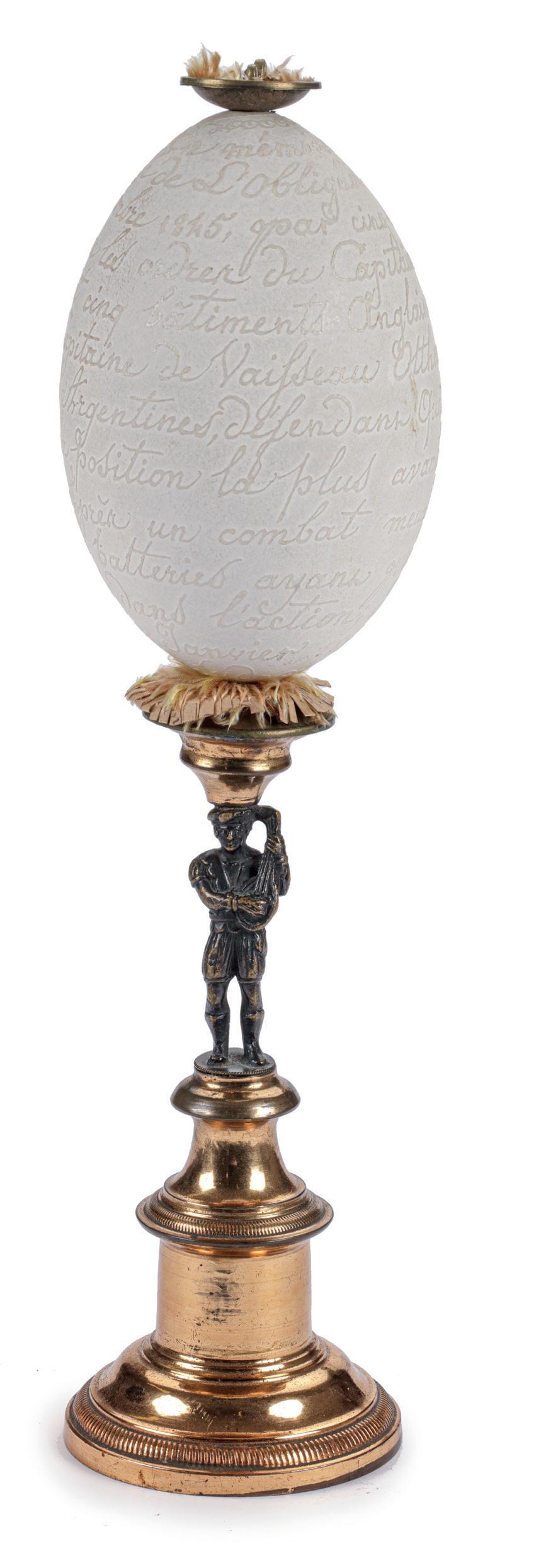
10
practice by declaring the Argentine rivers closed to foreign countries. However, the British and French governments did not acknowledge this declaration and decided to defy Rosas by sailing upstream with a joint fleet, setting the stage for the battle. The battle had a significant impact on the continent. Chile and Brazil changed their stance (until then, they were against Rosas) and supported the Confederation. Even some Unitarian leaders, traditional enemies of the Argentine caudillo, were moved by the events, with General Martiniano Chilavert offering to join the Confederacy army. It became a battle against European countries, like David and Goliath, who thought they owned the world. The United Kingdom and France eventually pulled back in exchange for the army of Rosa’s withdrawal from Uruguay.
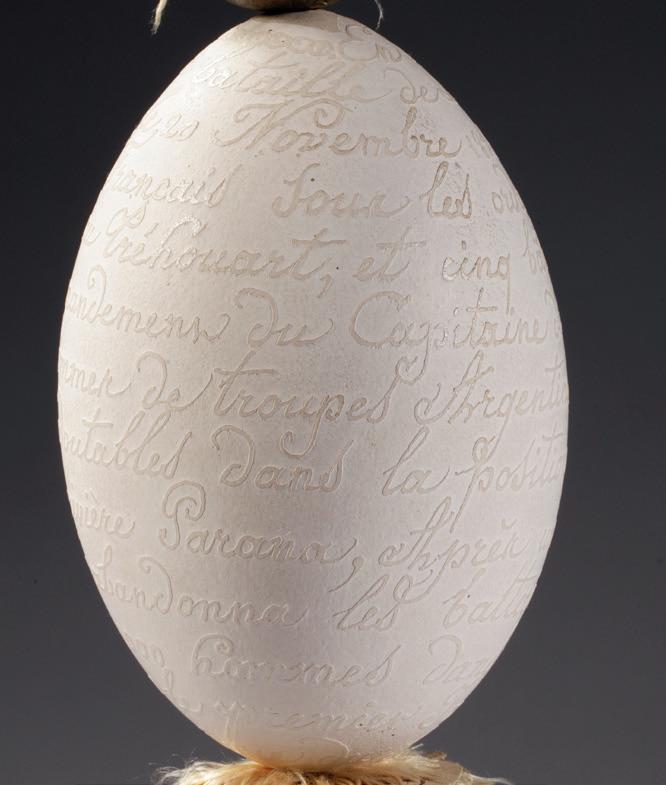



More info:
www.zebregsroell.com/europe-and-america
L. 53 x W. 39 x H. 4 cm / Weight: 2480 grams (basin) H. 30 x W. 12 cm / Weight: 2040 grams (ewer)


The quality of this ewer and basin, both in form and in chiselling and engraving truly is exceptional. They probably are by the same maker as a very similar ewer in the Catedral São Sebastião do Rio de Janeiro, and an ewer and basin, in the Mosteiro de São Bento, a monastery in Rio - both unmarked and dated second half 18th century. The most obvious difference is the handle which in these two ewers is in the form of a dragon instead of a woman. Brazilian silver, even very large pieces, mainly when ordered by the church, is very seldomly marked, and so far, no research into Brazilian silver marks has been conducted. The use of these hand-washing basins and ewers at the table was a welcome requirement due to the frequent absence of cutlery.
Literature:

- Humberto M. Franceshi, O Ofício da Prata no Brasil, Rio de Janeiro, 1988, p. 182-185
- Manuel Gonçalves Vidal, Marcas de Contrastes e Ourives Portugueses, Lisbon, 1974
11
A magnificent Portuguese-colonial Brazilian silver ewer and basin Rio de Janeiro, circa 1780, with an unidentified maker’s mark HSC, and town mark R for Rio de Janeiro


An extremely rare antique taxidermy Giant Anteater (Myrmecophaga tridactyla) 1st half 20th century, including a pre-convention CITES certificate
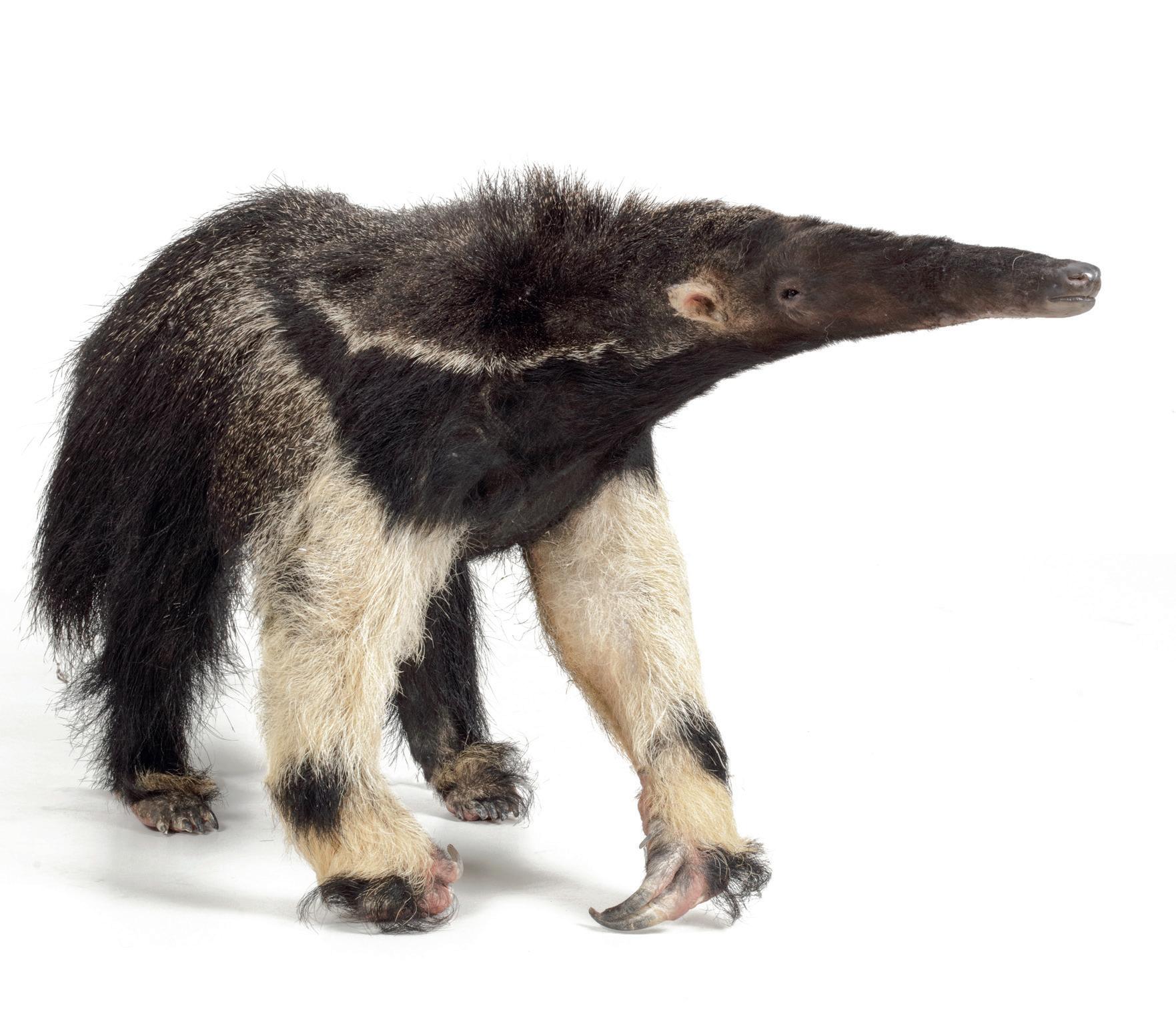
L. approx. 130 cm
Provenance: Private collection, the Netherlands (1940s-50s)
In the mythology and folklore of the indigenous peoples of the Amazon Basin, the giant anteater is depicted as a trickster foil to the jaguar, as well as a humorous figure due to its long snout. In one Shipib tale, an anteater challenged a jaguar to a breathholding contest underwater, which the jaguar accepted. After the two removed their pelts and submerged, the anteater jumped out of the water and stole the jaguar’s pelt, leaving the jaguar with the anteater’s pelt. In a Yarabara myth, the evil ogre Ucara is transformed into one by the sun. This myth emphasizes the nearly immobile nature of the anteater’s mouth, which was considered a burden. The Kayapo people wear masks of various animals and spirits, including the anteater, during naming and initiation ceremonies. They believe women who touched anteater masks or men who stumbled while wearing them would die or receive some sort of physical disorder.
12
Johann Christian Friderici (Heldburg 1766 - Cape Town 1804)
“Prospect van het eyland, en de rheede van St. Iago. Geteekend van Johann Christian Friderici MDCCLXXXIII / Verbeelding van de inwoonders op St Iago”
View of the island, and the roadstead of St. Iago. Drawn by Johann Christian Friderci / Depiction of the inhabitants on St Iago, Porto Praia, Cape Verde, 1783
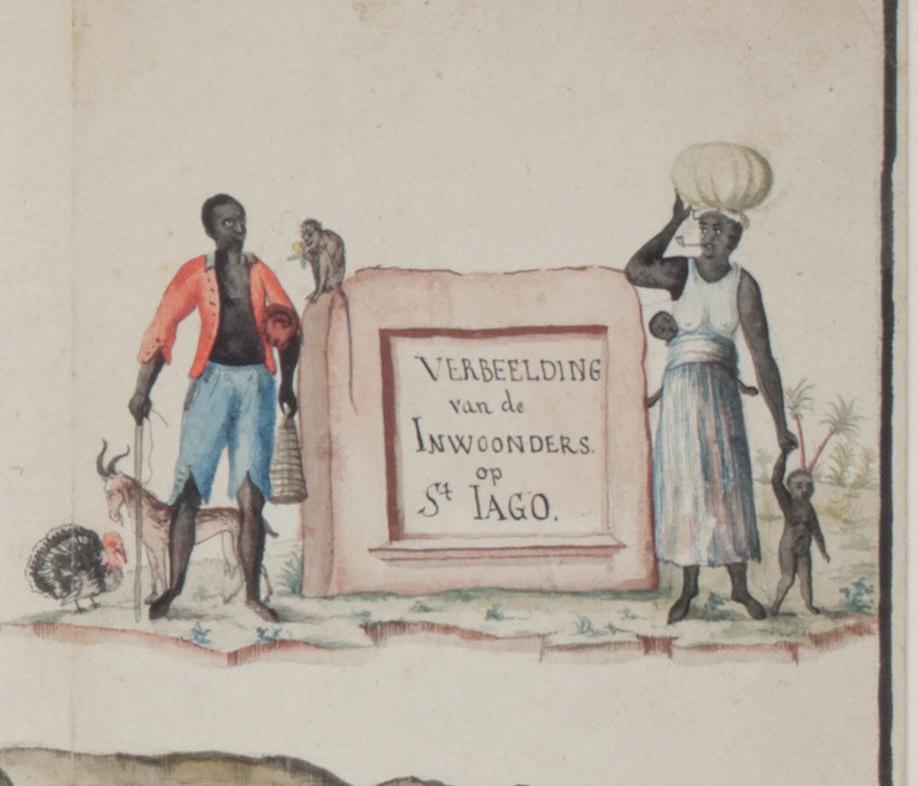
Watercolour with ruled black ink border on laid paper, watermarked Pro Patria with Maid of Dort, H. 29. 5 x W. 120.5 cm
Santiago’s Porto Praia is the main harbour of Cape Verde. It served as an important transportation hub for enslaved African people to the Americas and the restocking of ships bound for the Cape with salt and fresh foods. The cartouche in the top right depicts these two functions of the island. It shows an African family and examples of livestock: a turkey and a goat. The man wears clothes also seen in depictions of plantation guards in the West Indies of the same period.
The artist of this exceptional drawing has depicted the southern coast of the island at its full length but from an interesting angle, which causes the harbour to be hidden from view. Instead, the centre of attention is a farm. He also added a mixed fleet of British and Dutch ships peacefully together. Although at the time of the drawing (1783), these two nations were at war (the Fourth Anglo-Dutch War, 1780-1784), British and Dutch ships had been coming together without conflict since 1782. In 1781 Porto Praia was the scene of a large naval battle between the British and the French. The stake of the battle was access to the Cape Colony, which was still under Dutch control. The French, allies of the Dutch, managed to stall the British, though eventually, the Cape was lost to the Dutch and this set about the decline of The Netherlands as a colonial empire. Regarding the position of Frederici’s drawing in the cartographic history of Porto Praia, nothing compares in size, detail, and quality. We traced no record of this drawing in literature: it is not included in A. Teixeira da Mota’s history of the cartography of Cape Verde: Cinco seculos de cartografia das ilhas de Cabo Verde (1961, estampa IX), nor in the Dutch National Archive’s monumental Grote Atlas van de Verenigde Oost-Indische Compagnie. However, both have included several other Porto Praia views.
13
The most influential early modern panorama of Porto Praia is a 1772 engraving by Fleurieu after a lost drawing by Manevillete from 1763, titled Vue de la rade de la Praya dans l’ile de Saint-yago. This panorama was published in several atlases throughout the late 18th century. Frederici’s drawing shows the same area, but it is certainly not a copy. It has a slightly more east angle, and the picture is much more detailed and of higher quality than Fleurieu’s engraving. We also traced a watercolour view of St. Iago by James Forbes (1773-1861): Natives of St. Iago / A view of Porto Praya at the Island of St. Jago [1765], 45 x 29 cm. Biblioteca Nacional (Brasil). “Manuscript upon Brazil”, p. Vista 02. This drawing also has a cartouche with local inhabitants.
Everything we know about Johann Christian Frederici is from his time in the Cape of South Africa, where he made several significant maps, including, according to Cornelis Koeman: “The best map dating from the eighteenth and beginning of the nineteenth centuries of the south coast of the Cape Colony known to us.” This is the Caerte van den Zuydelijken oever van Afrika (Nationaal Archief, 4, TOPO 15 11), in which VOC bombardier Josephus Jones helped him. The earliest dated work known by Frederici up to now is from 1788: Kaart van de westkust tussen Saldanhabaai en Tafelbaai (Rijksmuseum RP-T-1914-17-6), a map more than 3 meters wide of the Cape Colony area. The date 1783 of the present Porto Praia view makes it by far Frederici’s earliest recorded work and the only one that does not depict a part of South Africa. Frederici was administered as a German immigrant into South Africa in 1784, just after the date of the St. Iago panorama, indicating that he probably made the drawing

when he was sailing with the VOC from The Netherlands to South Africa. Once he arrived in the Cape, he was first employed by Cape Governor Van der Graaff as a military surveyor.

The Grote Atlas mentions Frederici (as Friderici) as a VOC cartographer in South Africa since 1789 and assistant of cartographer J.W. Wernich. Wernich was German, which might explain why the maps that Frederici made in that period are in German, and the present panorama drawing is in Dutch. In 1791 he became a Lieutenant in the Cape Artillery. In this position, he made many impressive maps of the Cape, which are now kept in the Dutch National Archives, the Rijksmuseum, the British National Archives, and the South African Library of Parliament. The latter holds an invaluable view of the Battle of Muizenberg (1795) by Frederici as well. He also made some extensive maps in the famous Gordon Atlas (also Rijksmuseum), some signed, and others unsigned but attributed to him.
The Frederici/Friderici (or Frederici, Frideric, Fredericie etc.) family name is found amongst military service members employed by the VOC since the mid-17th century. Several Frederici/ Friderici families lived in the Cape in the late 18th century. All from different parts of Germany, worked for the Dutch East India Company and settled in the Cape. Most notable is the family of Joachim de Frederici, who moved from the Cape to Surinam in 1762, where his son Juriaen François Friderici became Governor of Surinam.
Johannes Schumacher (act. 1776-1777)
Vue du Cap de Bonne-Esperance de l’Ouest, Gezigt van de Kaap der Goede-Hoop, van het Westen; Vue du Cap de Bonne-Esperance de la Baie, Gezigt van de Kaap der Goede-Hoop, van de reede; Vue du Cap de Bonne-Esperance de l’Est, Gezigt van de Kaap der Goede-Hoop, van het Oosten
Three large bird’s eye views of the Cape of Good Hope, after drawings by Johannes Schumacher, now in the Swellengrebel Collection, engraved by Fringham, and published by T.H. Schneider, Amsterdam, circa 1777
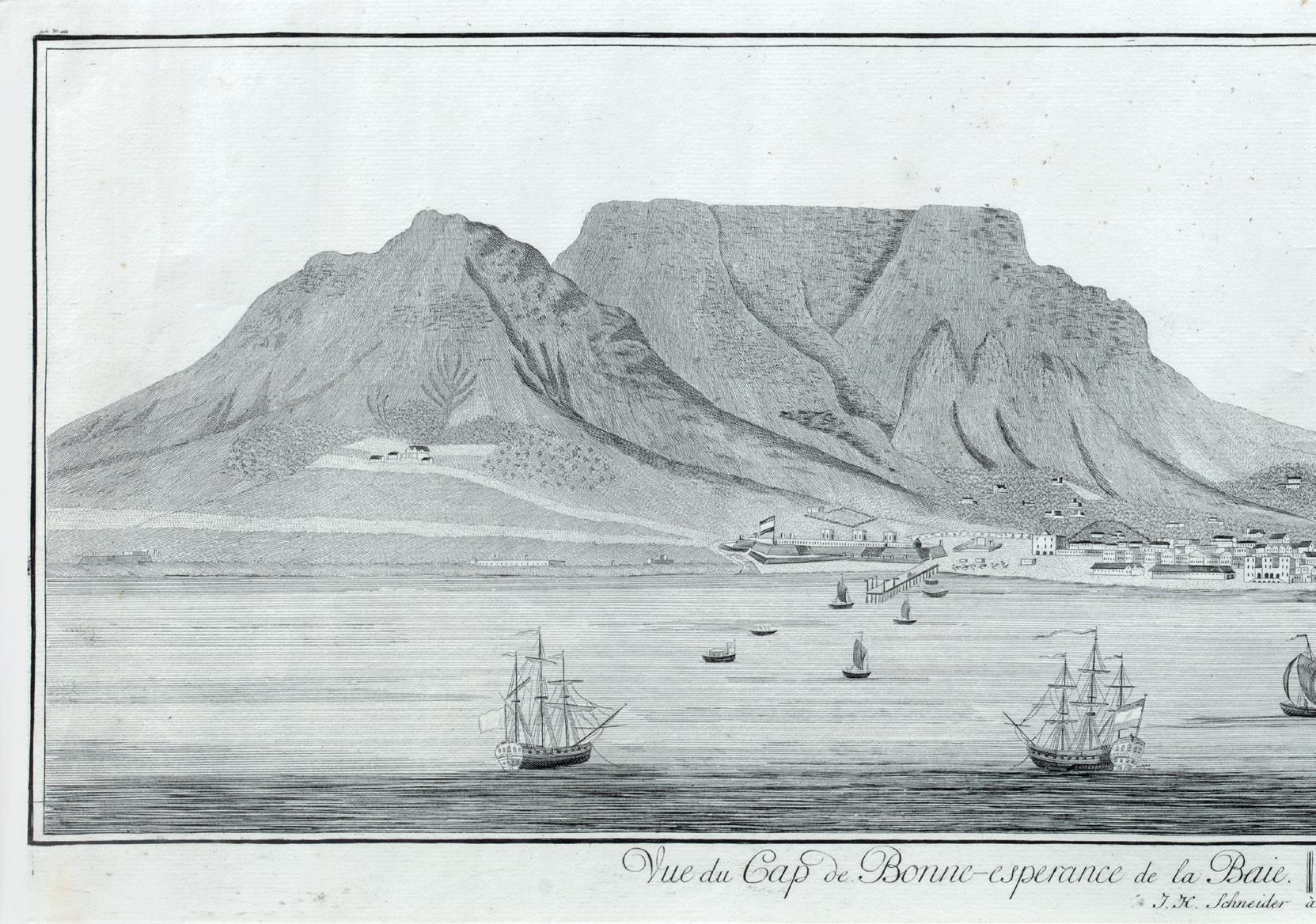
Approx. H. 26.5 x W. 76 cm each (not including the wide margins)
Very little is known about Johannes Schumacher or Johan Schoenmaker, as the Dutch knew him. He arrived at Cape of Good Hope as a soldier for the VOC in 1770, where he served in the company of Major H. Prehn. He accompanied Hendrik Swellengrebel Jr. (1734-1803) as a draughtsman on three journeys into the interior of the Cape, in 1776 and the beginning of 1777. During these journeys, Schumacher
14
made numerous drawings, including the three views of Cape Town on which the present prints are based. Unfortunately, only two of his pictures are signed and dated 1776. Fifty-six drawings by Schumacher, belonging to the Swellengrebel Collection in Holland, were published with an introduction by A. Hallema, Die Kaap in 17761777. Akwarelle van Johannes Schumacher uit die Swellengrebel-Argief te Breda, A.A.M. Stols, ‘s Gravenhage, 1951. After he had accompanied Hendrik Swellengrebel Jr. on his travels around the Cape, Schumacher was transferred to the company under the command of Captain and later Colonel Robert Jacob Gordon (1743-1795). He arrived at the Cape in October 1777. Gordon was a Dutchman of Scottish descent, a military man with vital academic interests and connections. During almost 20 years and at least four expeditions into the interior of the Cape, Gordon produced an enormous quantity of material in text and images of the topography, geology, meteorology, flora, fauna, and the inhabitants of the Cape during the last decades of the Dutch rule at the Cape of Good Hope. One of his helpers in this huge scientific undertaking was the aquarellist Johannes Schumacher, mentioned in Gordon’s diary as “Gordon’s draughtsman who fell off the wagon”. After the British take-over of the Cape, facilitated by Commander-in-Chief Gordon’s lack of resistance, he came

into a conflict of loyalties and committed suicide in 1795. The Atlas Gordon, a rich collection of drawings, watercolours, panoramas, and maps, is in the collection of the Rijksmuseum.
Hendrik Swellengrebel was the second son of Wilhelmina ten Damme and Hendrik Swellengrebel Sr, who, from 1739 till 1750, had been the only Cape-born Governor General at the Cape of Good Hope. After his retirement, Swellengrebel Sr moved to Holland, where he lived on his country estate Schoonoord in ‘De Kaapse Bossen’ (The Cape Forest) near Doorn. At a young age, Hendrik Jr. was sent by his parents to Holland, where he studied law at Utrecht University. After his father died in 1760, Hendrik Jr. lived in Schoonoord as a lord of the manor. Hendrik Jr. was the more cultured and scientifically minded of the Governor-General’s children. Alarmed by the dire situation at the Cape, Hendrik Swellengrebel Jr., in 1776, returned to his birth country to study its economic and agricultural possibilities but also its geography, natural history and ethnology. He published the findings of his three expeditions into the interior of South Africa in his Journal eener landtogt gedaan in het Noord Oosten der Colonie tot in’t Kafferland en langs de Zuid Oost-kust weder terug. The company

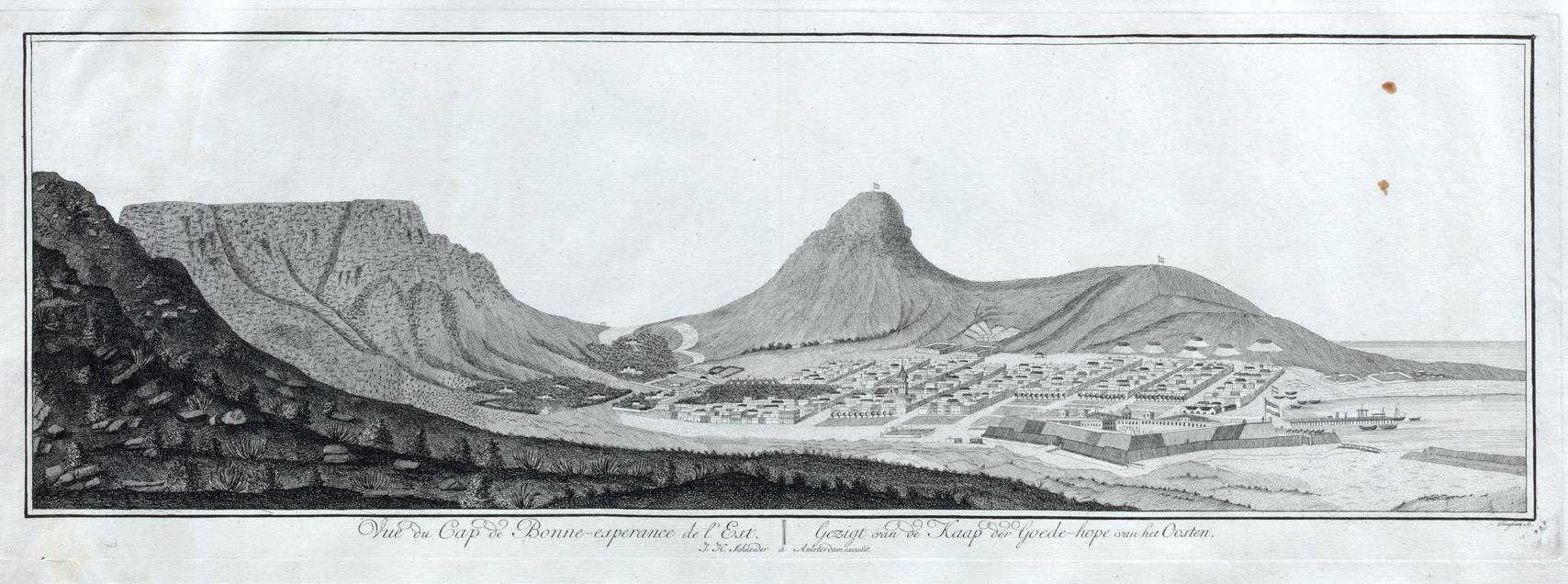
that joined him on this expedition included the physicist dr. Hagh, Swellengrebel’s friend Pieter Cloete, the draughtsman Johannes Schumacher, a cook, eight Hottentots, three wagons, 68 draft ox and seven riding horses. Schumacher painted 66 beautiful watercolours of the expedition. Almost nothing is known about Schumacher apart from a few scant references in Swellengrebel’s journal, where he is referred to only as ‘the draughtsman’. Despite his obscurity, Schumacher’s work is of the highest historical value. It forever captures the Cape in the late 18th century, just before the French Revolution and the English takeover.
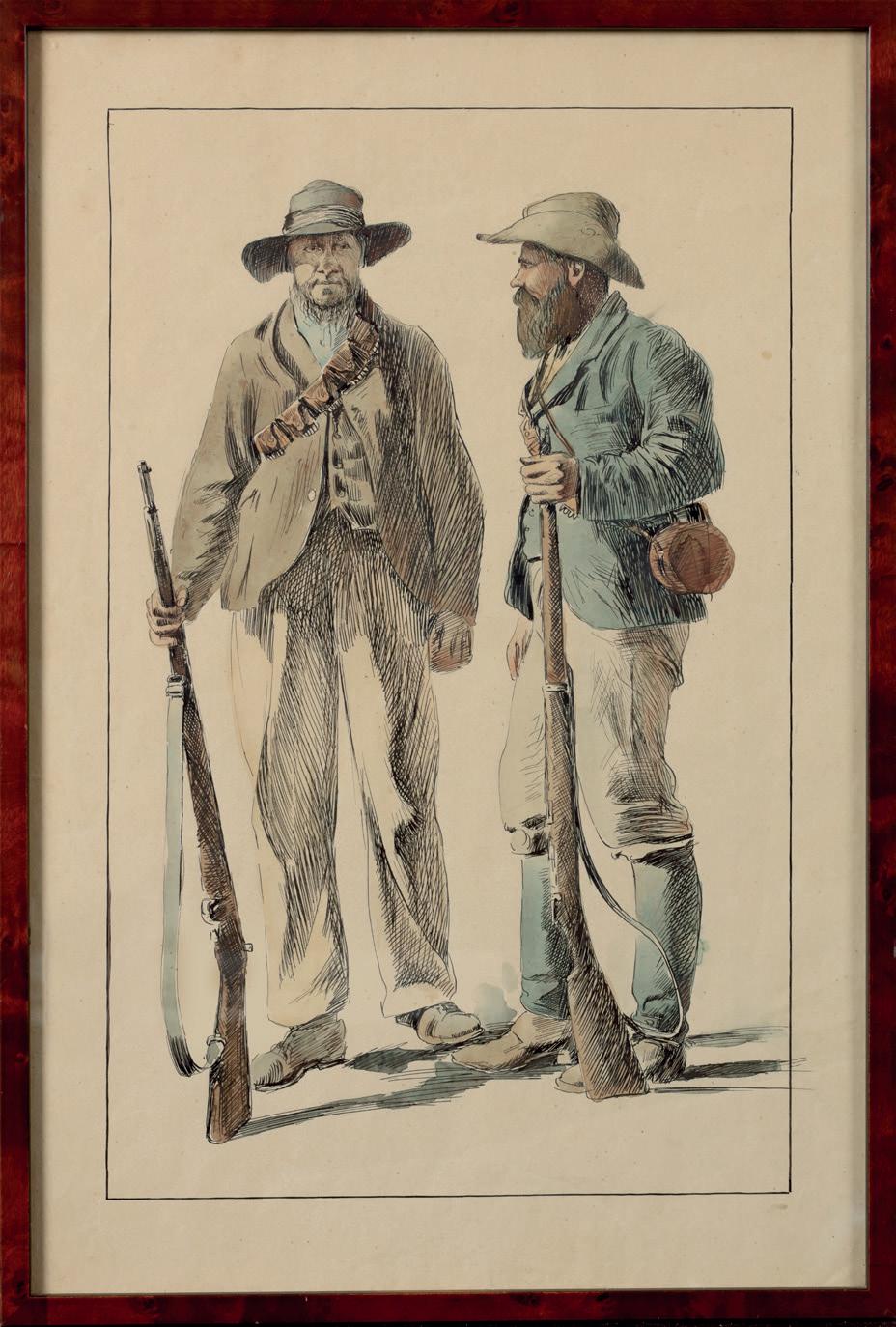
15 Jan Hoynck van Papendrecht (1858-1933)
Boer warriors in South Africa, 1902
Pen, ink and watercolour on paper, H. 36.3 x W. 22.6 cm
Hoynck van Papendrecht mainly painted military subjects, which he seldomly signed. He never was in SouthAfrica but illustrated the book by Louwrens Penning Verdedigers en verdrukkers van de Afrikaansche vrijheid, Karakterschetsen van mannen van beteekenis uit de Engels-ZuidAfrikaansche oorlog, The Hague, 1902 (Defenders and oppressors of the African freedom, Character sketches of important men in the Anglo-South-African war).
An extremely rare and splendid Algerian set of silver and red coral inlaid pistols and a toe-lock gun Late 18th century, the gun dated 1182AH in Arabic (1768)

L. 48 & 48.5 cm (pistols) / L. 174 cm (gun)
Red coral was prized for its rarity and a prominent decorative technique used on arms in the Ottoman Empire, particularly in Algeria. Similar coral-decorated firearms were amongst the gifts offered by the Dey of Algiers to George IV, the Prince Regent of Great Britain, in 1811 and 1819. They can now be found in the Royal Collection in Windsor Castle (inv.no. CH2075) and the Royal Armouries in Leeds. Thomas Jefferson, President of the United States of America, too was presented one by the Tunisian Ambassador Mellimelli on behalf of the Bey of Tunis in 1805-6 and is now in the Smithsonian (inv. no. 2000-6339).
The background to this last presentation was Ambassador Sidi Soliman Mellimelli’s highly colourful diplomatic mission to Washington D.C., of which as a result he successfully averted the impending threat of war between Tunis and the United States. When the USS Constitution captured Tunisian vessels, a crisis ensued. Threatened by war, Tunisian representative Ambassador Mellimelli was sent to the United States to negotiate a diplomatic solution. He told the Americans that coming home without
15
solving the matters wasn’t an option because he would be beheaded upon his return. This way, and perhaps with the splendid guns, he was able to gain the empathy of the Americans, resulting in a peaceful solution.
Literature: - D. G. Alexander, Islamic Arms and Armor in the Metropolitan Museum of Art, 2015 - N.A. Andersen, Gold and Coral: Presentation Arms from Algiers and Tunis, 2014, pp. 104-7 (ill. 132-35)

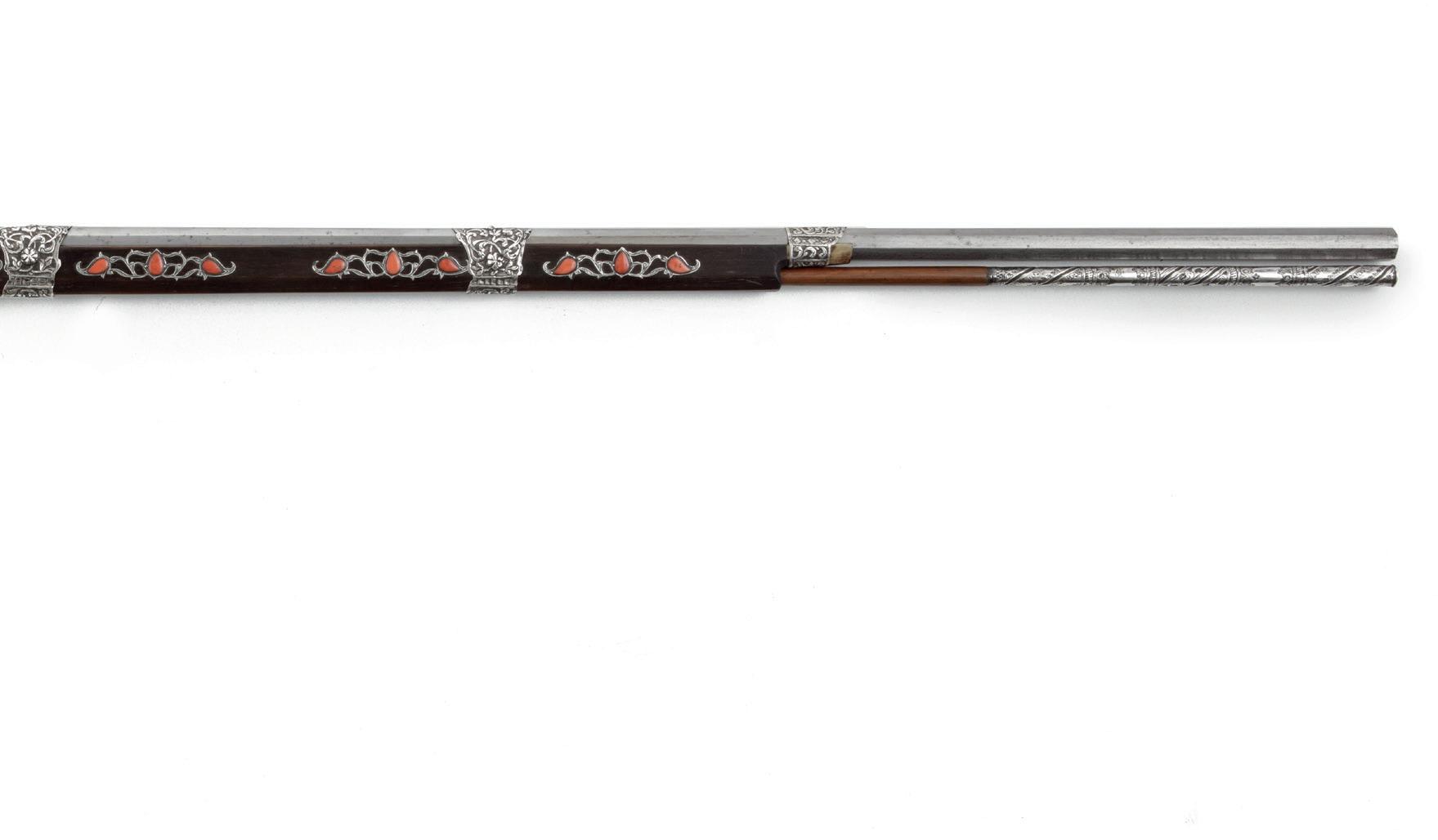
- R. Elgood, Firearms of the Islamic World in the Tareq Rajab Museum, Kuwait, 1995 - E.S. Brown, William Plumer’s Memorandum of Proceedings in the United States Senate, 1803-1807, New York, The Macmillan Co., 1923, pp. 487-48
More info: www.zebregsroell.com/africa
An extremely rare fossil of a Claudiosaurus (Claudiosaurus germaini) Madagascar, Morondava Basin, late Permian to early Triassic, approximately 260 million years old
H. 82.5 x W. 35 x D. 2.5 cm
This rare fossil was found in the Lower Sakamamena Formation in Madagascar, which was deposited in a wetland environment within a North-South-orientated rift valley, perhaps like Lake Tanganyika. The climate at the time of deposition was temperate, warm, and humid, with seasonal rainfall and possible monsoons. It is possible that these dinosaurs were semi-aquatic since the margins of contact in the carpals are poorly defined and therefore retained a lot of cartilage, providing a greater ‘degree of flexibility’ that would be beneficial for swimming. The small size of the skull, the nature of the palate and marginal dentition and the long neck, partially also found in Ardeidae (herons), point towards aquatic feeding habits.

16
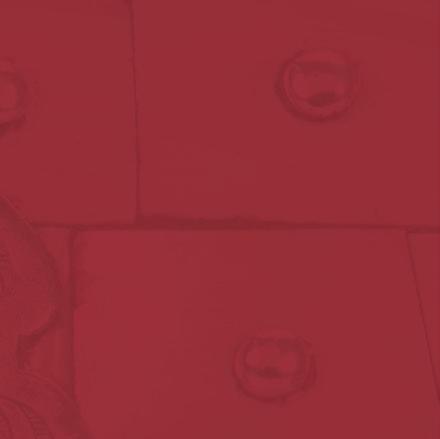


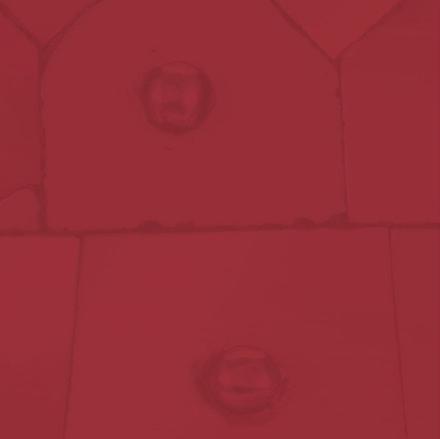








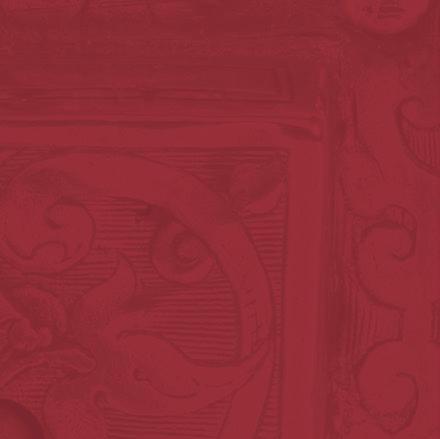


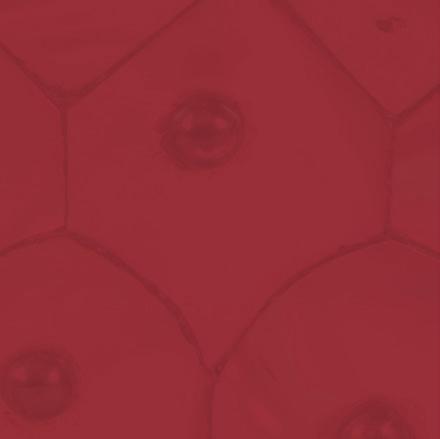







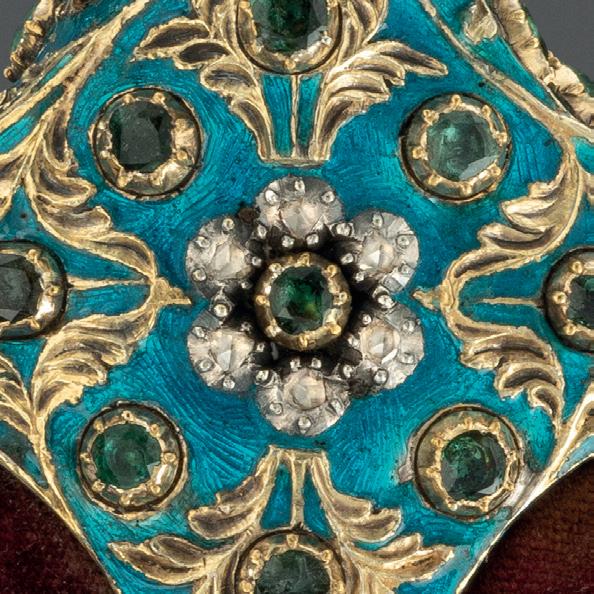
IndianOc
17
An exceptional Indian diamond, emerald, beryl and ruby inlaid enamelled silver and gold shamshir North India, Rajasthan, 19th century
L. 104 cm
This sword of exceptional quality has a blade of watered steel in the distinctive fortystep or kirk narduban pattern. It has two cartouches inlaid with nasta’liq inscriptions in gold, the first reading ‘aml Asad Allah, the second bandih-yi
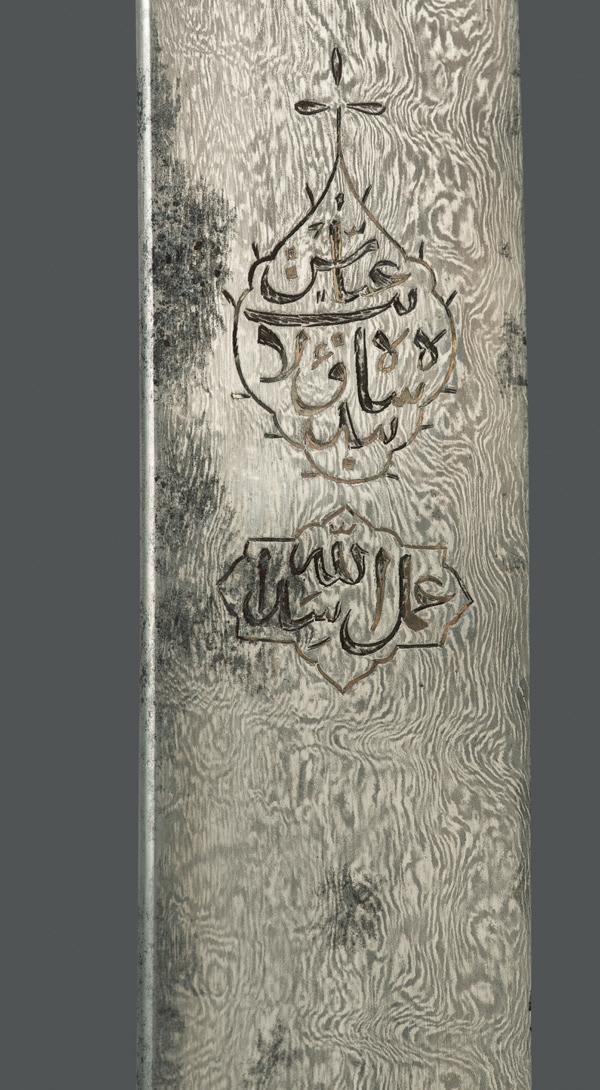
vilayat-i Shah ‘Abbas (‘Abbas, slave of the king of holiness). The maker’s inscription refers to the most famous swordsmith of the 17th century, ‘Asad Allah of Isfahan, after whom very many blades are inscribed to suggest that their quality was equivalent to that of the master’s blades, and the quality of the blade present most certainly reaches the work of the master.

The hilt is cast in silver, with the head of a makara forming the pommel and the quillon terminals, and that of a lion forming the terminals of the langets. The whole is cast with a pattern of scrolling foliage forming cloisons filled with turquoise enamel laid over a hatched ground to provide a textured pattern.
The foliate decoration is set in kundun style with emeralds, forming the blossoms on the foliage, with three rosettes
formed of a central emerald surrounded by small diamonds running down the centre. Behind the head of the makara that forms the pommel are two large diamonds. The eyes of each animal are created with rubies, as are the ears of the lions, while the makaras have ruby tongues, each hinged to move up and down.
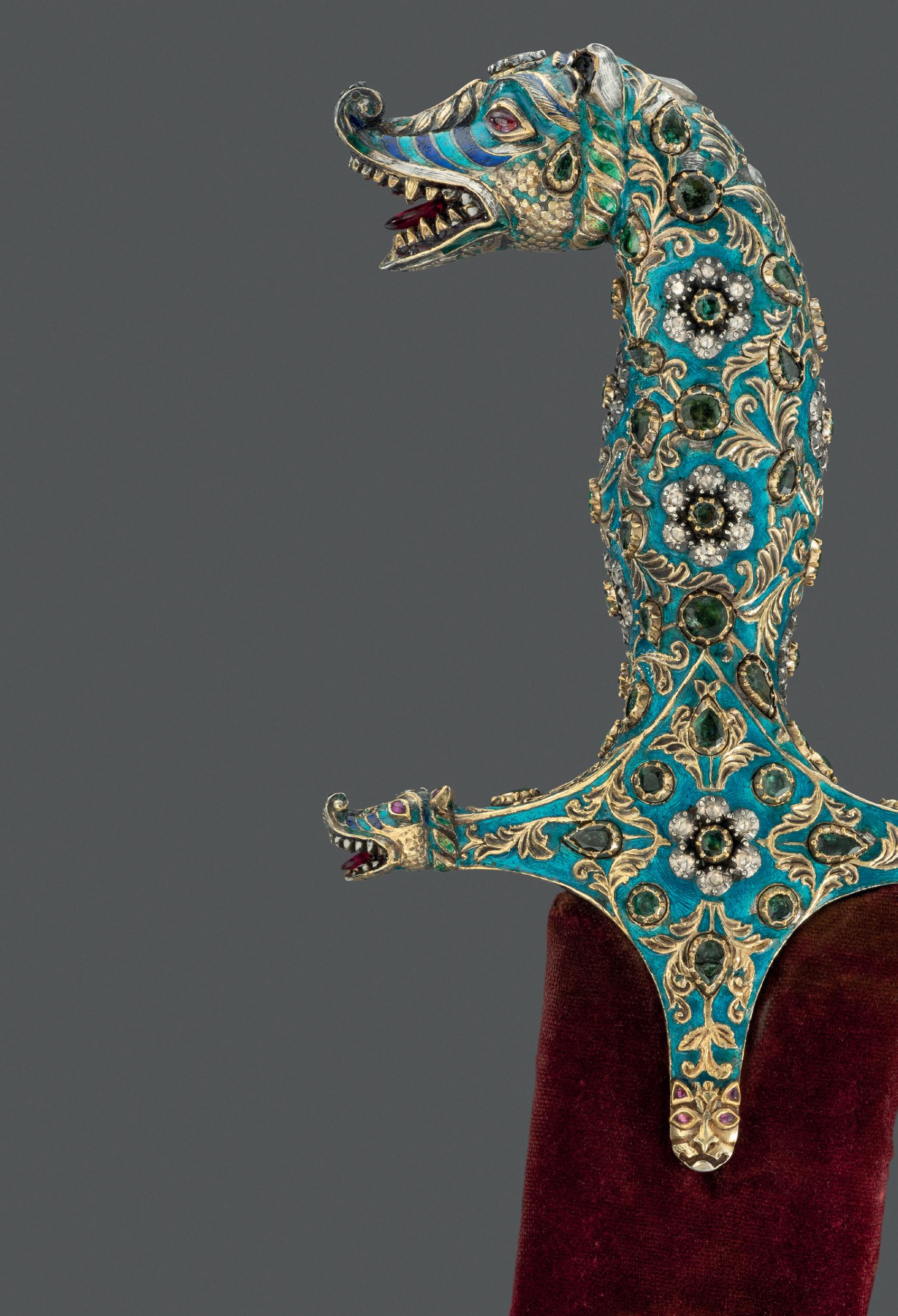
Makara are mythological creatures composed of elements of the elephant, crocodile, boar, fish and peacock, which appear frequently in Hindu and Buddhist temple iconography as vehicles for the goddesses of the Ganges and Narmada rivers, and of the sea god Varuna. They are the protectors of thresholds and gateways, responsible for guarding throne rooms and temple entrances.
A comparable but later makara hilt in blued steel is in the armoury of the Rathores at Jodhpur and has a similar blade with the same inscription.
Literature: Robert Elgood, Rajput Arms and Armour, Niyogi Books, New Delhi, 2017, p. 366
More info: www.zebregsroell.com/indian-ocean
18
An exceptional Indo-Portuguese colonial mother-of-pearl veneered casket with silver mounts India, Gujarat, 2nd half of the 16th century, the silver mounts Goa or probably Lisbon

H. 16 x W. 24.6 x D. 16.1 cm
An exceptional Gujarati casket with a rectangular box and truncated pyramidal lid (with slopes on each side and a flat top) made from exotic wood, probably teak (Tectona grandis), covered with a mother-of-pearl mosaic. The tesserae, cut from the shell of the green turban sea snail (Turbo marmoratus, a marine gastropod) in the shape of fish scales are pinned to the wooden structure with silver ball-headed
nails. The casket is set on bracket feet on the corners. The masterfully engraved decoration of the silver mounts follows the most refined and erudite Mannerist repertoire of rinceaux and ferroneries dating from the mid-16th century. The high quality and refinement of the silver mounts and, likewise, the silver nails that replaced the original brass pins used to hold the motherof-pearl tesserae in place indicate the work of a silversmith probably working in Lisbon in the second half of the 16th century.
The Indian origin of this production, namely from Cambay (Khambhat) and Surat in the present state of Gujarat in north India, is, as for the last three decades, consensual and fully demonstrated, not only by documentary and literary evidence - such as descriptions, travelogues and contemporary archival documentation - but also by the survival in situ of 16th century wooden structures covered in mother-of-pearl tesserae. A fine example is a canopy decorating the tomb (dargah) of the Sufi saint, Sheik Salim Chisti (14781572) in Fatehpur Sikri in Agra district in the state of Uttar Pradesh, north India. This is an artistic production, geometric in character and Islamic in nature, where usually the mother-of-pearl tesserae form complex designs of fish scales or, similar to the dishes also made using the same technique, with the thin brass sheets and pins, stylized lotus flowers. The truncated pyramidal shape corresponds, like their contemporary tortoiseshell counterparts also made in Gujarat, to a piece of furniture used in the Indian subcontinent within the Islamic world prior to the arrival of the first Portuguese. This shape, in fact, is very old and peculiar to East-Asian caskets, chests or boxes used to contain and protect Buddhist texts, the sutras.

A similar chest is the famous and large reliquary chest from Lisbon cathedral that once contained the relics of the city’s patron saint, Saint Vincent. Both match in shape, having the same kind of socle or pedestal and bracket feet, and in their engraved silver mountings, featuring the same type of refined, erudite decoration. Their differences lie in the silver borders that frame the entire length of the edges of the chest (both the box and the lid), pinned with silver nails, and on the lock plate, shaped like a coat of arms in the Lisbon example. Given the exceptional dimensions of the reliquary casket from Lisbon cathedral (48 x 65 x 42 cm), the goldsmith responsible for its mounting opted to place two bracket-shaped side handles instead of a top handle, as in our casket. Another similar example, probably mounted in the same Lisbon workshop as the other examples from this small group, belongs to the Seville Cathedral and remains almost unknown. It shares many features in common with the one in the Lisbon cathedral, namely the use of engraved silver borders running along the edges, protecting the casket. An aspect that distinguished it from the others is the use of tesserae cut from Turbo marmoratus, which show a higher iridescence but also cut from the shell of the pearl oyster, probably Pinctada radiata or Pinctada maxima, given the whitish hue of the base colour. Nevertheless, the type of square-like lock plate is similar to our casket. Another example, slightly larger but with less silver mounts, is in the collection of the Kunstkammer Wien in the Kunsthistorischen Museums in Vienna (inv.no. GS Kap 5) and belonged to the Habsburger Family. The same type of large silver ball-headed nails seems to be characteristic of this small, rare and important group, of which the present example is the second known example in private hands, given that the others have been in their current place since the time they entered their collections in the late 16th century or the first years of the 17th century.
More info: www. zebregsroell.com/ indian-ocean

A fine Indo-Portuguese inlaid teak wood figure of Nagini India, Goa, 17th century

H. 55 cm
The sculpture can be perceived as such but probably is one of four legs of an Indo-Portuguese contador. These famous profusely inlaid cabinets are possibly the embodiment of colonial furniture.
Depicted here are a Naga with a woman’s head and torso and a curling serpent’s lower body. Nagini is the female version of the Naga, the Sanskrit word for a deity or class of entity or being, taking the form of a giant snake.
In Hindu religious culture, Nagas are considered nature spirits closely associated with water, rivers, lakes and seas, protectors of springs, wells and rivers, propitiating rain, and thus fertility. They are object of great reverence even in modern times and especially in South India where they are still worshiped as female deities particularly by women devotees, bringing them fertility and prosperity. The Nagini serves an apotropaic function when part of a cabinet: to ward off evil intentions by protecting the contents hidden in this type of furniture used to store valuables, such as money, documents, jewellery and precious objects.
19
An important bone inlaid ebony AngloIndian side chair India, Coromandel Coast, 1650-1680
H. 97 x W. 56.5 x D. 48 cm
This rare and important ebony chair is related to a fine group of carved ebony pieces. A mixture of Hindu and Christian motifs is fused, suggesting that the furniture makers were Indian converts to the Portuguese Catholic faith. These low-relief carved chairs with dense foliage and birds adorning the splats were not in the Dutch taste and seldom turn up in the Netherlands. Since they do turn up in English country houses, they were probably intended for the English market. Therefore, the present chair was perhaps made in Madras along the southern Coromandel Coast, where the English influence was much stronger than the Dutch.
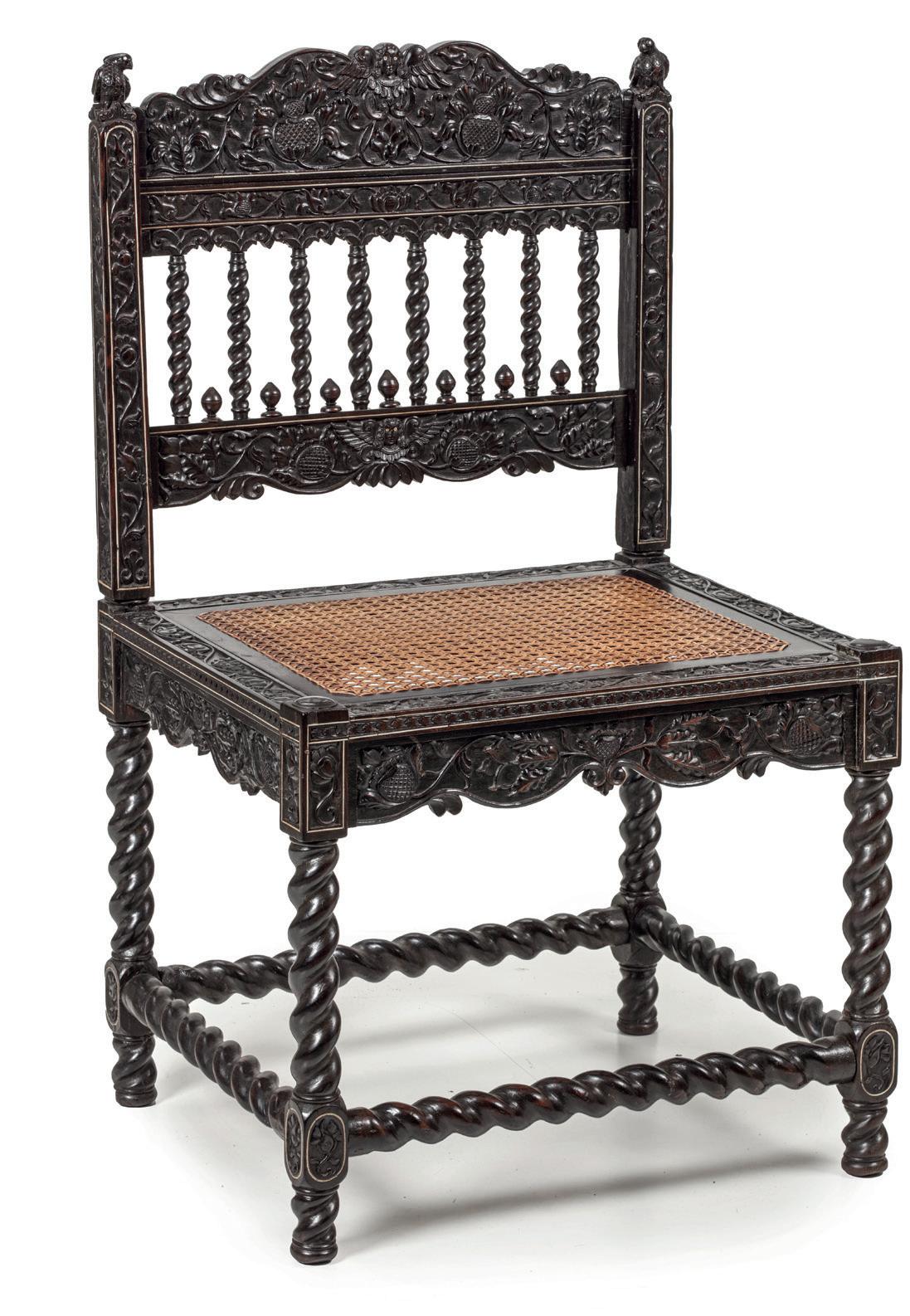
The present chair is profusely carved in low relief with bold floral motifs, the top and bottom back rail centred by winged (Christian) angels or cherub heads. The uprights are mounted with finials in the form of parrots, a common symbol in Dravidian Hindu art from South India and Sri Lanka.

20
Provenance: Collection Jan Veenendaal, the Netherlands
A
box

H. 17.8 x W. 33 x D. 22 cm
mounts
The low-relief carving of curling vines and large flowers is quite like engravings in Dutch silver of the same period. This type of carving belongs to the earliest type of carving in ebony, ordered by the Dutch in Asia. The Coromandel Coast harboured an important industry for producing carved ebony furniture before the Dutch were there. In the early 17th century, the Dutch presence on the ‘Cust’ became more substantial. They ordered their ‘Custmeubelen’ or coastal furniture here because initially, that was the only place where they could get the highly favoured ebony furniture. Due to severe famines and many wars at the Coast in the second half of the 17th century, many local furniture makers and other craftsmen had to sell themselves into slavery to the Dutch. Many ended up practising their craftsmanship in Batavia.
21
fine Dutch-colonial ebony
with silver
Coromandel Coast, Masulipatnam, or Batavia (Jakarta), 2nd half 17th century
A fine pen-engraved bone inlaid rosewood writing box India, Vizagapatam, mid-18th century
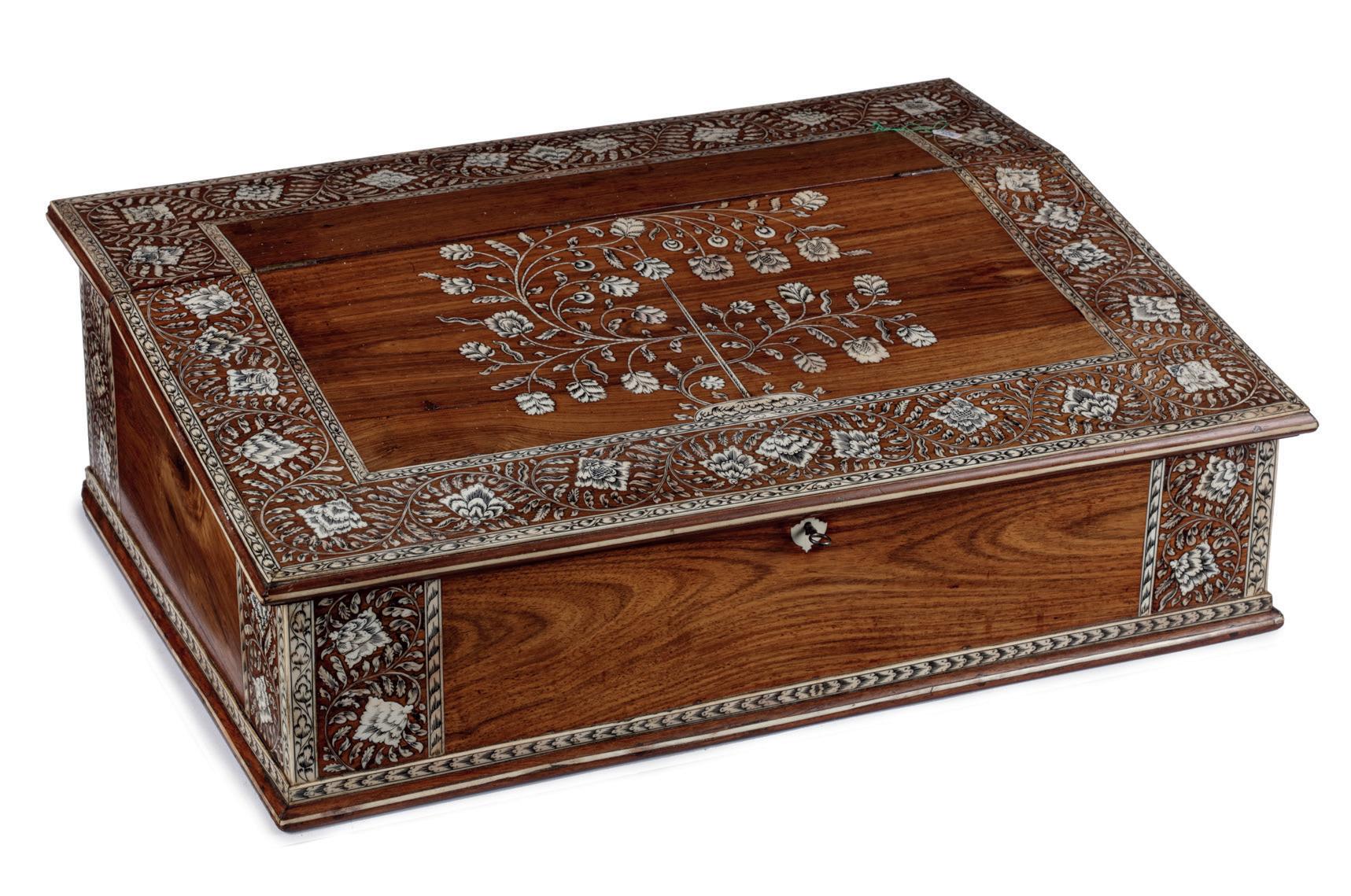
H. 18.6 x W. 58 x D. 43.2 cm
The distinctive feature of this writing slope is the flowering tree in the centre of the slope. Amin Jaffer comments on this kind of decoration: “Towards the mid-eighteenth century lids came to be less densely inlaid and were usually decorated around the edges with broad floral borders and at the centre with a circular or rectangular floral design, a floral spray or a flowering tree.” (A. Jaffer, Furniture from British India and Ceylon, London, 2001, p. 188). The same designs of a flowering tree can be seen in mid-18th century chintzes from Masulipatnam, the Dutch trade post along the Coromandel Coast.
Many similar writing boxes were made for Dutch and English East India Company officials moving around between many faraway trading posts. Two writing slopes of this type belonged to Governor Clive of India.
22
23
A large pen-engraved bone inlaid ebony document box India, Masulipatnam, 1st half 18th century
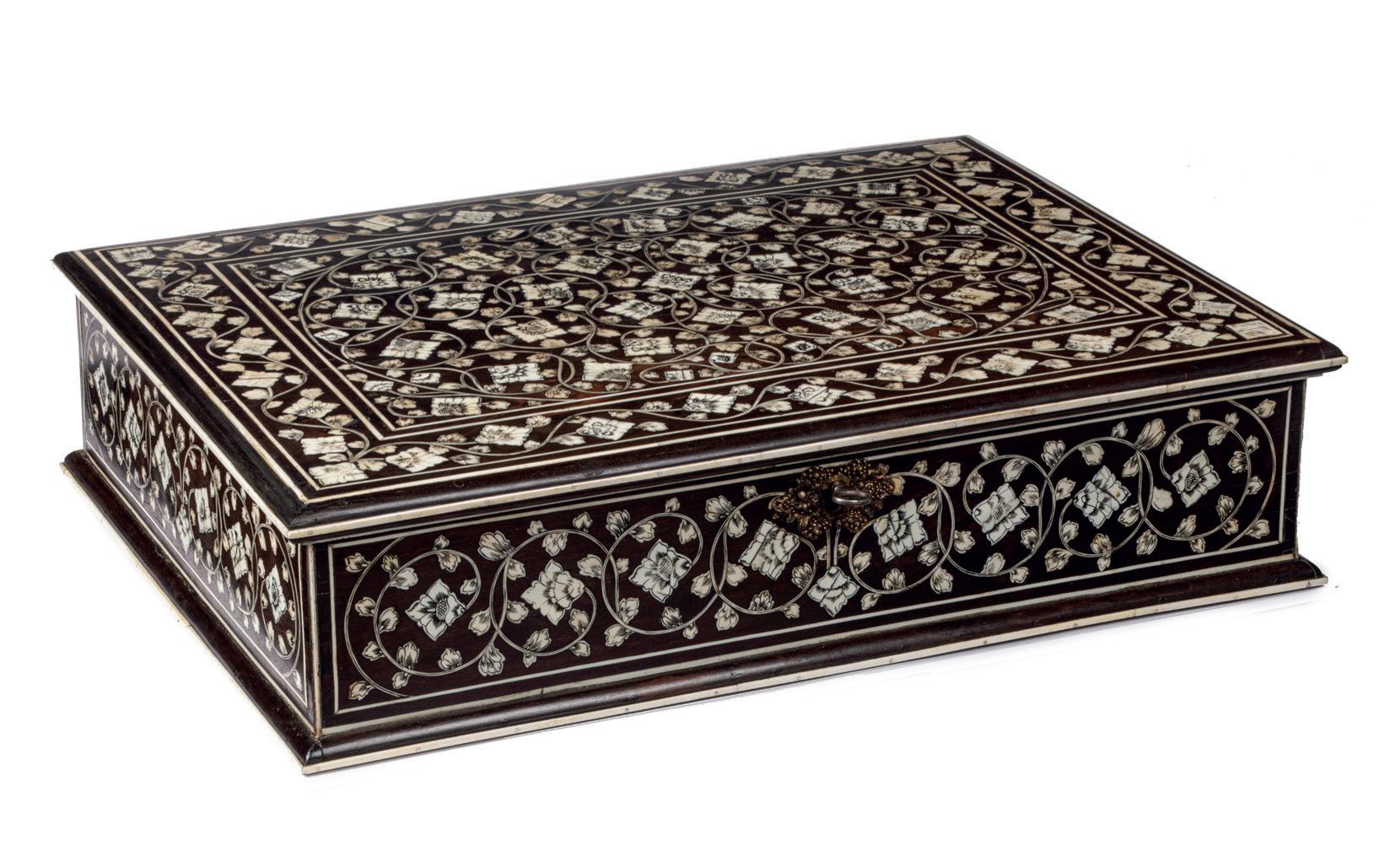
H. 10.8 x W. 47 x D. 34 cm
24

A Portuguese-colonial tortoiseshell veneered document box with elaborate silver mounts Probably India, Gujarat, 2nd half 17th century
H 11 x W. 47.5 x D. 32 cm
Provenance: Collection of a Marquess, Portugal
A pair of Sri Lankan Rococo coromandel wood side chairs Galle, circa 1770-1780

H. 103.5 x W. 51.5 x D. 48.5 cm
The chairs are in the rococo style with shell motive at the top of a wavy splat and later upholstery. Coromandel or calamander wood (Kalumediriya dava) is sometimes called the king of timbers. It is heavy and beautifully figured. The wood is usually brown with black stripes and occasionally black with brown stripes. The tree that provides coromandel wood is the Diospyros quaesita, which used to be abundant in the humid
25
jungles of southern Sri Lanka and was also found along the Coromandel Coast of India. The Dutch discovered the attractive wood in Sri Lanka in the early 18th century and used it, initially locally, but by the end of the 18th century, they also exported it. In the early 19th century, there was such an explosion of demand, especially in England and France, that the slow-growing trees were felled too young and mature trees became scarce. Today the wood is heavily protected, and it is impossible to obtain large pieces. An identical chair is illustrated in Furniture of the Dutch Period in Ceylon, by R.L. Brohier, Colombo 1993, Plate XI, fig. 3. Brohier dated this type of chair to the early 18th century, which is probably a bit too early. Similar chairs can still be found in the Wolvendaal Church in Colombo today.
26
A Sri Lankan ebony and cane ‘Easy chair’ Galle, mid-19th century

H. 101 x W. 61 x D. 78.5 cm H. 38.5 cm (seat height)
Ebony furniture produced in the Galle District in the first half of the 19th century was very popular with British high officials and planters in Sri Lanka. Several chairs of this form are known, with slight variations in the elaborate and ornate carvings of the top rails, front rails, armrests, and legs.
27
A fine ruby inlaid silver and gold Sinhalese Kasthane


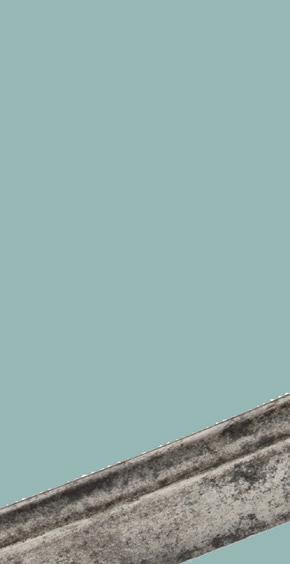
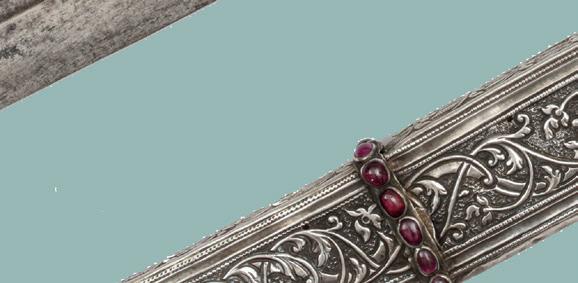




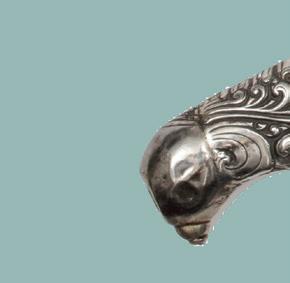

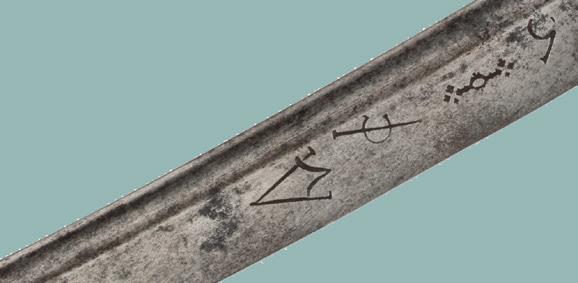
Sri Lanka (Ceylon), Kingdom of Kandy, the blade marked VOC Amsterdam and dated 1776, the hilt late 18th century, marked A.M.

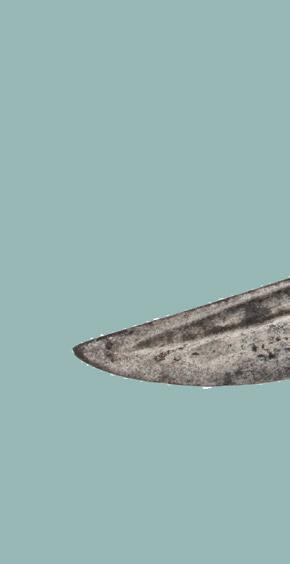

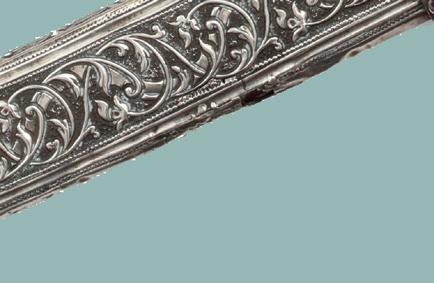
L. 64.7 cm (sheathed)
L. 61.8 cm (sword)
L. 45.5 cm (blade)
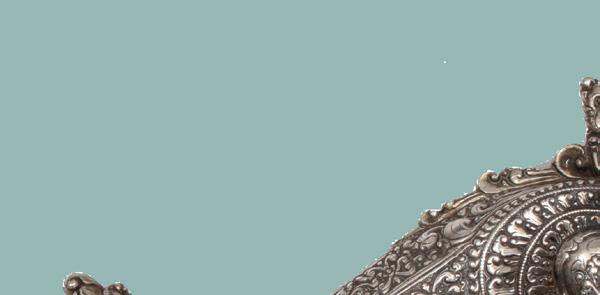



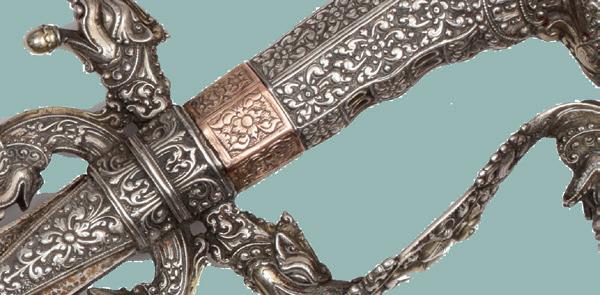

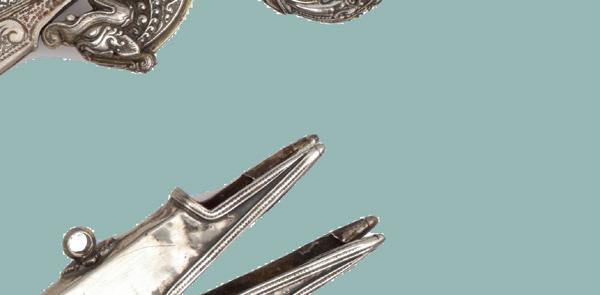



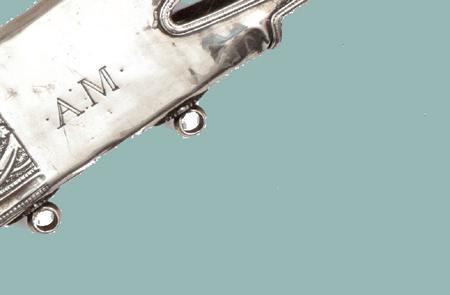

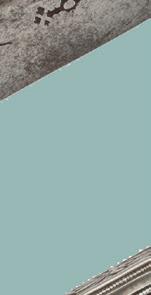

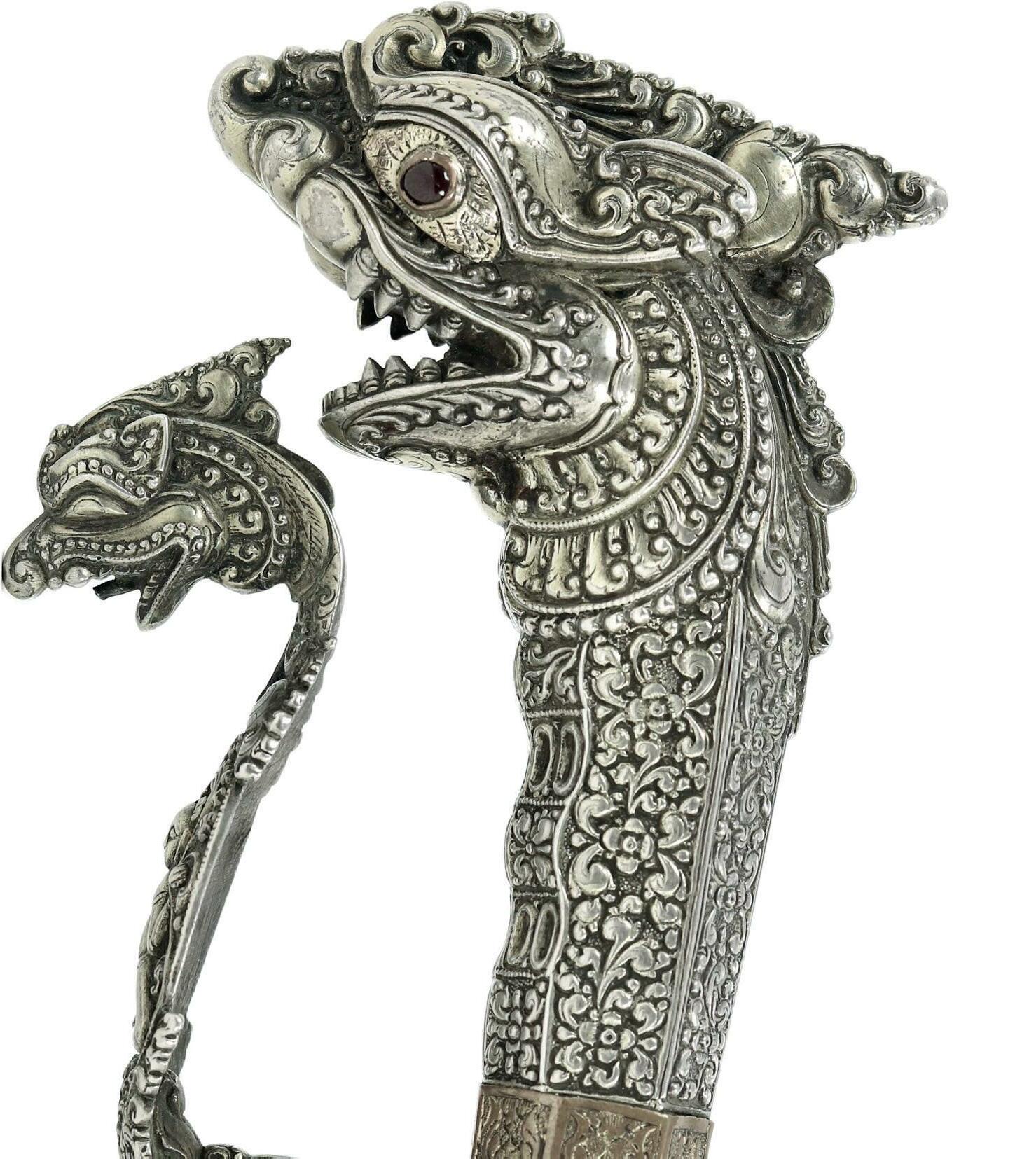
A black coral, silver and gold Sinhalese piha-kaetta
Sri Lanka (Ceylon), Kingdom of Kandy, mid-18th century
L. 27 cm
The kasthané is the national sword of Sri Lanka. It seems to have emerged in the 16th century following the first contact with Europeans. The general design shows influences from various cultures, but their execution is wholly Sinhalese, exhibiting classic Sinhalese motifs and lion head pommels after the royal emblem. Silver-mounted kasthane, like this example, were made in the royal workshops of the King, who bestowed them upon noblemen and local chieftains as symbols of rank and office or as gifts to diplomats. Gold was reserved for the king himself and silver for his highest officials, Adigar, who were feudal lords that also acted as ministers and governors. The piha-ketta is often called ‘the Kandyan-knife’, but some suggest it was intended as a pageturner, not a knife.


In the collection of the Rijksmuseum, two similar kasthane, one gold and one silver, and a piha-kaetta in gold can be found, together with the famous Lewuke’s Cannon, as a result of the looting of the VOC after subduing the Kingdom of Kandy.
More info: www.zebregsroell.com/ indian-ocean
28
ainaec



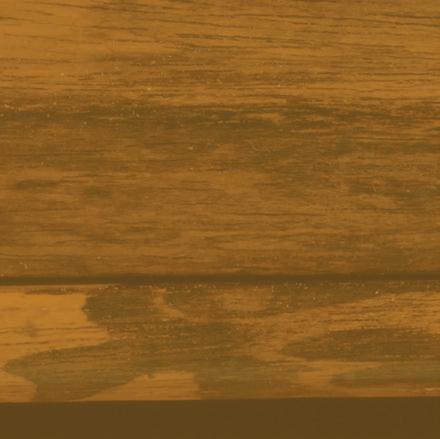







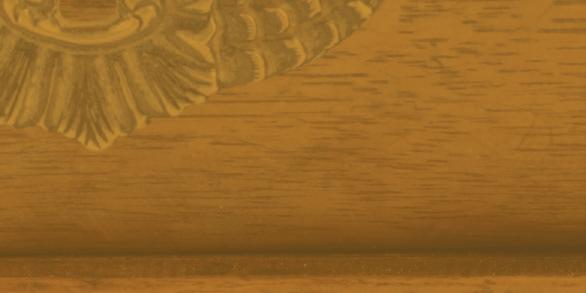
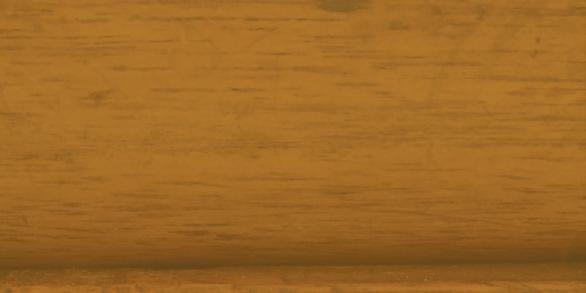


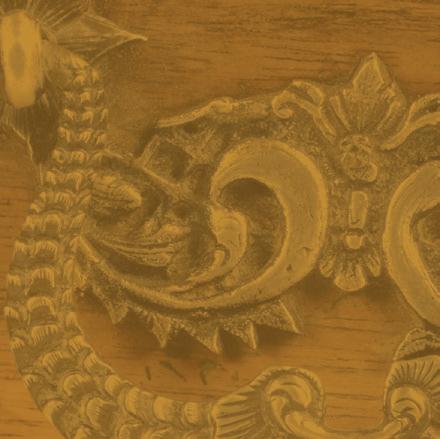

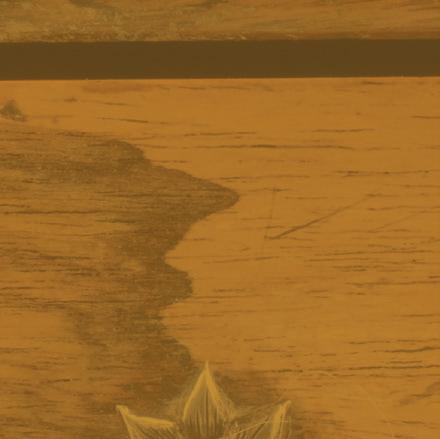
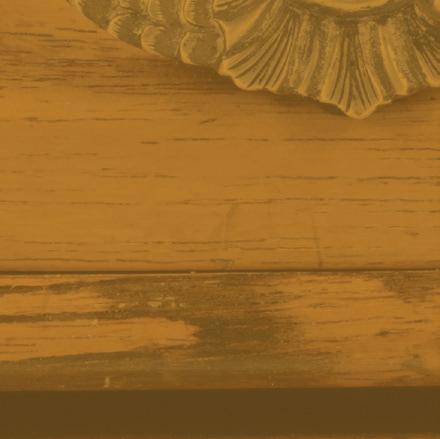




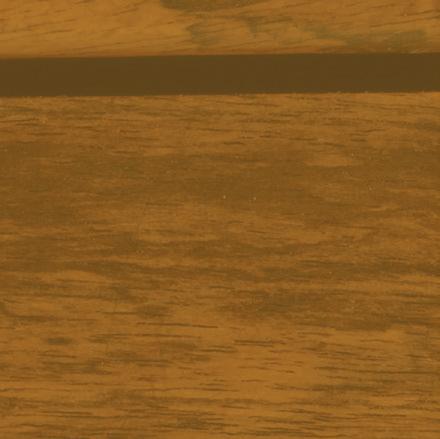
IndonesianArc
hip e lag o & O
A collection of fine Indonesian antique gold jewellery
Provenance: Private collection, Switserland
Gold ring with ruby Central Java, 8th-12th- century


Gold beads necklace with centre pendant with ruby Java, 12th -15th century

Gold ring with emerald Central Java, 8th--10th- century
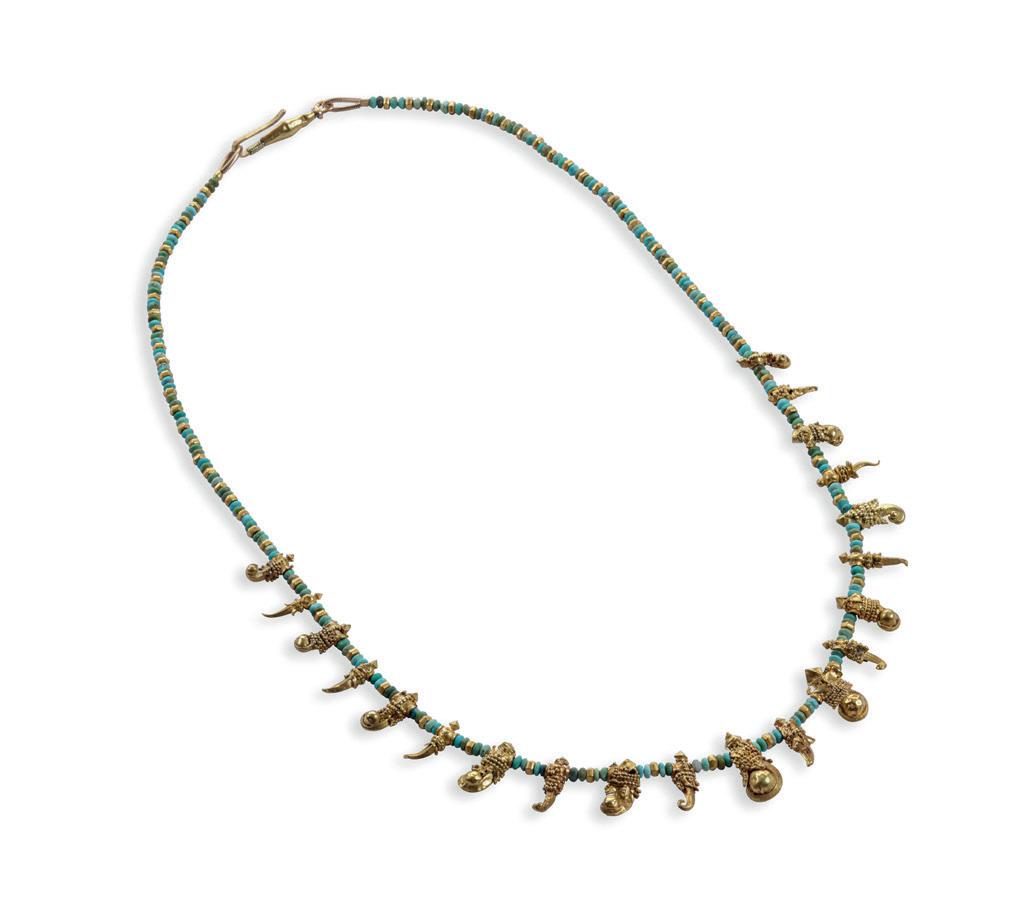

Gold chained elements with centre pendant Java, 8th--12th- century
Fine necklace with gold and turquoise beads and pendant Indonesia, 15th- century
Gold ring with ‘Sri’ inscription, Central Java, 8tth--12th- century
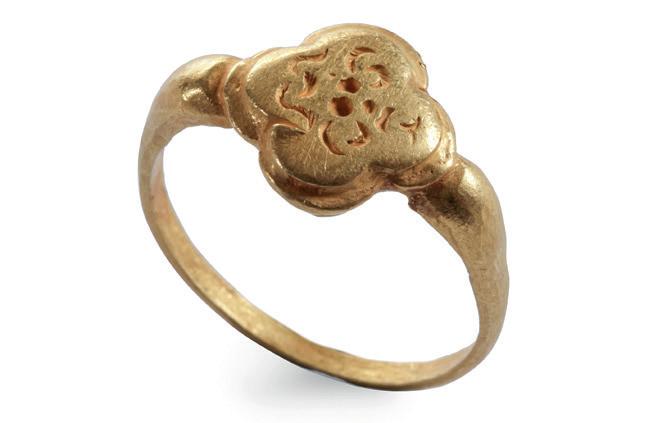
29
Gold pendants, gold beads and glass beads
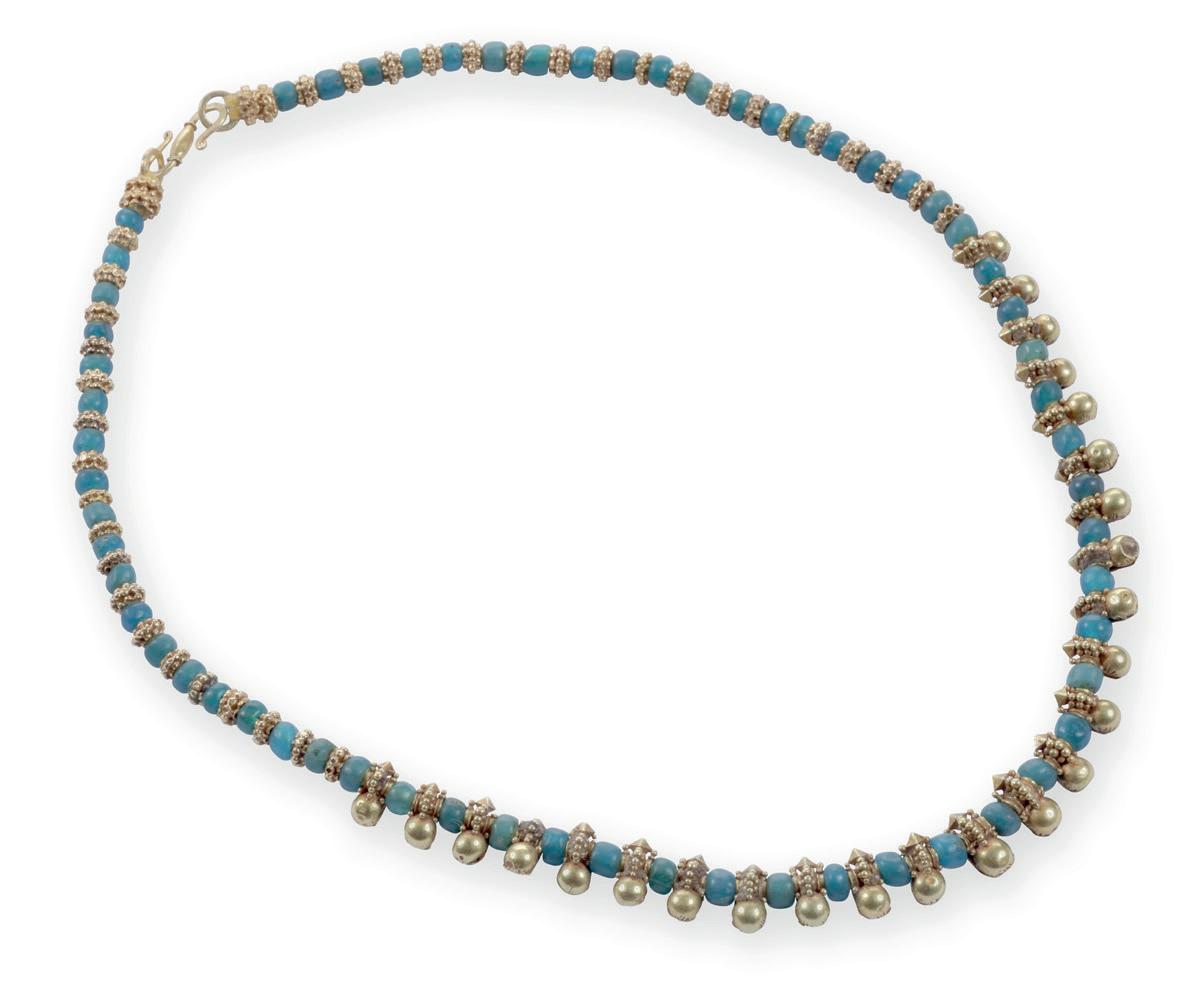
Indonesia, late medieval period, 17thcentury
Two gold bracelets, 24 carats, Central Java, 8th--12th- century

Gold ring with carnelian intaglio

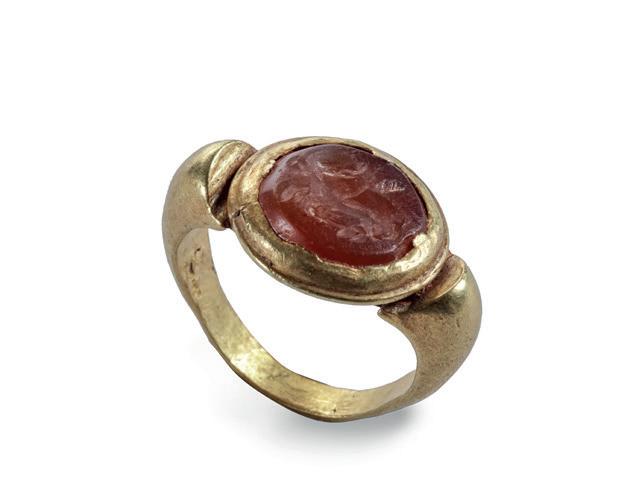
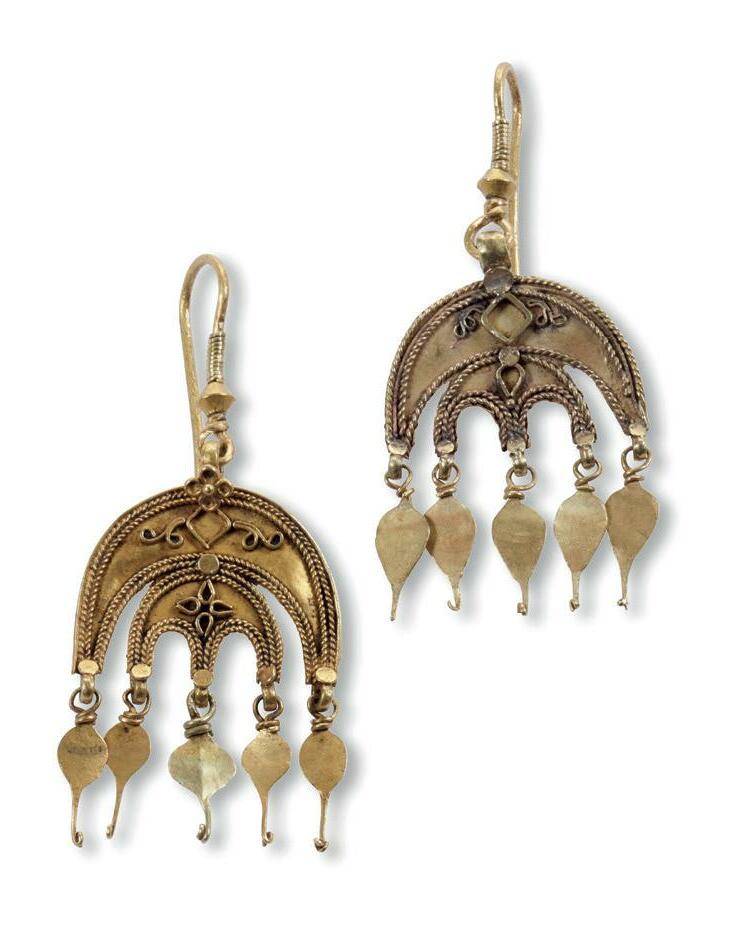
Central Java, 8th--12th- century
Pair of gold earrings
South Indonesia, 15th--17th- century
Gold ring with a Nandi, Shiva’s mount, carnelian intaglio

Central Java, 8th--12th- century
Gold ring with sapphir, Bali, early 20th- century
An exceptional Dutch-colonial Indonesian kayu pelet, or sacred wood, miniature cabinet with elaborate silver mounts Batavia (Jakarta), last quarter 18th century, Chinese-Javanese work
H. 87 x B. 64 D. 23 cm
This miniature cabinet is not only exceptional because of the timber used but also because of its shape. The costly káyu pèlèt was used for small items such as (most often) the hilts and scabbards of the Javanese and Balinese keris. In Bali, kayu pelet was used at the front of the scabbards, whereas the back would be solid gold, attesting that the rare wood was more precious than gold in the past. Apparently, in the Netherlands too, the wood was known to be very precious, as stated in the newspaper the Opregte Haarlemsche Courant of 8 May 1819: “…alsmede fraeye casette’s van Kostbaar Oost-Ind. Pelethout-, met Goud gemonteerd.” (…as well as fine boxes of East-Indies Peletwood, mounted with Gold).
The yellow wood has black flecks that seem to drift across the wood like clouds. The tree, Kleinhovia hospita, growing mainly on the southern coast of Central and East Java, produces a yellow wood which is widely available under the name timoho. The distinctive patterning with black flecks is found only in the wood of trees growing where strong humid-winds and poor soils create the highly specific but necessary conditions for its appearance. These conditions also do not allow the trees to grow tall, which makes the large slats of wood used in these pieces of furniture very rare. The best conditions apparently are south of Malang, Java, where the most beautiful wood is found. The term kayu pelet is used only for the wood with these distinctive marks, said to be caused by the dreams of the Javanese woodcutters the night before they fell the trees.
Until now, only six - very charming - Chinese-style Indonesian miniature bureaucabinets made of massive kayu pelet were known. The documented ones, probably three sets of two - a bureau-cabinet with temple interior and a bureau-cabinet with drawers behind doors - are one previously sold by us (see: Uit Verre Streken, June 2011, no. 21), now in a private collection; two in the Rijksmuseum (inv.no. BK-1969142 & BK-1977-265); one in the library of Castle Cannenburch (inv.no. 02558); and one in a private Dutch collection. These six miniatures in kayu pelet are more or less identical small table-top writing desks. Because some have a Chinese temple-like interior, they were presumably sold by an, as of yet, unidentified Chinese furniture shop hiring (or owning) Javanese craftsmen. The latter can be concluded from the fact that the drawers of the cabinet, previously sold by us, had Javanese markings in the 18th century style that served as an aid during construction. The present kayu pelet pieces are miniature copies of larger furniture and are an addition to the abovementioned six bureaus. However, they are of a completely different style. The cabinet is after a mid-18th century Dutch two-door bombé cabinet. In the mid-18th century this type of cabinet was prevalent in mahogany or walnut
30
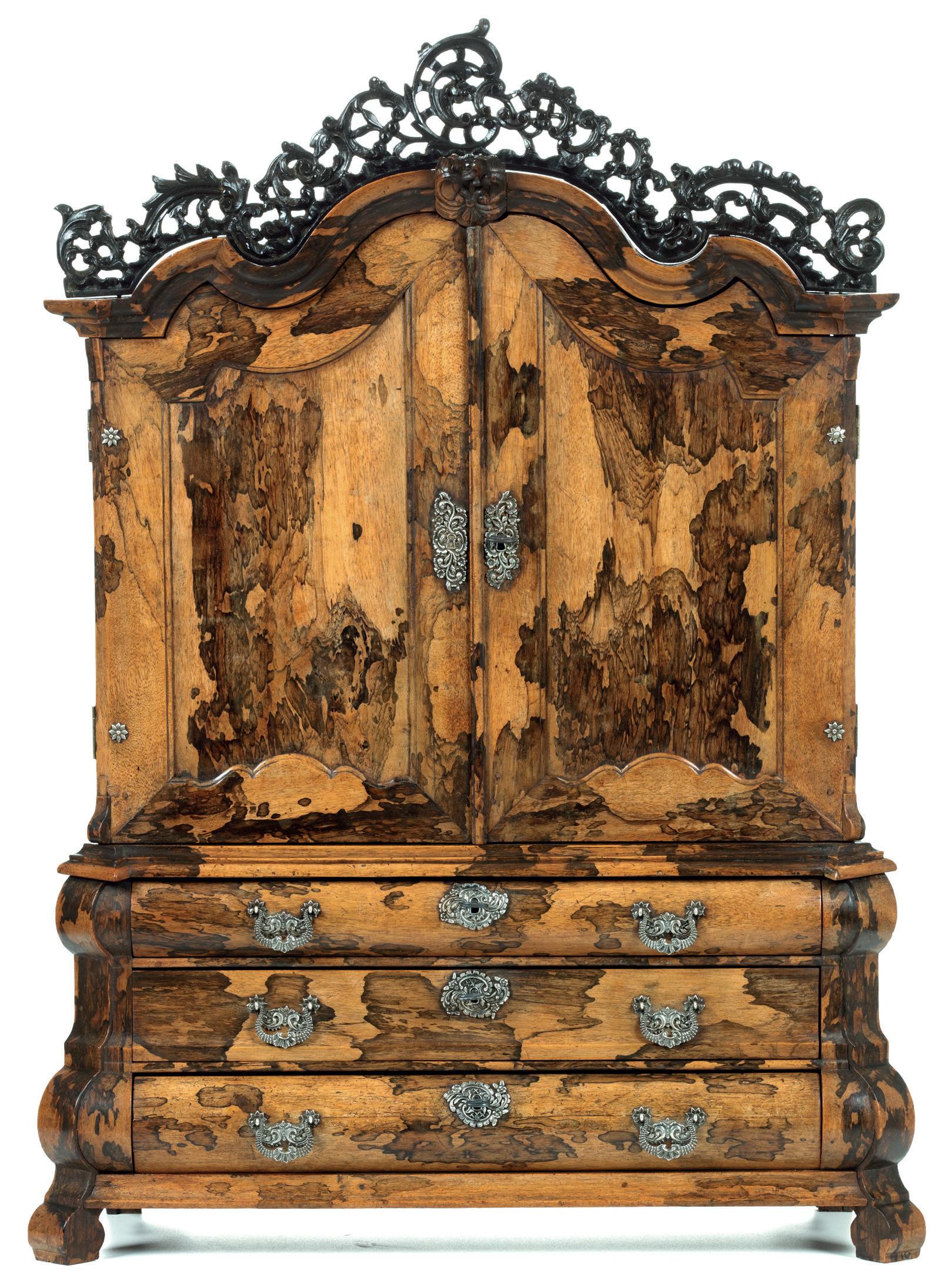
veneer in the Netherlands. Without proper argument yet, the present miniature seems to be copied after these bombé cabinets, by a Chinese-Javanese workshop, according to Jan Veenendaal, who is still conducting research. The writing desk is also ChineseJavanese work and bears silver marks that seem to be Chinese. There is no record of any Dutch-colonial miniature furniture, which was mostly made for upper-class ladies in colonial society to play with, in Kayu Pelet surfacing in collections in Indonesia. This could be an argument for Jan Veenendaal’s remarks on a single Dutch collector ordering such pieces of furniture, which can be found in our upcoming publication with working
title ‘Colonial Miniature Furniture: only of modest size’. However, it is also possible that Indonesians themselves recognize the sacred wood, which was and still is used in keris scabbards, resulting in none surviving the test of time (and greed).

We are grateful to historian Jan Veenendaal for his assistance in writing this catalogue entry.
A rare Dutch-colonial Indonesian Kayu Pelet, or sacred wood, miniature writing desk with silver mounts
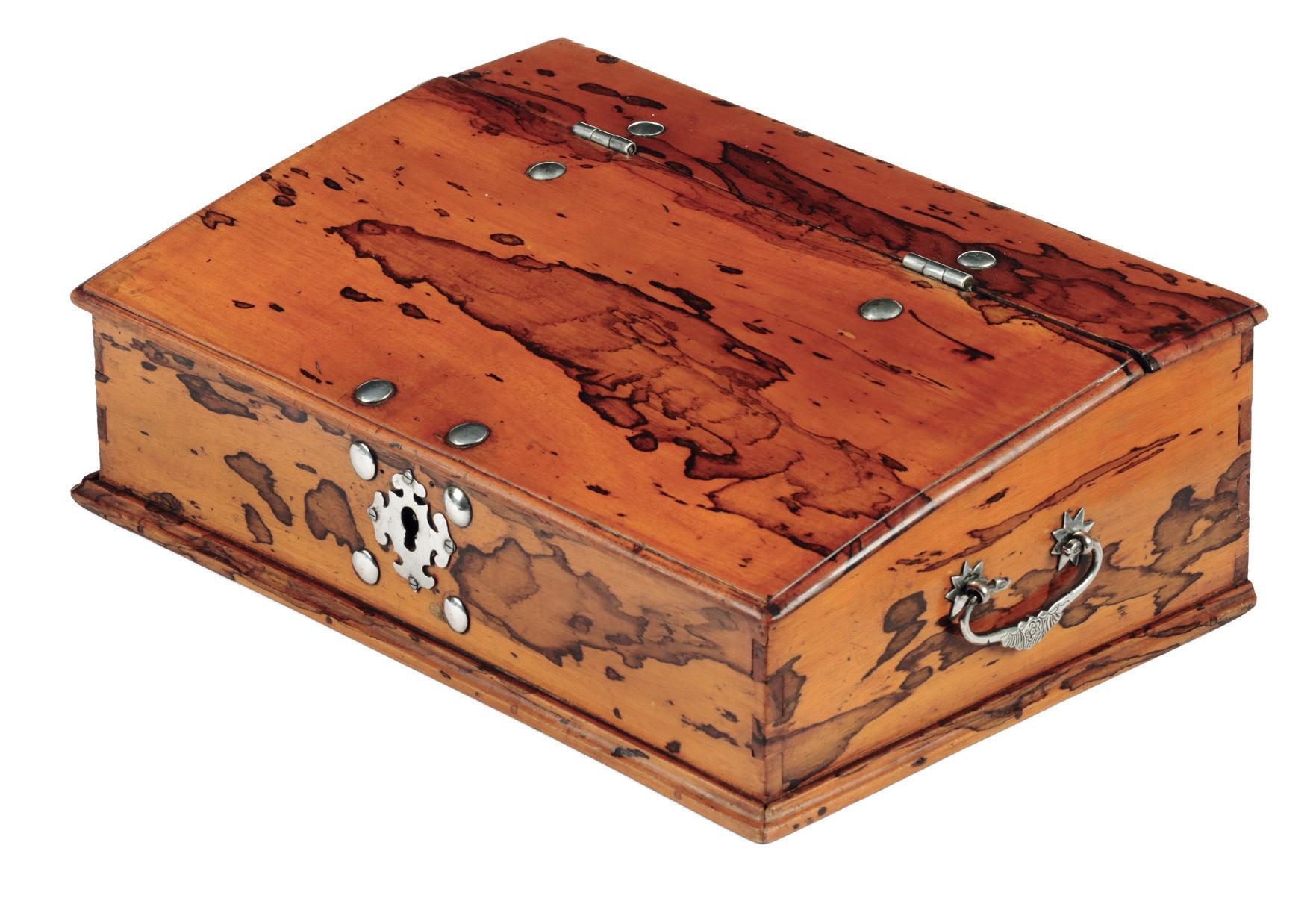
Batavia (Jakarta), 2nd half 18th century, Chinese-Javanese work, the silver probably (indistinctly) Chinese marked H. 10.5 x W. 30.5 x D. 20.5 cm

A Dutch-colonial Macassar ebony (Diospyros celebica) armchair Batavia (Jakarta), circa 1680

H. 89.5 x W. 54.5 x D. 58 cm
Decorated on all sides with bold carvings of flowers, type VI according to Jan Veenendaal’s classification in Wonen op de Kaap en in Batavia, 1602-1795, Zwolle 2002, p. 33. The flowers are a mix between narcissus and columbine, together with pomegranate, as seen on Dutch majolica dishes, which possibly were taken to Asia or after a print like plate 40 in Florilegia by E. Sweerts.
31
An exceptional Dutch-colonial Indonesian Javanese rosewood bureaucabinet with brass mounts Batavia (Jakarta) late 18th century
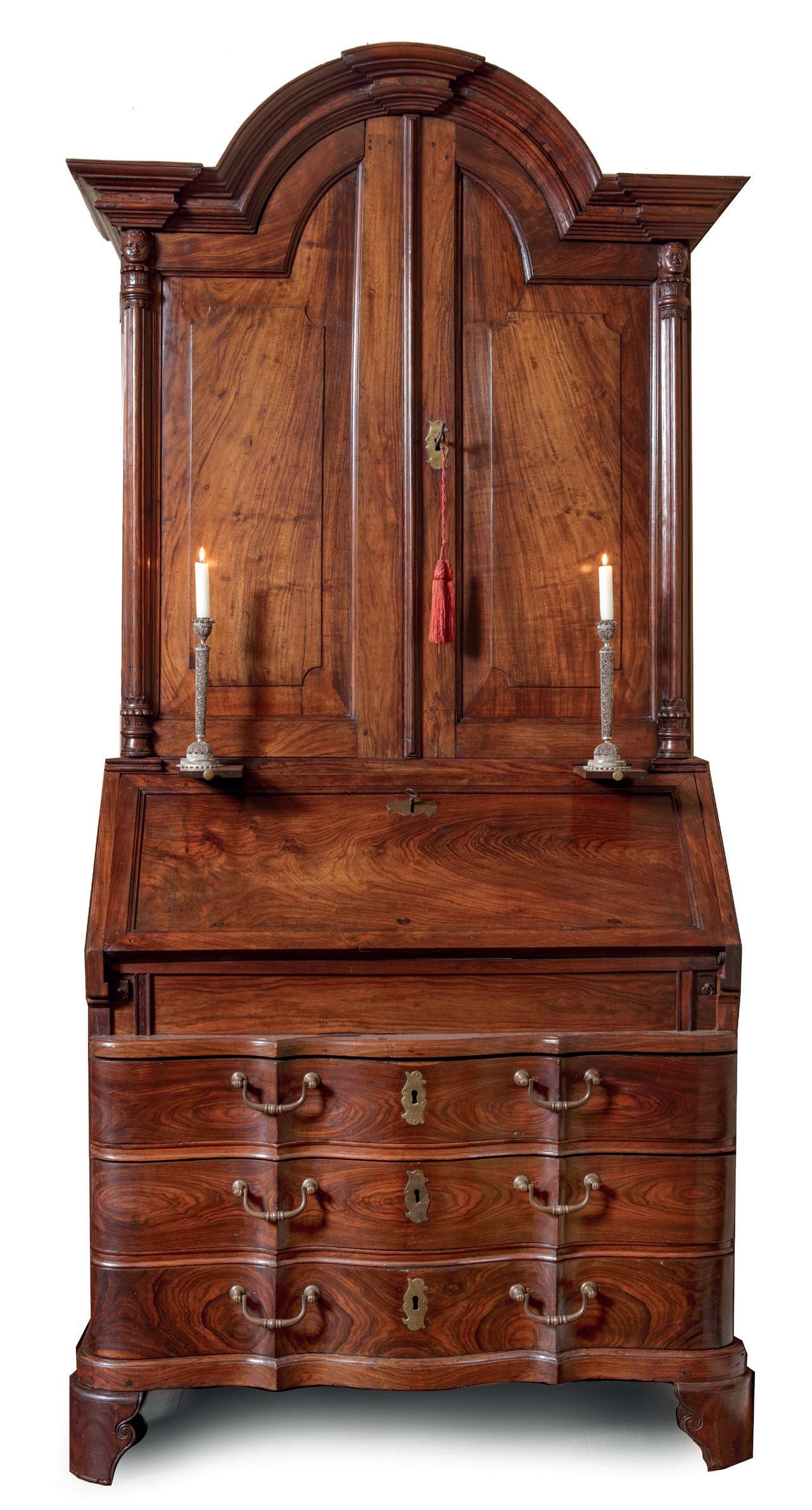
H. 225 x W. 113 x D. 63 cm W. 92 cm (open)
The neat joinery and meticulous finishes evident in this bureau-cabinet indicates the very high standard of carpentry, associated with Chinese craftsmen working in Batavia and elsewhere in Southeast Asia. In Batavia, a large Chinese population had provided a myriad of services to the Dutch and Indonesian inhabitants since the 17th century. Mitred joints and delicate carvings are clear indications of a Chinese ‘hand’ in the construction of this cabinet.
32
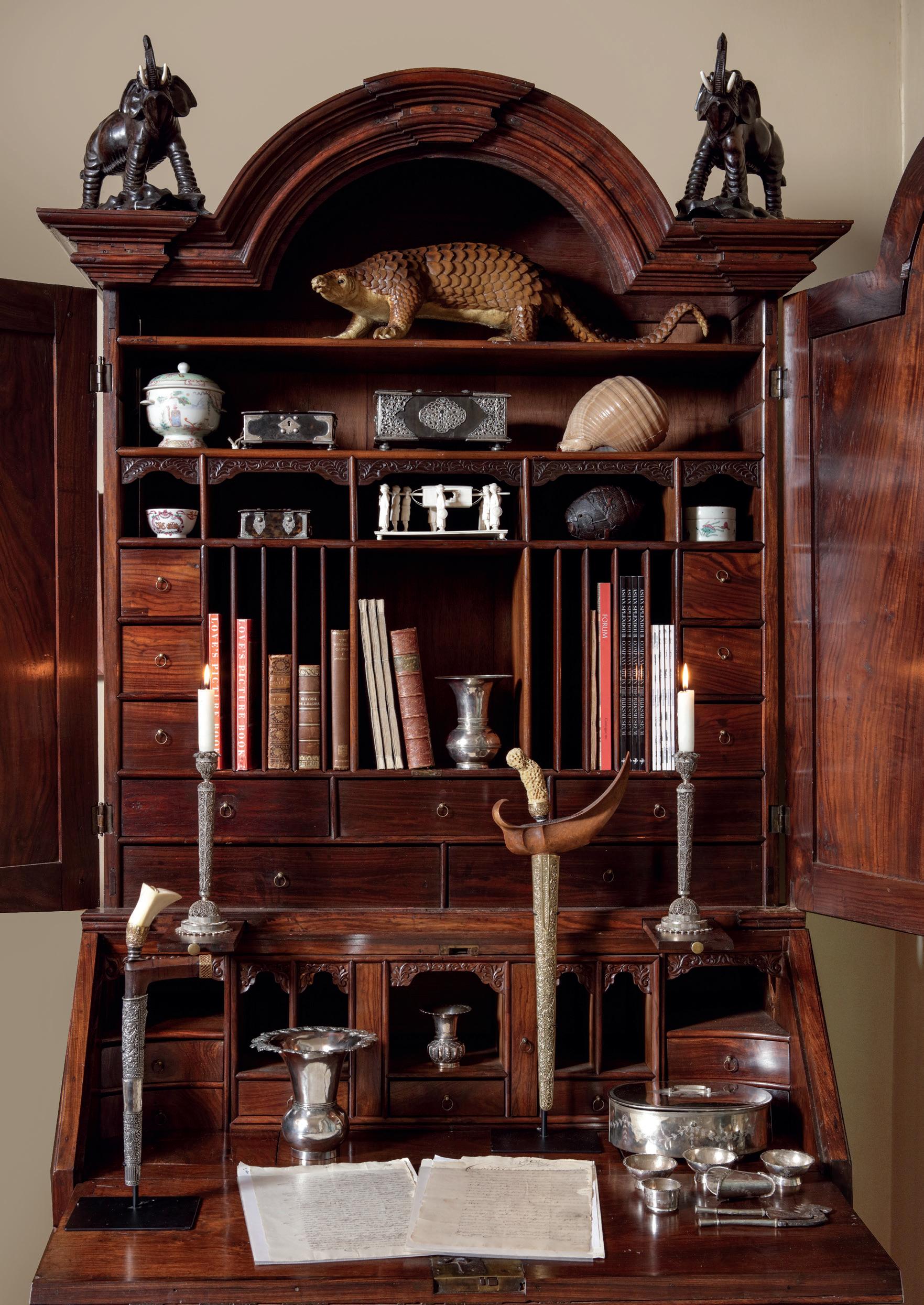
Other items depicted are from top to bottom:


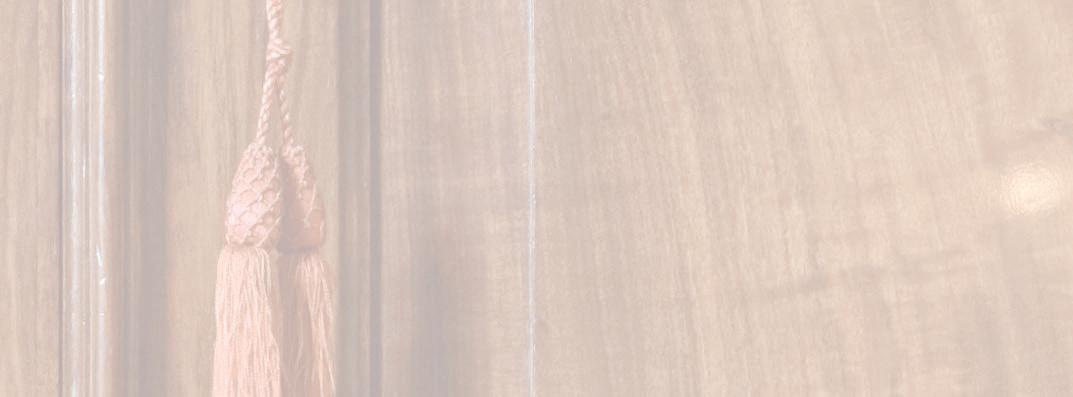


A pair of Elephant sculptures China, 18th century
An antique taxidermy Sunda Pangolin Early 20th century
A Chinese export porcelain bowl and cover and a small cup with initials Qianlong period (1736-1795)
Three Dutch-colonial Indonesian sirih caskets in tortoiseshell and one buffalo horn, with silver mounts Probably Batavia, 18th century
An Indian sculpture of a procession with palanquin North India, Lucknow, 19th Century
A Sri Lankan carved coconut 19th century
A small Chinese porcelain box Republic period, early 20th century
A pair of Indonesian silver filigree candlesticks West Sumatra, late 18th/early 19th century
An Indonesian Sewar or ceremonial dagger Sumatra, Minangkabau, 19th century
Three Indonesian silver spittoons Batavia, 18th century, the small 19th century
An Indonesian State keris Madura, 19th century
Two South-African land grants Capetown, 18th century
An Indonesian silver oval sirih set Batavia, 18th century
33
An Indonesian mother-of-pearl inlaid mastic sirih casket with silver mounts Jakarta (Batavia), circa 1720-1730, the silver hinges marked for Batavia, maker’s mark HS or SH, part of the silver reconstructed

H. 10 x W. 26 x D. 17.5 cm
Before settling down to business in the former Dutch East Indies, sirih had to be offered in the most exquisite boxes, made of gold, silver, inlaid with precious stones, ivory, tortoiseshell, or, as the present one, inlaid with mother-of-pearl. The costliness of one’s sirih box displayed one’s fortunes.
In this manner, only one other sirih box in mother-of-pearl is documented. It is in the collection of Kip-Lee-Kip in Singapore (Peter Lee et al., Port Cities: Multicultural Emporiums of Asia, 1500-1900, Asian Civilizations Museum, Singapore, 2016, p.206, no. 166). At least one of the previous owners of the casket presented here seemed to have been aware of the importance of this box since it possibly lost part of its silver but was restored with finely engraved openwork late 17th /early 18th century mounts. When observed closely, the box shows several nail holes all over, suggesting closed silver corner and centrepieces, and lock plate. Researching a large number of sirih caskets, in design related and also for the Peranakan market, as this casket probably is, we asked a highly skilled restorer to design and reconstruct the missing silver mounts – with an astonishing result.
It is unknown who the silversmith HS or SH, active between circa 1714 and circa 1743, is, but he did leave an impressive oeuvre of a very high standard. The Kunstmuseum in The Hague has seven commemorative salvers, a walking stick and a cuspidor with these marks in the collection. For another and so far the latest dated salver by HS or SH, commemorating Bartha Helena van Suchtelen, born in Batavia (Jakarta) in 1710 and deceased there in 1743, see Uit Verre Streken, March 2013, no. 4.

34
An impressive Dutch-colonial Indonesian amboyna and teak pedestal table Batavia (Jakarta), 1st half 19th century

H. 77.5 cm Diam. 171 / 120 cm (comes with two with interchangeable tabletops)
This exceptional large tabletop is made of a single plank of amboyna, one of the various names for the timber of the Pterocarpus indicus tree. The tree is indigenous to Indonesia, Malaysia, Cambodia, and Thailand and is known to grow up to 50 meters high yielding planks up to an astonishing 2 meters in width or diameter.

35
After Abraham Salm (1801-1876)
Twenty-four chromolithographs, finished by hand, mounted on later (acid-free) cards with original small printed title labels, in a modern box with gilt lettering on the front cover “Java naar schilderijen en tekeningen van A. Salm”
The set of very rare 24 chromolithographs was published by J.C. Grieve Jr. and edited by Frans Buffa & Zonen between 1865 and 1872. It is one of the most beautiful of Buffa’s publications
Chromolithograph, 36 x 26.4 cm (landscape and portrait formats)

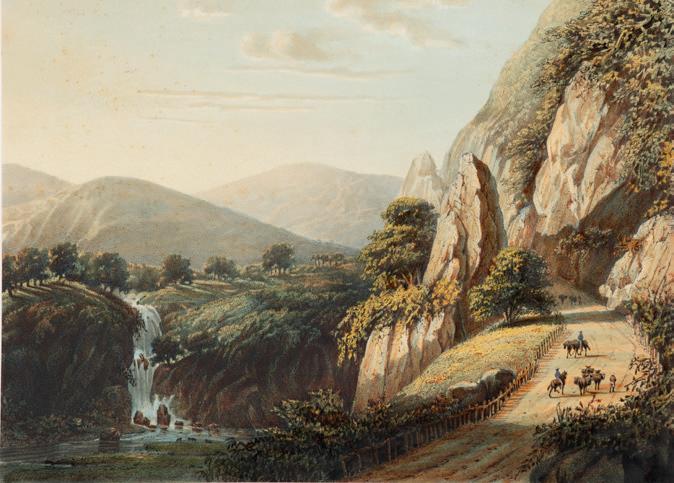
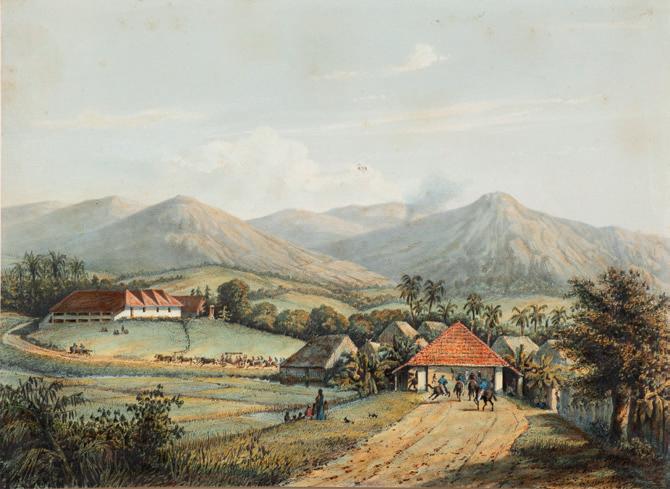
The paintings and drawings by Abraham Salm are regarded as the finest depictions of the Javanese topography and culture. Abraham Salm established himself first as a merchant in Surabaja but afterwards became the owner of a tobacco plantation in Malang. He was a self-taught artist and spent twenty-nine years in Indonesia.
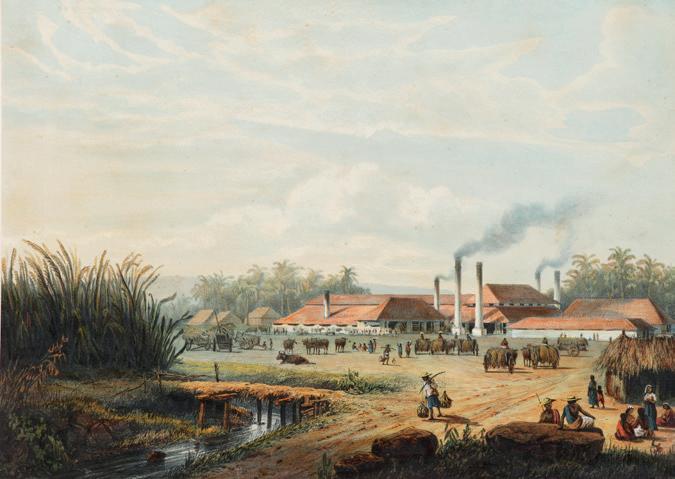
Landscape near Malang, Residency Pasoeroean
The main road from Buitenzorg passing the land of Tjisaroa over the Mogamendong to the Preanger Residencies
In the Sumadang area, Preanger Regency
The sugar factory Pangka, Tagal Residency
Landscape in the Bantam Residency

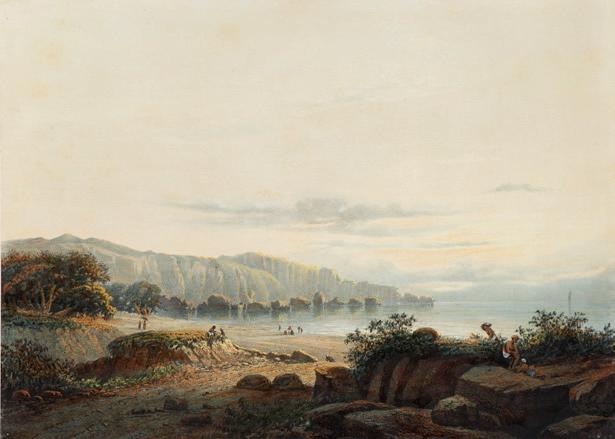
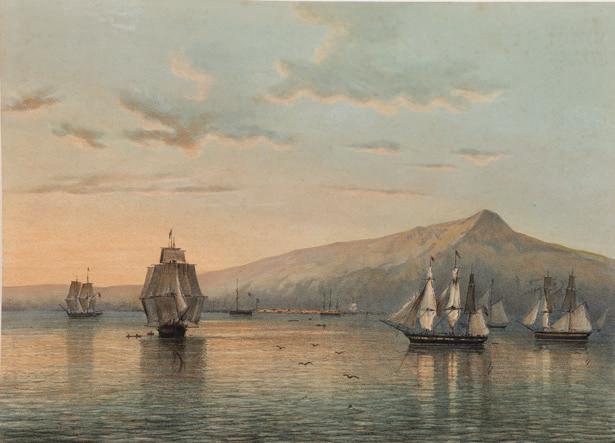


View on the river Solo, Assistant-Residency Toeban


Marriage procession in the valley of the Salakh

In the Tenger mountains, east side of Java
The
The small bay Srigonjo, south coast of Java
A view on the land of Tjiliboet, Assistant Residency Buitenzorg
Anjer, Strait Sunda, north coast of Java, Bantam Residency
land of Tjitrap, AssistantResidency Buitenzorg
The bathing place Wenditt, Assistant-Residency Malang
Erupting volcano Bromo in 1856, Probolingo Residency

A view of the land of Kedong Badak and the main road to Buitenzorg

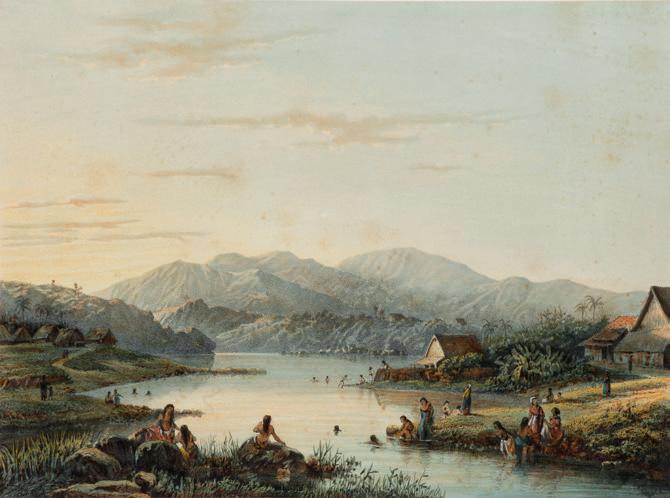
Landscape in the “Ommelanden” of Batavia
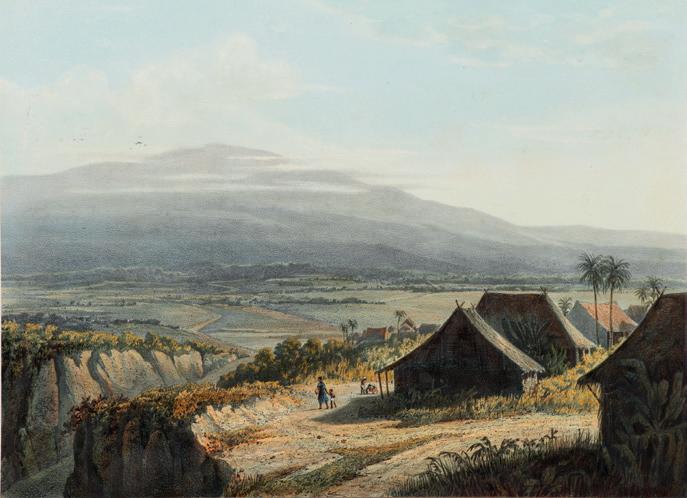

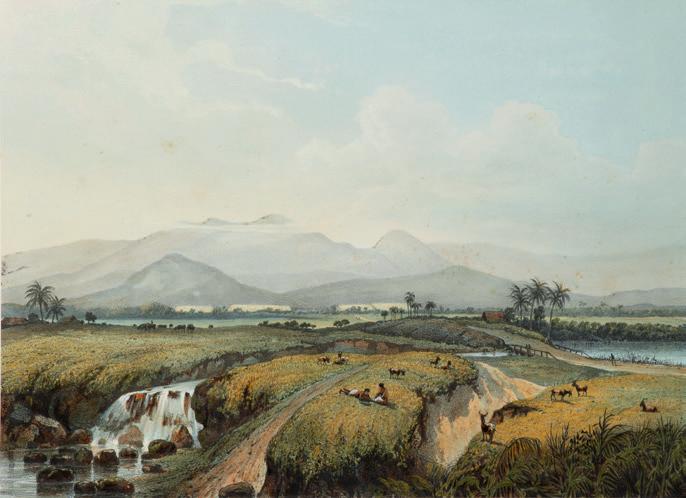
A view of the Kawi mountains and the tobacco business
Village feast in the Ardjoeno area, Soerabaja Residency

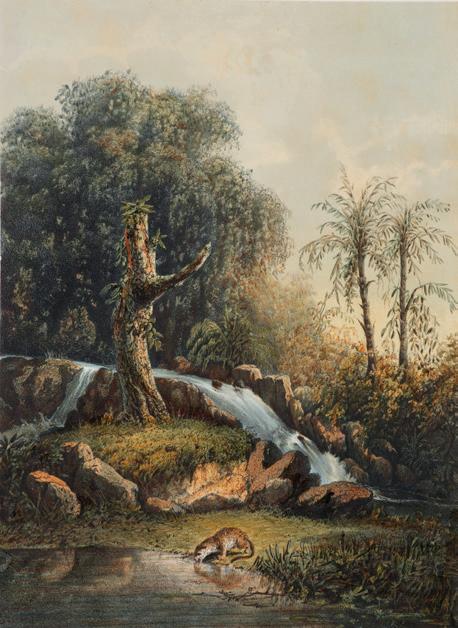
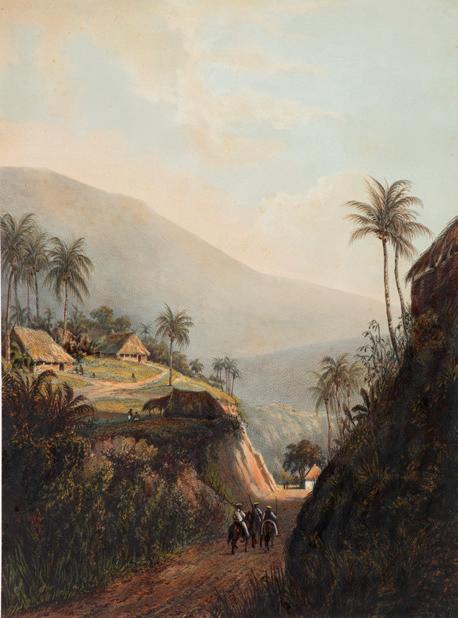

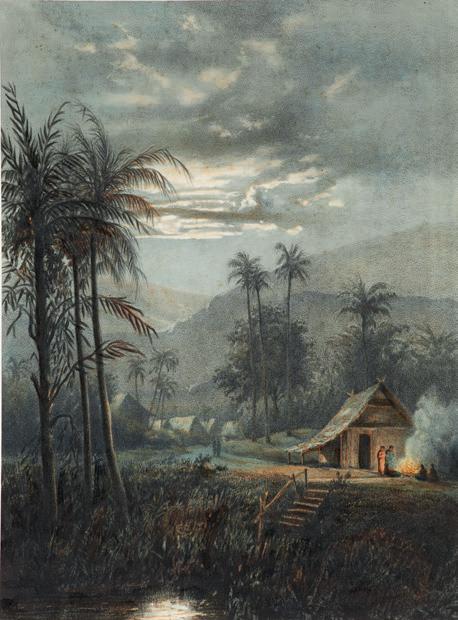
 Landscape in moonlight near Sumedang
Waterfall Singahan, Rembang Residency
The road from Buitenzorg to the valley of the Salakh
The river Brantas in the mountains, Pasoeroean Residency
Wild landscape in east Javanese
The volcano Smeroe, seen from the Pasoeroean Residency
Landscape in moonlight near Sumedang
Waterfall Singahan, Rembang Residency
The road from Buitenzorg to the valley of the Salakh
The river Brantas in the mountains, Pasoeroean Residency
Wild landscape in east Javanese
The volcano Smeroe, seen from the Pasoeroean Residency
A collection of seven rare drawings by Wijnand
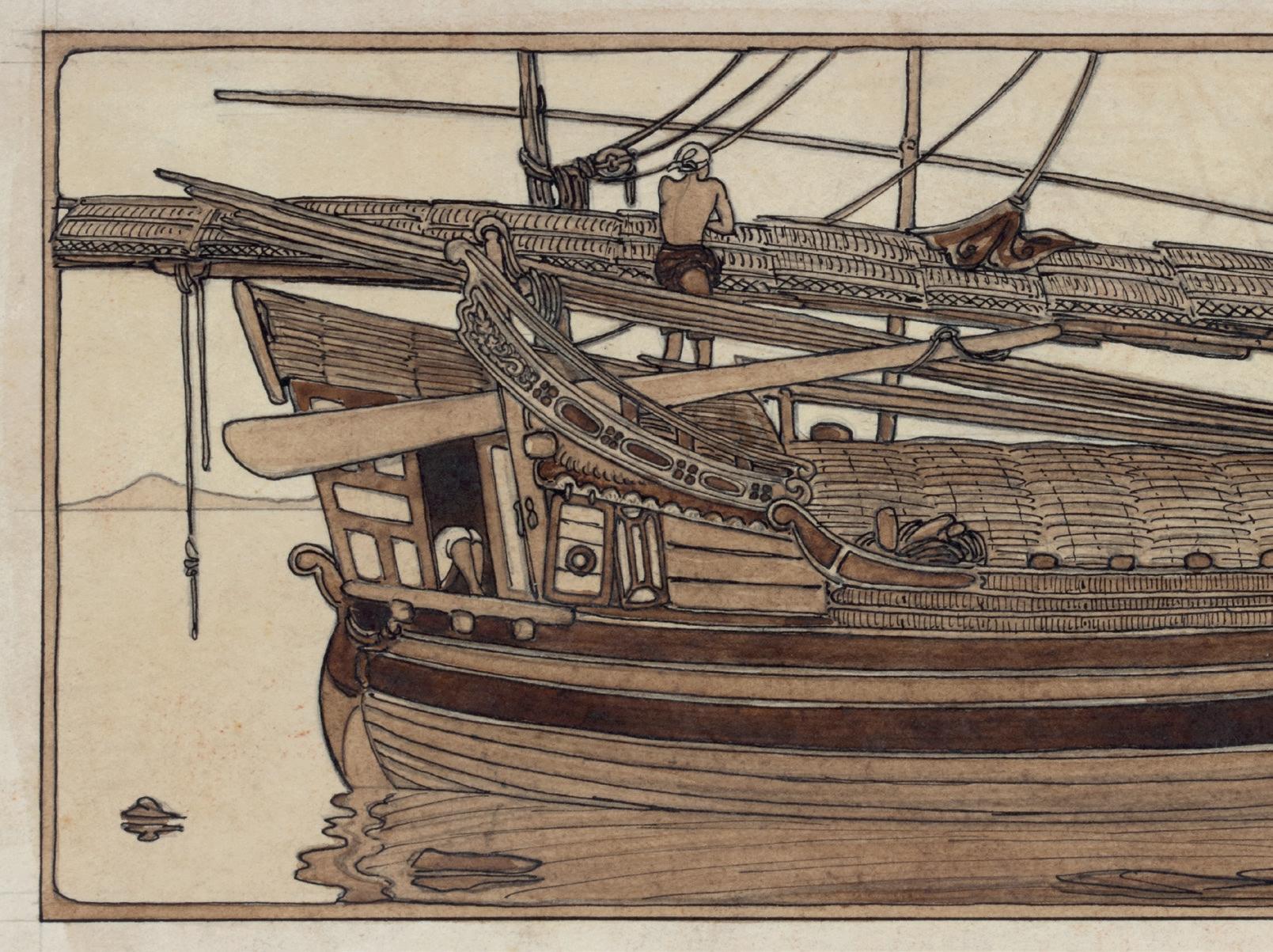
In 1898 Nieuwenkamp visited Indonesia for the first time. On his second visit in 1903-1904, he went to Bali and became the first foreign artist to fall in love with Bali and the Balinese. Having secured agreements with several museums in the Netherlands to obtain Balinese art and objects for their collections, Nieuwenkamp immediately started to purchase and order a wide range of art and objects from local artists and artisans. His drawings and books gave an excellent impression of Balinese art and culture at that time.
Northern Bali was under Dutch rule since 1854, but Southern Bali was still independent in 1904, when Nieuwenkamp visited. Nieuwenkamp would be one of the last Europeans to experience a glorious traditional society in its final days.
During his visit to Bali in 1906, the Dutch decided to end the independence of South Bali and Nieuwenkamp was invited by Governor-General Van Heutz to accompany the Dutch invasion force. By contemporary European standards, the Balinese were barbaric and primitive. Still, Nieuwenkamp was a singular man who saw the beauty and soul in their society, that had been lost in his own.
36
Otto Jan Nieuwenkamp (1874-1950)
On September 20, 1906, Denpasar, the capital of South Bali, fell to the Dutch military forces. Official military briefings praised the victory, which was reported with nationalistic pride on the front pages of all Dutch newspapers. But, as Nieuwenkamp had witnessed, the truth was far from glorious. As if in a trance, the Balinese, men, women, and children, dressed in their finest silks and jewellery and armed with ancient bejewelled krises, the Raja himself mounted atop a golden palanquin, rushed forward. The men ritually killing their wives and children and the Dutch machinegun fire doing the rest. The once mighty and magnificent court of Denpasar was left in ashes, and as many as two thousand Balinese died. The Dutch suffered four deaths, the only thing, next to the victory, widely covered in Dutch press. The ritual mass suicide is also called Puputan and is commemorated yearly.
Nieuwenkamp made drawings and saved as many beautiful architectural elements and artefacts from the rubbles as he could, most of it now in the collection of the Museum voor Volkenkunde in Leiden.
‘A Buginese boat, Semarang 1898’ Signed, dated, and annotated, upper right
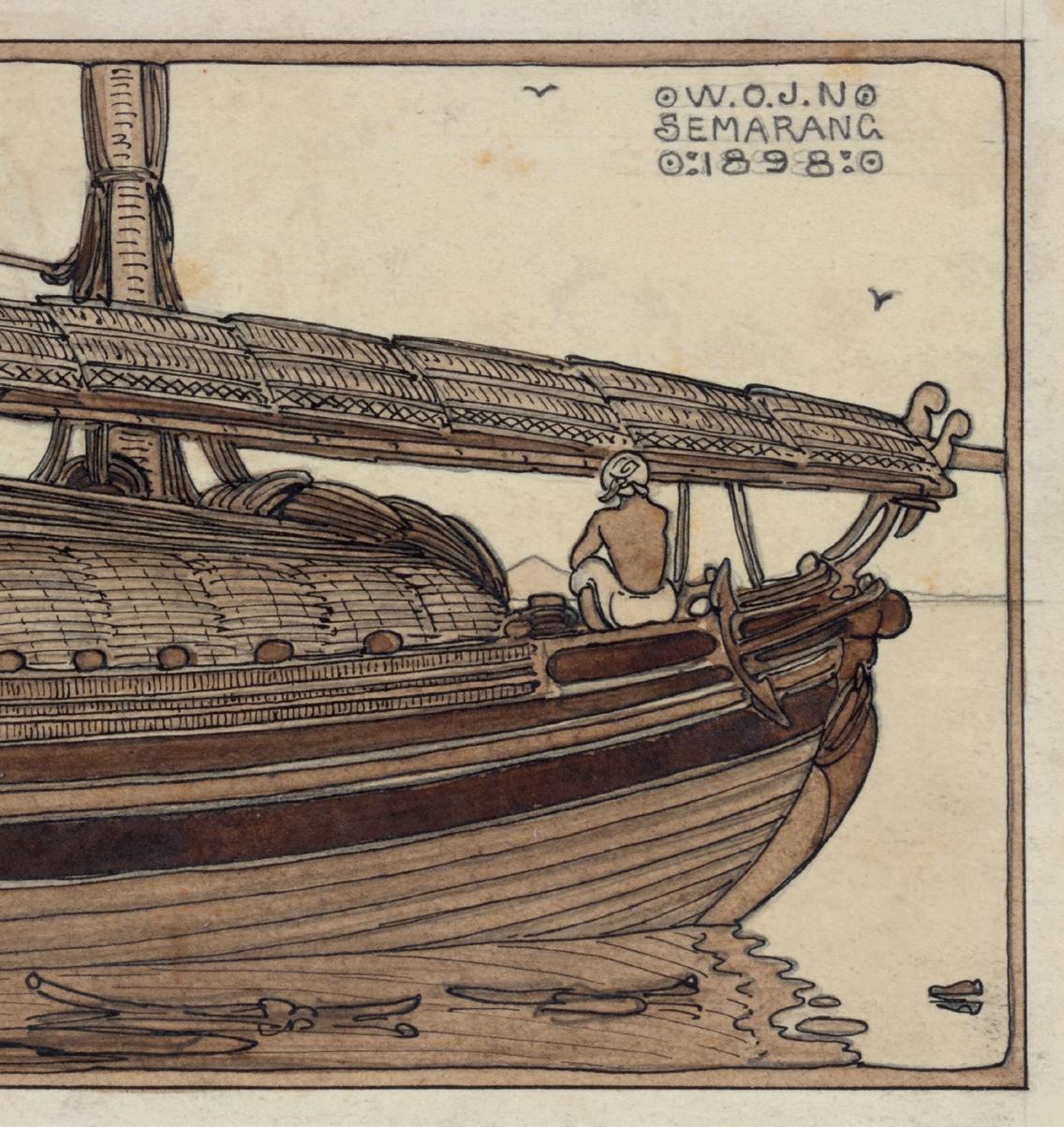
Pen, brush and ink on cardboard, H. 11.4 x W. 26.3 cm
Literature: Venselaar, 2019, p. 69 (ill.)
‘Wadah, Bali 1906’

Signed upper right and with a pencil sketch annotated Boela(?), depot Stedelijk Museum Amsterdam and the artist’s stamp verso
Pen, brush and ink on paper laid down on cardboard, H. 20.4 x W. 16.8 cm
The grinning face of a winged Bhoma, God of the earth, forms the foundation of this stunning wadah, a cremation tower, in North Bali, decorated with Dutch flags.
Literature: Carpenter, 1997, p. 139 (ill.); Venselaar, 2019, p.324 (ill.)
‘Ida Bagoes Raki, Bali 1906’
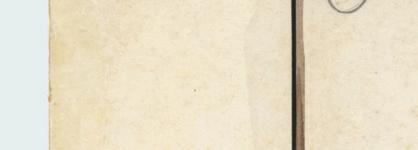

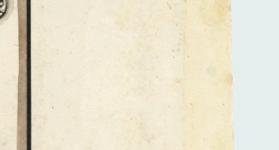
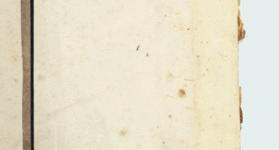




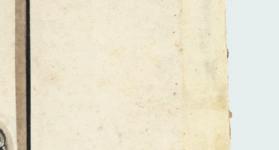
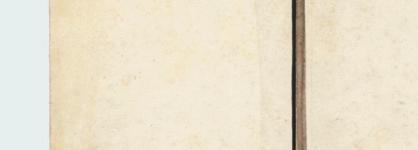
Signed middle right, annotated at the bottom and with artist’s stamp verso





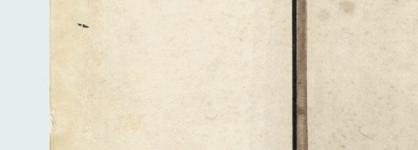



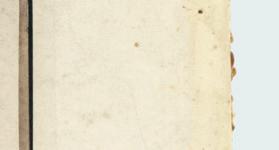



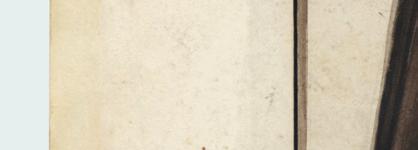





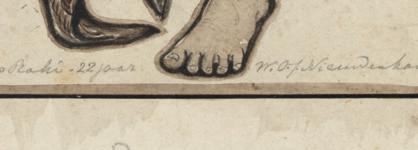



Pen, brush and ink on paper, H. 26.3 x W. 10.8 cm
Ida Bagoes Raki, here 22 years old as annotated, was a young brahmana seen here wearing his finest ceremonial cloth, including a splendid head cloth, saput and a golden kris with an ivory hilt.
‘Ingang van den tempel bij Blahbatu, Bali 1907’ Signed lower centre, titled at the top, and with artist’s stamp at the verso Pen, brush and ink on cardboard, H. 14.8 x W. 19.4 cm
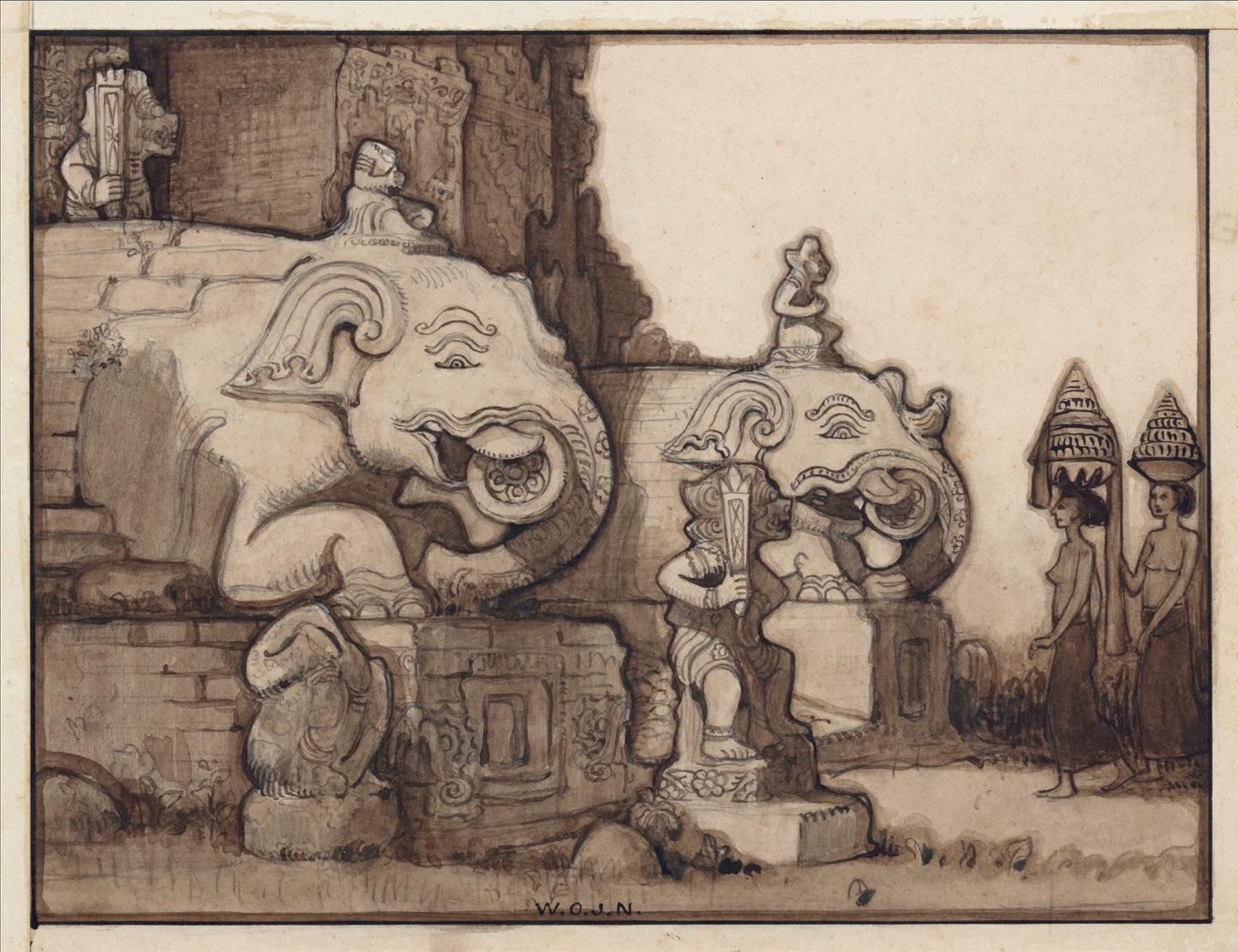
Guarded by two giant elephant statues, Blahbatu temple is famous for being the home of an ancient mask of Gadjah Mada, the brilliant general of the Majapahit Empire who brought Bali under the control of this last great Javanese-Hindu kingdom. In 1917 an earthquake destroyed the temple.
Literature: Carpenter, 1997, p. 164 (ill.); Venselaar, 2019, p. 642 (ill.)
‘Batur Temple and Mountain before the Eruption, Bali 1904’ Signed, dated, and titled lower left and with artist’s stamp verso

Pen, brush and ink on cardboard, H. 16.7 x W. 21.8 cm
In the background, the ominous smoke rising from the caldron of Batur mountain warns of the destruction to come. Batur temple, on the shores of the lake bearing the same name, was one of the most sacred and largest in Bali. It was the only place in the then still independent Kingdoms of South Bali visited by the artist in 1904. In the next 15 years, a series of lava flows spewed from the Batur volcano would destroy the temple and the village. On March 11, 1937, Nieuwenkamp made a drawing of Batur buried under the lava from the volcano.
Literature: Carpenter, 1997, cover and p. 46 (ill.); Venselaar, 2019, p. 178 (ill.) & p. 789 (after the eruptions)
‘Barong, Ubud en Tanaban Bali 1906’
Signed and described centre right and with artist’s stamp verso
Pen, brush and ink on cardboard, H. 16.3 x W. 24.3 cm
While wandering through South Bali in 1906, Nieuwenkamp met several types of barongs, including the mythological beast with his nemesis, the evil witch Rangda which he drew in Tabanan. Above are the barong babi, pig, and barong hariman, tiger. Children usually take these around the village at the end of the GalunganKuningan festival.

Literature: Carpenter, 1997, p. 149 (ill.); Venselaar, 2019, p. 268 (ill.)
‘Meru in Kesiman, Bali 1906’
Signed lower centre and annotated lower left Pen, brush and ink on cardboard, H. 24.4 x W. 17.1 cm
The stately grandeur of the architecture of South Bali is seen in this eleven-storey meru, pagoda, belonging to the Raja of Kesim. On either side of the entrance are four giant stone statues representing the holy mountain.
Literature: Carpenter, 1997, p.165 (ill.); Venselaar, 2019, p.229 (ill.)

 Rudolf Bonnet (1895-1978)
Rudolf Bonnet (1895-1978)
“Talini” Hilisimeatano, Nias 1930
Signed lower right and titled and dated upper right
Black chalk on paper, H. 43.5 x W. 30.5 cm
A mesmerizing portrait of a Nias warrior wearing the Kalabubu neck ring worn by courageous fighters and the typical Nias young warrior’s gold ear ornaments. Nias society developed a culture of almost perpetual war, defending themselves against their neighbours and slave raiders from nearby Aceh. Young men were brought up to become fierce warriors, and training started at a young age. As a result, Nias had brilliant fighters, builders, and blacksmiths. Only after several failures the Dutch finally in 1914 were able to establish complete control of the island and spread Protestant Christianity across the island, taking or destroying many of the fine, and nowadays highly sought-after, ancestor sculptures. Bonnet, who had long wanted to go to Asia, finally arrived in Bali in 1927, after meeting Nieuwenkamp in Rome, who stimulated him to go. After seeing a Balinese dance, he decided to stay there. But before settling down definitively in Bali, he joined his friend Jaap Kunst in March 1930 for a visit to Nias, where Kunst was studied the indigenous music. Impressed by the unspoilt island, he stayed there for almost a year, living with a Nias servant and making many drawings of the people of South Nias. What shocked him, however, was how the Christian mission, in his opinion, was destroying the culture of Nias. ww
Talini is depicted with a certain dignity and affection, which one remembers when in love, daydreaming about someone. Bonnet depicted Talini in this exact way, which differs very much from the formal portraits of women by his hand. It won’t come as a bolt from the blue that Bonnet was homosexual, or at least not heterosexual, which is only briefly addressed in the literature.
He went to Bali because it was presented as a paradise, with men and women (traditionally dressed) walking around bare-breasted. Untrue rumours about sexual freedom, true rumours about the beautiful Balinese people, and promises of idyllic life made artists pick Bali. Many artists working in Bali were gay or bisexual. Because they were the impressive white man, Balinese boys or girls let themselves be portrayed by them, or more, without asking questions. The Balinese weren’t prudish or pigeon-holing people (which was exaggerated and part of their sexualization and, to some extent, abuse).
It shouldn’t be a side note that Bonnet was gay. Hetero painters made paintings of women in the most uncomfortable poses on sofas for ages through their adoring male gaze, which can now be found in Museums. In his way, Bonnet was able to create the most beautiful male portraits through his own adoring gaze.
37
38
A Balinese polychrome and gilt wood sculpture of a winged lion, Singa Bersayap Northeast Bali, Singaraja, Buleleng Regency, circa 1900-1930
H. 55.5 x W. 32.5 x D. 54 cm
A magnificent wooden polychrome winged lion carved from one piece of wood, except for the wings and tail, which slot into the lion’s body. Typical of a traditional Balinese Singa, king of the forest, protector, and overcomer of evil, with ferocious expression, bulging eyes, fierce fangs, wings as a Garuda and a flashing S-shaped tail. However, lions never existed on Bali. Singa originated from Chinese representations of a lion mixed with the Hindu-Buddhists lion, which is an avatar of Vishnu. On Bali in addition, it can often be seen holding up the corners of temples and buildings (see, for instance, Uit Verre Streken November 2015, no. 33).

A Peranakan djati wood miniature bed for an Anak Ambar, a miscarried fetus

Indonesia, Peranakan Chinese, late 19th century
H. 41 x L. 48 x D. 32 cm
In the past Peranakan Chinese tended to believe that a fetus that did not grow or a miscarried fetus somehow remained alive and would eventually grow like a normal child into adulthood. Hence, besides providing this fetus with a bed complete with its accessories, they would also offer toys and perfumes. Furthermore, the Peranakan Chinese would even hold a ceremony to marry this ambar to another ambar
Literature: Lily Wibisono (ed.) et al., Indonesian Chinese Peranakan, a cultural journey, Jakarta, 2012, p. 206 (ill.)
39
40

A polychrome wood model of a Toraja dwelling or tongkonan Indonesia, Sulawesi, Tana Toraja, early 20th century

H. 60 x L. 94 x D. 33 cm
A wonderful wooden model of a dwelling, showing the distinctive roofline that has a shape of a boat, or star ship as the Toraja call it. The vernacular architecture of the Toraja houses in South Sulawesi is known as the Tongkonan style. The decorations have a purpose and refer to the family’s status. In the original Toraja society, only nobles had the right to build tongkonan. Less wealthy people, for example, descendants of enslaved people, lived in smaller and less decorated homes called banua. For two comparable models in the collection of the Museum for World Cultures in the Netherlands, see inv.no. TM-1724-1 and inv.no. TM-46-2.
41
An important Indonesian royal Keris presented to Johannes, Count van den Bosch (17801844), Governor-General of the former Dutch East-Indies (1830 to 1833) by the Panembahan Mangku Adieningrat VIII (1804-1842) Madura, circa 1834
L. 48 cm (full length) / L. 36 cm (blade) (Missing) bonaspati mask from the period, but added later
With Dutch inscriptions in gold on both sides of the blade: ‘Aan Z.E. den Kom(missaris) Gen(eraal) over Ned(erlandsch) Indië J(ohannes) van den Bosch’ & ‘Den Panembahan Mangkoe Adie Ningrat den 1e January 1834’.

This keris was presented to Governor-General of the former Dutch East Indies and commander of the Royal Dutch Indies Army, Johannes van den Bosch (1780-1844). The keris was presented to him in 1834, at the end of his official rule of the Dutch East Indies, by the Panebaham (Sultan) from Pamekasan (Madura, East Java) Mangku Adieningrat VIII. This keris is Madurese-made, following strong Balinese influence. Hence, it can be described as Keris Madura Pamekasan, which refers to the former Keraton.
For a comparable example, see the presentation or state keris of Governor-General Jean Chrétien Baud (1789-1859), the successor of Johannes van den Bosch, which is held in the Rijksmuseum Amsterdam (inv.no. NG-NM-7113).

Provenance:
- Johannes Count van den Bosch (17801844), The Hague […]
- Art dealer/collector Hubert Marchand, Ostend
- Private collection, Germany (purchased in the 1980s)


- With Runjeet Singh ltd., London (purchased in 2022)
- Zebregs&Röell Fine Art and Antiques, AmsterdamMaastricht


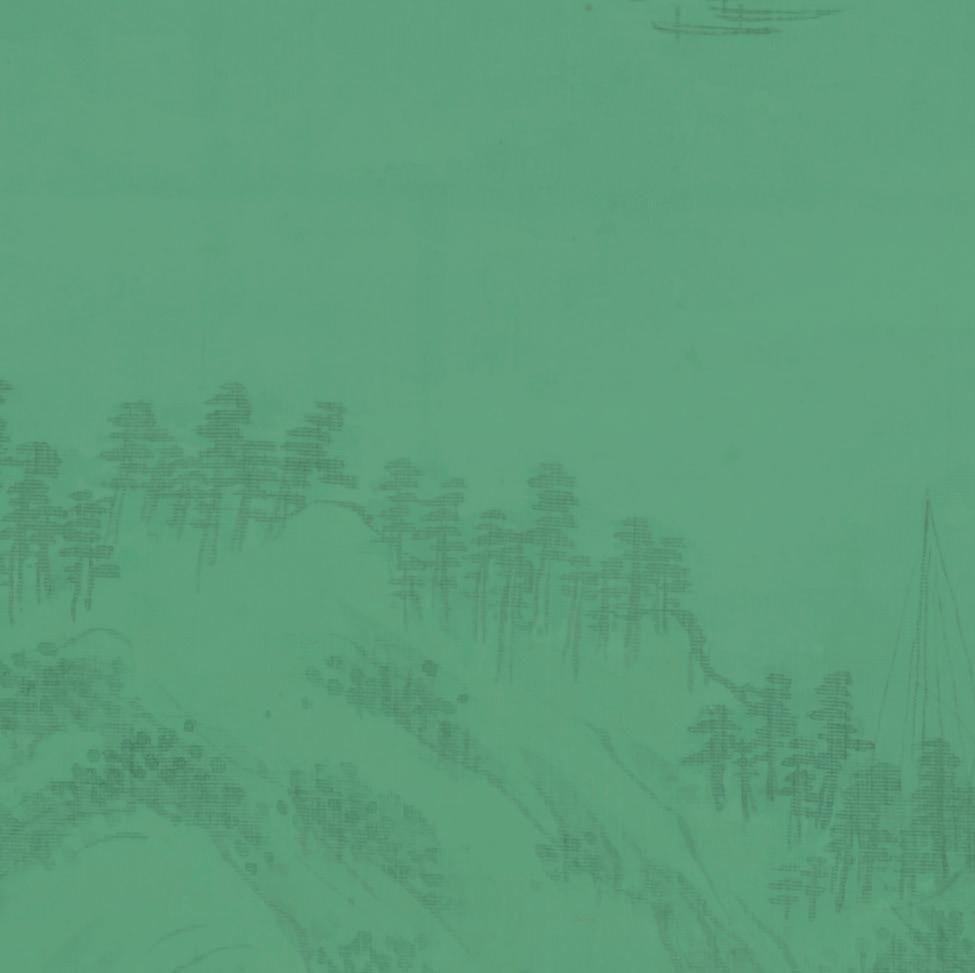



China&Japan
42
A large magnificently serene Chinese gilt-bronze sculpture of Guanyin Ming-dynasty, late 16th century H. 36 cm

The Deity seated in padmasana, the right hand raised in Karana mudra, dressed in long robes decorated with flowers at the hems, wearing ornate jewellery and a crown set with a small figure of Amitabha Buddha. Sculptures from this period, can be recognized by the relatively large head, and it is rare to find one with proportions that are perceived as perfect by most spectators. However, the Guanyin presented is, according to us, of this perfect form, resulting in an unmatched impression of serenity. While observing in all calmness, one would almost forget that the buddha is a man-made figure.
Provenance: Private collection, Paris
The result of the accompanying CIRAM Authentication tests are consistent with the dating of this sculpture.
More info: www.zebregsroell. com/china-and-japan

An extremely rare and large Chinese export famille rose armorial porcelain charger with the Amsterdam coat-of-arms Qianlong period, circa 1720-1725

Diam. 54 cm
Two gilt lions hold the Amsterdam coat-of-arms in the centre of the dish with a description beneath that reads ‘AMSTELDAM’, all set within an elaborate red and green architectural framework and two Chinese ladies on pedestals in a reces left and right. The edge of the dish has an underglaze blue pattern with six cartouches featuring pink fish and grey crabs and shrimps. The outer edge is decorated with pink and red flowers in six large cartouches. This in Dutch called ‘karrewiel’ or cartwheel dish and is the largest of a series of 23 socalled ‘provincieborden’ with the arms of towns and provinces of Holland, Belgium, France and England, produced between 1710 and 1730. Since the VOC in these years hardly ordered any porcelain in China, these provincieborden probably were ordered by private Dutch merchants who were quite successful commercially with these dishes. The present dish is identical to a dish acquired by the KVVAK (Royal Dutch Asian Art Society) and is now on loan in the Rijksmuseum (inv. AK-MAK-1733).
43

44



A pair of lacquered wood northern Chinese yoke-back chairs, Guan mao shi Hebei Province, Qing Dynasty, early 18th century

H. 99.5 x W. 61 x D. 49 cm
The back splats of the chairs, with rattan seating, are decorated with floral scrolls shaped like a ruyi-motive, a symbol meaning ‘in harmony with heart’s wishes’.
A rare large Chinese export porcelain ‘Table Bay’ dish
Qianlong period, circa 1735-1750





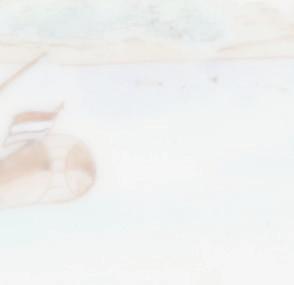

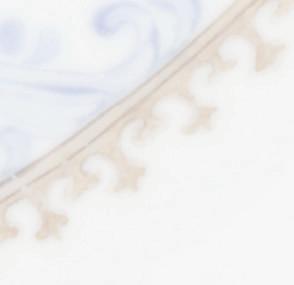

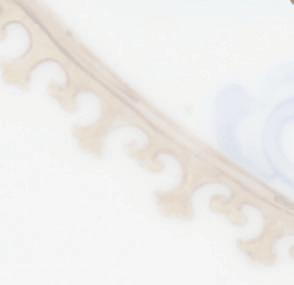
Diam. 27.5 cm
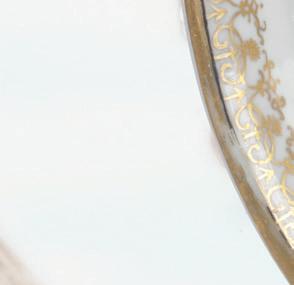



This version of the ‘Table Bay’ porcelain documented is decorated in polychrome enamels and gold and with a rim decorated with a Meissen-style border. The Cantonese artists responsible for the Table Bay dishes must have been given a sketch or print to guide them. There most likely were more artists who painted these dishes because there are many minor differences in the designs. The ships on the present dish have no rigging, and in that respect, it is similar to a dish that belonged to Hendrik Swellengrebel, Governor of the Cape of Good Hope from 1739 till 1751, but in other respects, there are slight differences (see Uit Verre Streken, June 2009, item 15). For a pair of small but similar table bay dishes previously sold by us, see, idem, November 2021, no. 37, and for a pair en grisaille see, June 2022, no. 19.
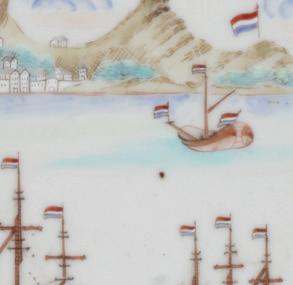
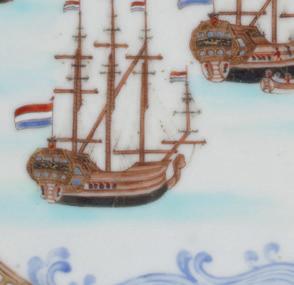


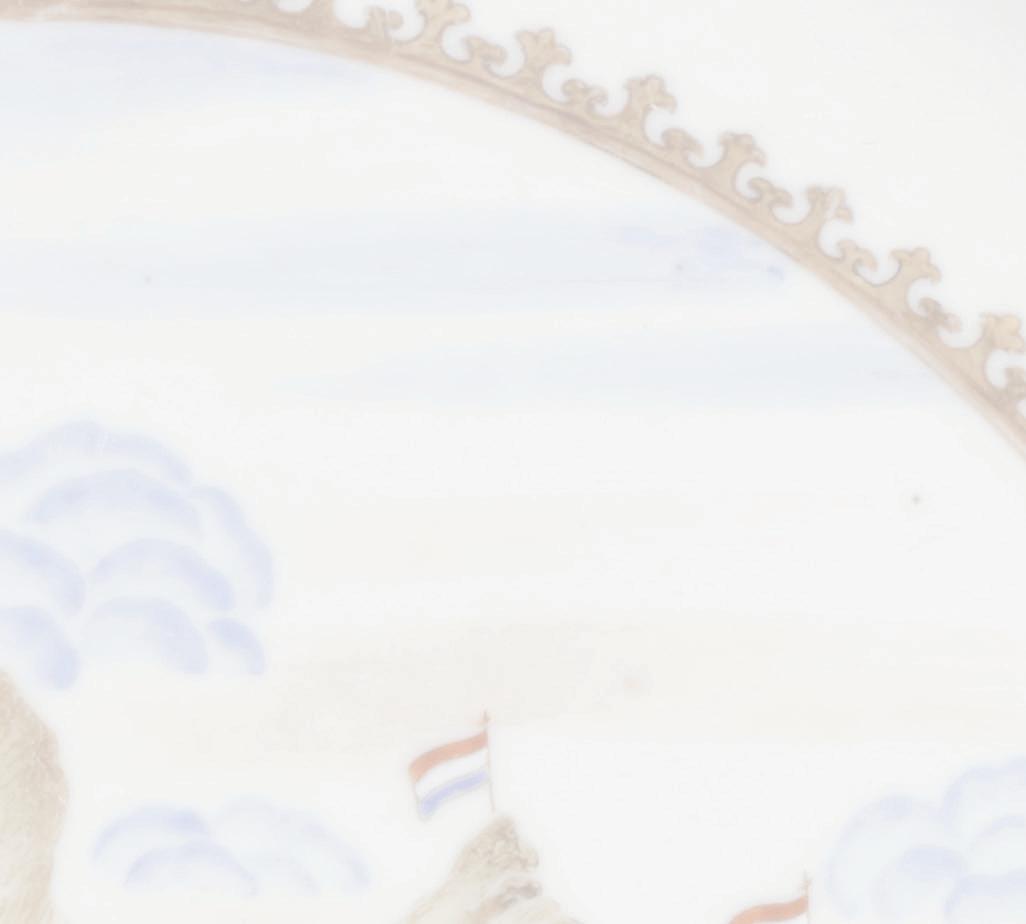

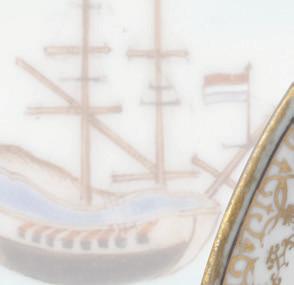


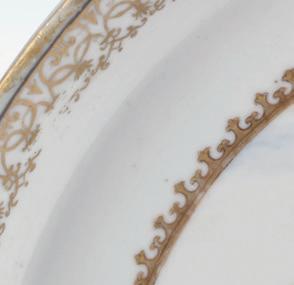
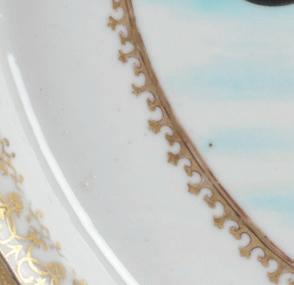





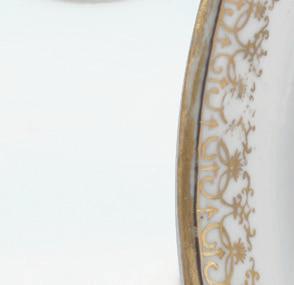




45
An extremely rare Chinese export lacquer bureau for the Dutch market Canton, circa 1737
H. 118 x W. 102.5 x D. 63 cm
This lacquer bureau is one of four purchased in Canton in 1737, and as far as is known, this is the only remaining bureau of its type from the period. As the VOC believed that large pieces of import took up too much valuable space in their trading ships, few Chinese furniture pieces were crafted for the Dutch market. Even fewer have survived the test of time.
After 1693, Japanese lacquerware can no longer be found in the VOC books, probably because it had become too costly for import. European fashion and the production of unique imitation lacquer must have also contributed to the halt of its import. The demand, however, remained high. In 1730, the Lords XVII, the directors of the VOC, sent several models of Japanese lacquerware to Batavia with the question if it could be produced for a lower price in China. After 1729, a direct sailing route was used from the Netherlands to Canton, and the trade no longer went through Batavia.
The Middelburg chamber of the VOC auctioned off a large quantity of tea trays made of Chinese lacquer in 1734, which was a great success resulting in more orders. In 1737, two shipments of lacquer trays were ordered: one for Amsterdam and one for Middelburg. Each city received three boxes with the same content. The first shipment box also contained a ‘cabinet’ or ‘writing office’, and in it had been packed a table-top (without a foot element) in the lower drawer, 5 trays in the second drawer, 15 elongated trays; in the third drawer 45 elongated tea trays, 5 sets of 5 pieces of powder boxes and so on. Space was costly, so each drawer was packed with smaller lacquer pieces. The second box had the same contents, and the third one was filled with 500 serving trays and 500 teacups. In 1738, this assortment of lacquer was sold at auction. The pieces of furniture were an exception to the orders, and the purchase lists reveal that cabinets were no longer ordered in the following years. This writing desk was made after a Dutch example, and it was crafted especially for the Dutch market rather than to the taste of English buyers, as is made clear by its slightly organ-curved front. From 1730, these fall-front bureaus were quite popular in The Netherlands, often featuring diagonally positioned side stiles. This export lacquer bureau is exceptionally well-preserved with its original brass handles and lock escutcheons.
Decorated throughout with gilt landscapes and floral details on a black lacquer background. The drawers, fall front and side panels are richly adorned with images of Chinese pavilions surrounded by pine trees and weeping willows. The bureau’s interior comprises twelve drawers with floral decor and two standing fluted drawers trimmed with capitals and basements. The centre features a cupboard door with a decoration of a vase filled with flowers, a symbol of peace and tranquillity in China. The interiors of the drawers are finished with gold powder lacquer. All drawers are
46

inscribed with a Chinese character. The desk also contains a storage compartment, which opens with a sliding panel (in French à coulisse, and a keldertje in Dutch).
Beneath the fall front are four drawers flanked by fluted and gilded stiles. The Chinese cabinet maker has followed his own interpretation of the claw-and-ball feet motifs, which feature taotie masks above them. This motif of an animal mask dates back thousands of years and can be found on Chinese bronzes from the dawn of civilisation. The bureau’s manner of construction is quite interesting and is carried out in Cypresswood, which differs from the wood used by European craftsmen. The joints of the drawers are not forked as they usually are in Europe but are somewhat rectangular in shape.
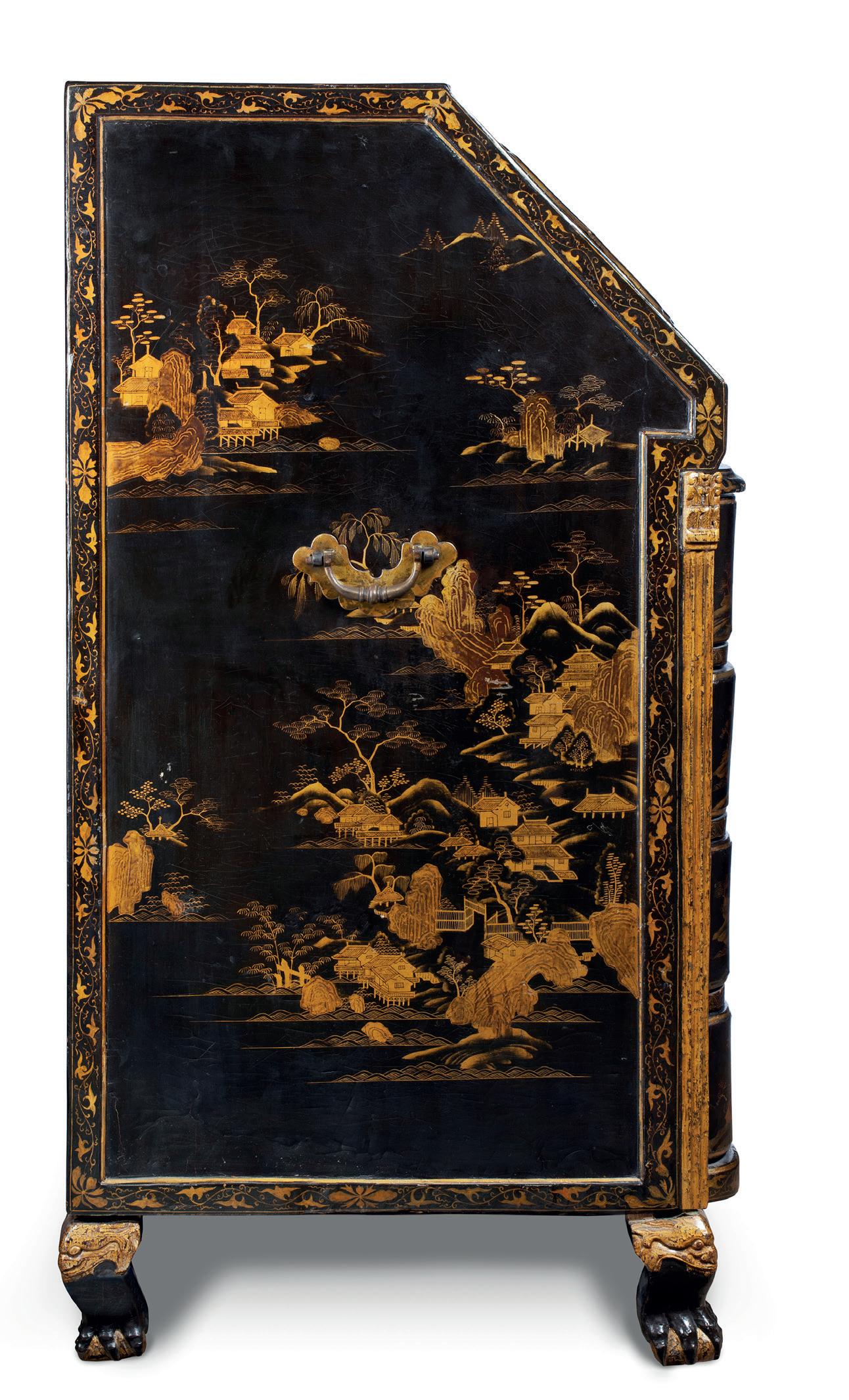
More info: www. zebregsroell.com/ china-and-japan
Literature: - C.J.A. Jörg, ’De handel van de V.O.C. in Oosters lakwerk in de 18de eeuw’ in: Nederlands Kunsthistorisch Jaarboek , Jr. 31 (1980), pp. 355-363 (ill.)
- Annigje Hofstede, Nederlandse meubelen van Barok tot Biedermeier, 1700-1830, Waanders, Zwolle 2004, pp. 3537 (ill.)
H. 53 cm
A realistically carved model of a full-length figure of a European gentleman. He is standing in a formal stance with his right leg slightly bent, his right hand resting on his walking stick, and his left hand raised somewhat towards his sword stuck at his left hip. On his head, a black tricorn hat with a gilt fringe over a long curly wig reaching down to his shoulders. He is wearing, overall gilt, a knee-length coat with carved floral decorations over a button-up waistcoat with front pockets, knickerbockers and breeches, and low black shoes with gilt buckles, standing on a small platform. Several of these figures are known, all made in unfired painted clay, and many signed by, or attributed to, Chinqua from Amoy, working in Canton during the first half of the 18th century. The figures of European gentlemen signed by Chinqua all stand in a similar pose to the present figure. However, since the present figure is executed in carved wood instead of unfired clay, it probably is not by, but at best after a model by Chinqua.
These figures were commissioned by visiting foreign merchants and naval officers with connections to the European companies trading in Canton during the 18th century.
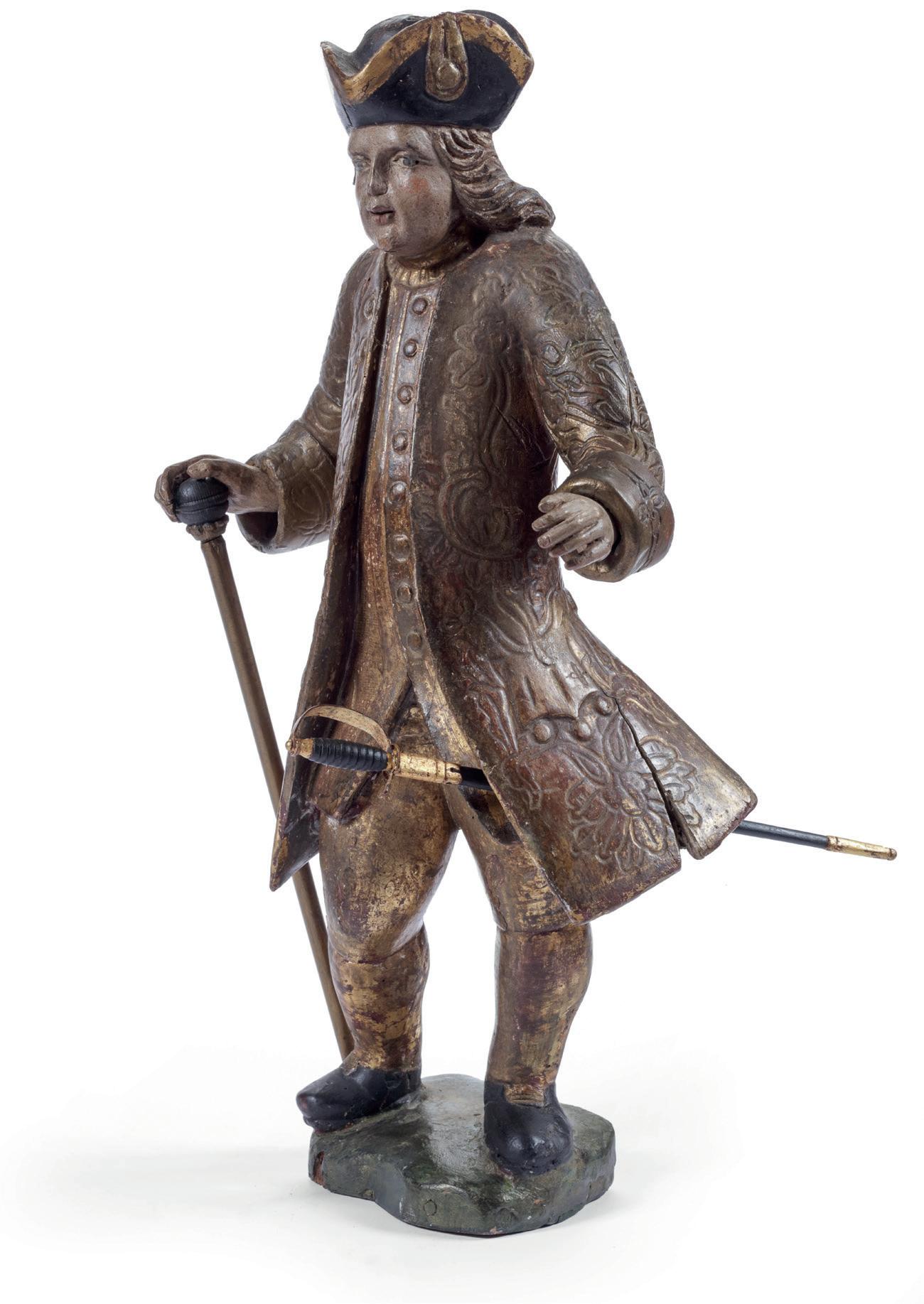
47
A Chinese walnut, Hu-T’ao, polychrome and gilt sculpture of an unknown European Company official China, probably Canton, 1st half 18th century
A refined Chinese export painting depicting ‘The Tea shop’ Canton, early 19th century Ink and watercolour on silk, H. 63.5 x W. 52.3 cm

The painting shows a coastal area with a tea warehouse, one room with workers sorting the tea on long tables, while in the courtyard at the back, tea is packed in large boxes. The other room in the front is a sales room with various signs showing the name of the shop Yu shen cha hao, the different kinds of tea for sale and salesmen selling tea to customers.
In the late 18th and early 19th centuries, in the thriving international port of Guangzhou, series of paintings showing tea, silk or porcelain production were produced by studios of Chinese artists for Europeans and Americans coming to buy these products in China. Usually, a series of twelve paintings would show how farmers grew and harvested tea on their small land holdings; how the tea was transported over the mountains to wholesale centres like in the present painting; and how the tea was further transported to the international port of Canton where European agents acting for the various companies would select and buy the tea to be boarded on ships to be delivered in Europe or America. However, whether the present painting ever belonged to such a series of tea production paintings or is an independent painting is not known.
48

Portrait of a Chinese man
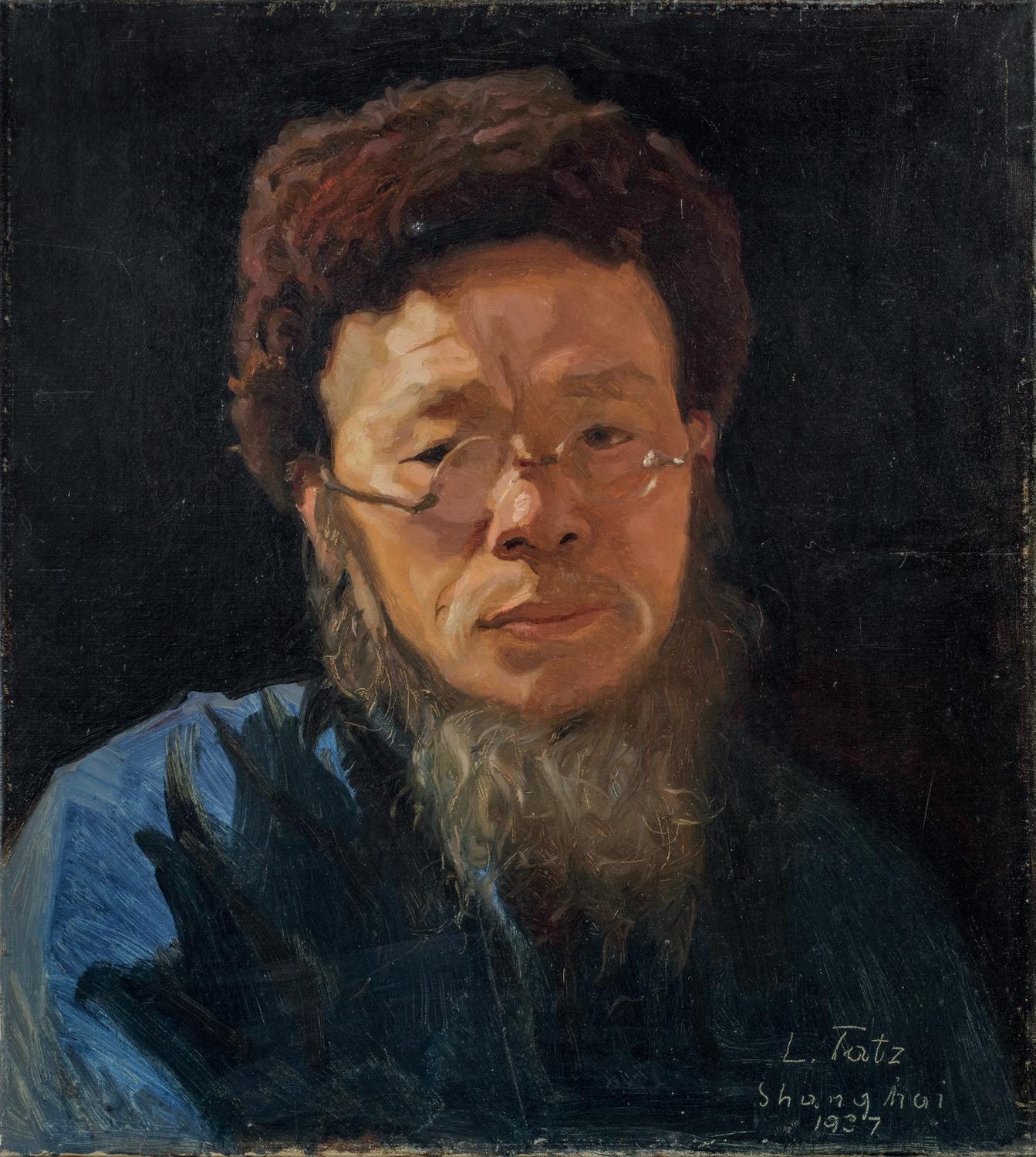
Oil on canvas, H. 50 x W. 44.5 cm
Tatz studied in Budapest and Paris, and in 1931 he started working in Shanghai with his brother, a sculptor. In the early 20th century, after the fall of the Qing Dynasty in 1911, Shanghai, a treaty port, became China’s international economic and cultural centre. It had a substantial international settlement, foreign enterprises and a very European atmosphere and architecture. As a result, Europeans, and Americans alike, came to make quick money. However, in 1937 with the outbreak of the Sino-Japanese war and the occupation of Shanghai by Japanese forces, this all ended abruptly. Tatz, after that, moved to the Philippines, where he died in 1951. For a portrait of a Chinese woman by Tatz previously sold by us, see: Uit Verre streken, March 2015, no. 48.
49 Lazlo Tatz (Hungary 1888 - Philippines 1951)
A charming Japanese ema, a painted wood wishing board Edo-period, 1st half 19th century
H. 56 x W. 27 cm
Ema are votive plaques on which people write their wishes and hang them in ‘dedication areas’ at Shinto shrines and temples, dedicating their wishes to the gods. Common wishes revolve around love, relationships, career success, academic achievement, health, and prosperity. Red-haired foreigners arriving with their treasure ships, usually depicted as Dutchmen, were seen as bringers of good luck and prosperity in coastal areas of Japan. Arita porcelain in the first half of the 19th century often depicts Dutchmen, not only out of curiosity about foreigners but certainly as a wish for good omens too, as this ema does.
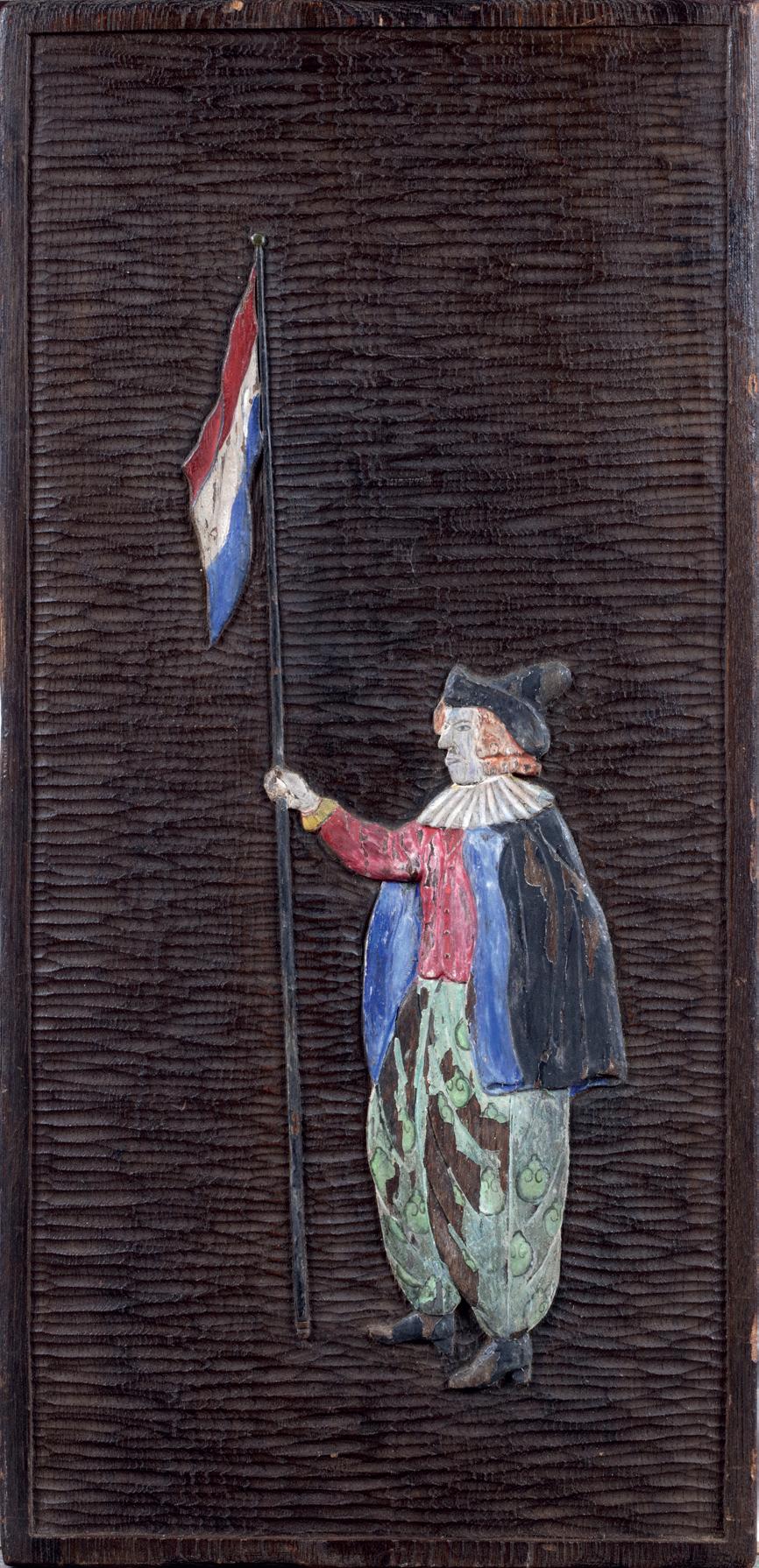
50
A large Kakiemon-style Dutch decorated Japanese porcelain wine bottle with initials PDR Arita, 1670-1690, decorated in Holland, circa 1710-1725
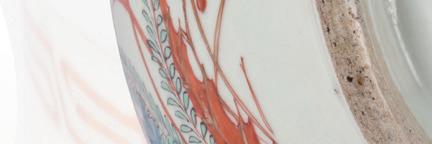








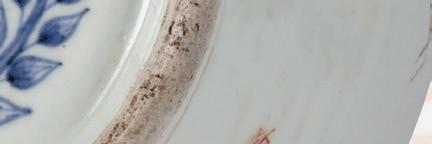











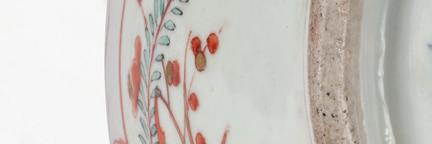
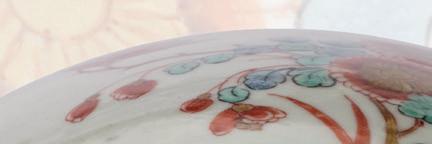

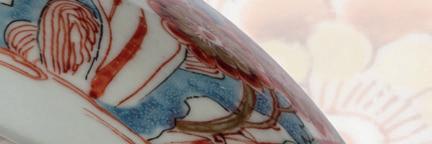



H. 32 x Diam. 21 cm Diam. 13 cm (foot ring) Content approx. 4.5 litres


On the base, decorated in Japan in underglaze blue, are the initials PDR inside a wreath. Apart from that, the bottle was left blank, but was overdecorated in the Kakiemon style in Holland in red, green, and blue enamels with gold, called ‘Amsterdams Bont’ or ‘clobbered’. The initials PDR possibly stand for Paulus de Roo. Paulus de Roo was born in Batavia in 1658, son of Cornelis de Roo opperchirurgijn (head-chirurgeon) of the VOC and Anna Andriessen. In 1685 he was a merchant and fiscal (public prosecutor) in Dutch Suratte. In 1689 he was Boekhouder-Generaal (head-bookkeeper) in Batavia and Secretary of the High Government in Batavia in 1690. In 1694 he was appointed Commmisaris of Suratte on the Malabar Coast, where he died in 1695. There were whispers that he was poisoned because he had made enemies by suggesting bookkeeping improvements and being too honest). He left behind his wife, Sebastiana Zas and three children. Paulus de Roo had never been stationed in Japan, but the Governor-general under whom he served, Johannes Camphuys, had been Opperhoofd in Japan three times, from 1671-1673, 1673-1674 and 1675-1676. There are a few Arita wine bottles known with his initials I.C also inside a wreath on the base (see Uit Verre Streken, November 2015, no. 44). Paulus de Roo and Johannes Camphuys were close friends, and the present bottle might have been a present by Camphuys to his friend De Roo. To add to the suspicious death of De Roo: he and his powerful friend both died in 1695…

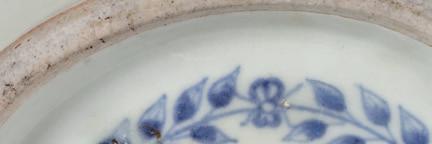

51
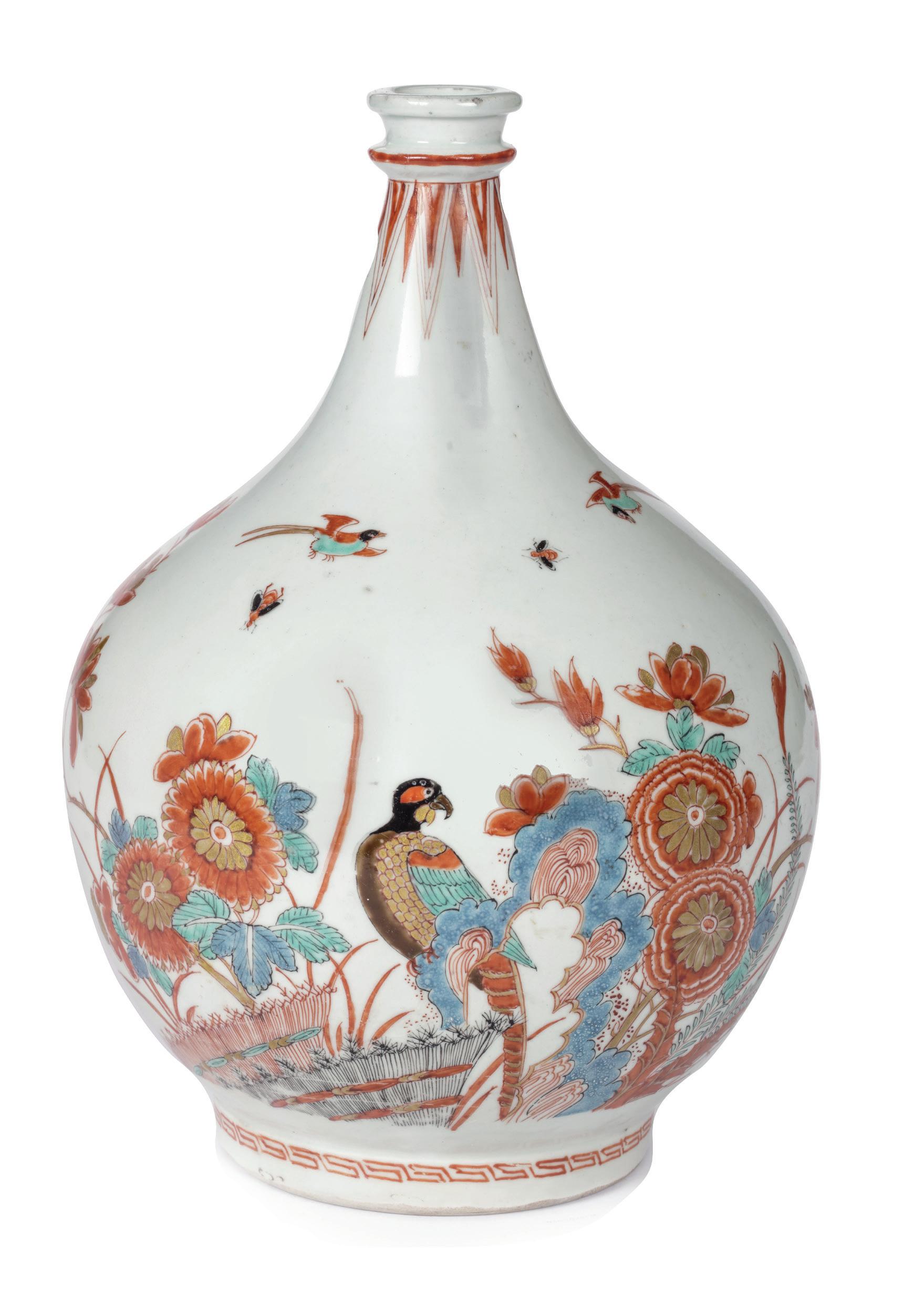
Kawahara Keiga (1786 - c. 1860)
Two Dutch ships anchored in the bay of Nagasaki
Painted on silk, H. 27 x W. 41 cm
Based on the style of the written date on the reverse sticker, it is most likely written by one of the Japanese translators working on Deshima. Therefore, this probably is the first painting by Kawahara Keiga of Dutch ships in the Bay of Nagasaki, a proof of competence to succeed his master Ishizaki Yũshi as a painter for the Dutch. In this painting, Keiga did his utmost to show his competence, which can clearly. be seen. For instance, in the mountains in the background with the detailed Ebisu Shrine, the
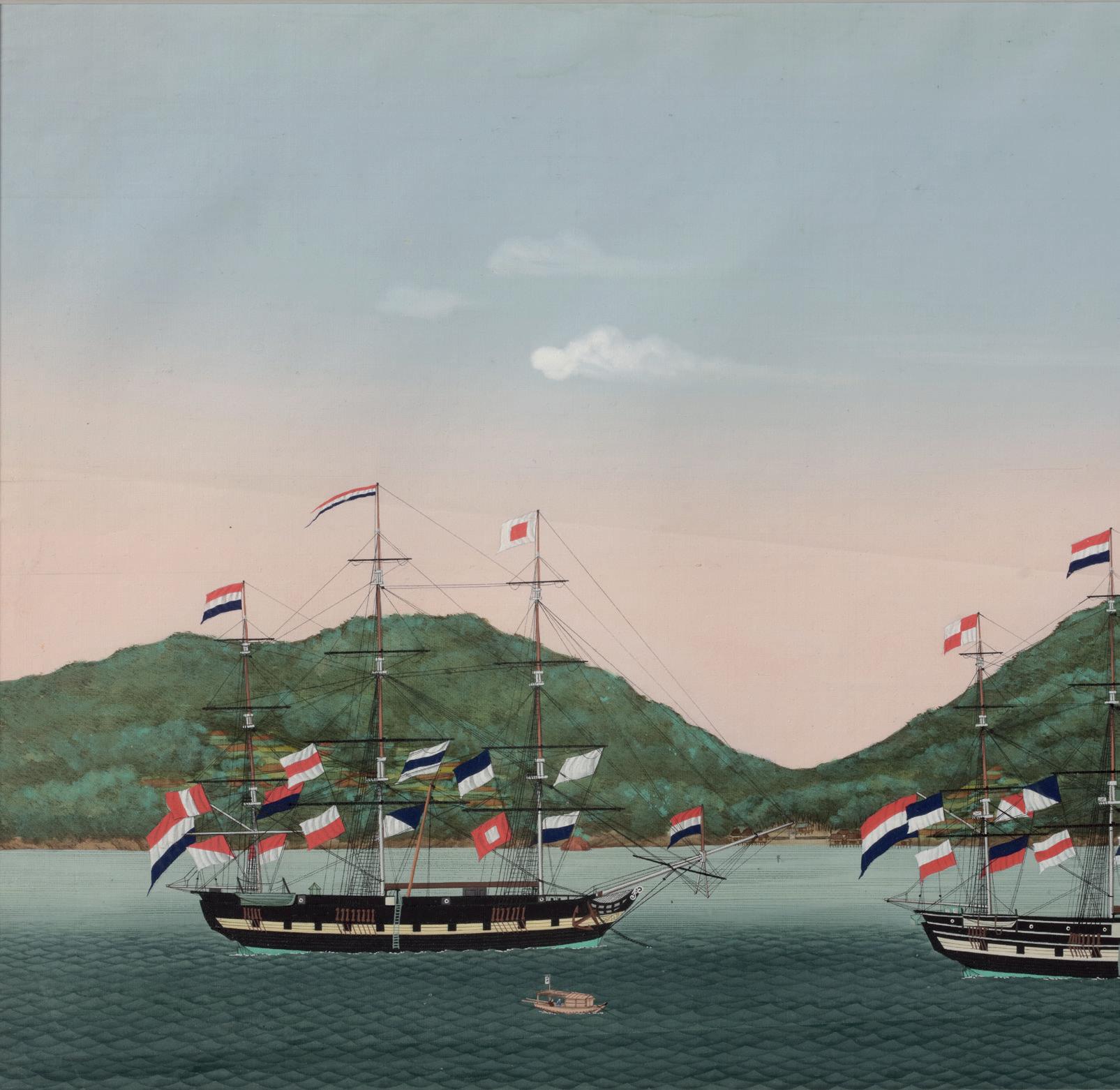
52
texture of the waves and the chiaroscuro (particularly in the flags). This makes this early painting one of his best documented works.
In ‘het Dagregister’, the daily register of Deshima, Opperhoofd Jan Cock Blomhoff (1779-1853) on 29 July 1821 mentioned the arrival of the two frigates Fortitudo under captain Siewert Lieves (1787-1823) and Java under captain Andries Schott. On board the Fotitudo were the two camels, gifts from the Dutch government to the ‘Emperor of Japan’, the Shogũn Tokugawa Iehari (17731841) in Edo. In total four camels arrived during this period. However, at least one of the camels turned out to be more of financial security for Blomhoff’s Japanese wife after Blomhoff had left Deshima, than a gift for the shogun.
This painting was made while Jan Cock Blomhoff was Opperhoofd from 1817 to 1823, and Johan Frederik van Overmeer Fisscher (1800-1848) was his secretary. At that time, Ishizaki Yũshi was the official Japanese painter working for the Dutch and Kawahara Keiga was one of his pupils. Only in 1823, Keiga succeeded his master Yũshi as dejima de-iri eshi, a ‘painter allowed to go in and out of Deshima’. The present painting, therefore, probably was ordered from Yũshi by one of the captains of the two ships. Because the picture clearly shows Keiga’s hand, Yũshi probably passed on the commission to his pupil.
We are grateful to Prof. Matthi Forrer for his assistance in writing this catalogue entry.
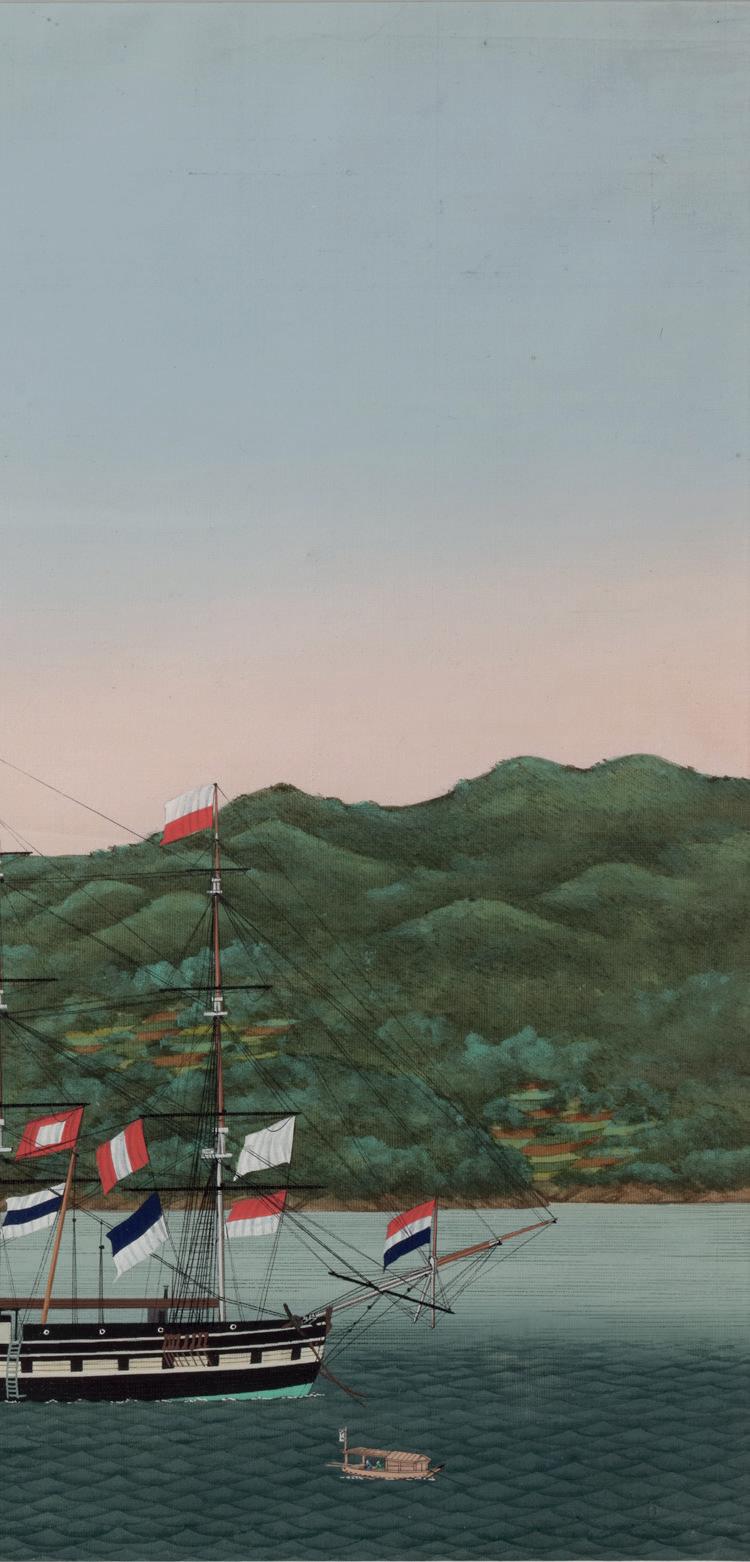
A set of four extremely rare and important pictorial-style Japanese export lacquer bottles

Edo-period, circa 1650-1680
H. 15.5 x W. 6.9 x B. 7.6 cm each
The wood, Hinoki cypress, bottles with red copper (possibly once silvered) lids that screw onto short metal necks, have very high-quality decorations in hiramaki-e, takamaki-e and taka-zogan of rocky landscapes with trees and birds, alternating with various plants, at the angles of the body a cash pattern decoration and the shoulders decorated with four formal patterns.
The shape of the bottles is derived from Dutch glass or Delftware bottles, and probably were originally part of a set of six bottles, perhaps together with the two identical bottles in the Braunschweig Collection (inv.no. Chi 716). Usually, six bottles were fitted into a box or kelderken.
53
54
A splendid pair of large Japanese Arita blue and white porcelain VOC chargers and a rare small VOC dish Arita, late 17th century Diam. 36,5 cm (chargers) Diam. 22 cm (small dish)

These expensive dishes were primarily for use by VOC officials in the many different trade posts of the Company in Asia and at the Cape of Good Hope, and possibly also used as diplomatic gifts.

A square Arita porcelain bottle with polychrome decoration of Dutchmen

Late 18th /early 19th century
H. 16.5 x W. 8.6 x D. 8.6 cm
In Japan, European figures and their foreignness were considered to possess magical powers. The Japanese belief in raihõshin stated that gods arriving from unknown lands beyond the sea would bring happiness and wealth. Aspects of this belief are still seen in the form of festivals held annually in seaside areas along the coast of Japan. One typical example is the namahage festival in Akita prefecture. Namahage are thought to relate to big, red-haired, blue-eyed foreigners who were imagined to be gods from eternal lands beyond the sea, bringing happiness and prosperity. For that reason, Dutchmen came to be depicted on Arita porcelain. Not primarily as Dutchmen as such, but rather as ‘foreigners’, bringers of good fortune.
55
An exquisite prunus wood netsuke of ‘Blomhoff’s Dromedaries’ signed Bunpō Japan, Bunsei-period (1818-1830), circa 1821-1825

Lying neatly side by side, each with its head resting on the hump of the other and gazing fixedly and affectionately at each other. Their eyes are inlaid with buffalo horn, and the himotoshi are bored into the underside signed Bunpō.
H. 3.2 x W. 3.7 x D. 3.1 cm
The Japanese word for both camel and dromedary is rakuda. The term is homophonous with the concept of comfort; thus, the camel has become associated with conjugal ease.
The present netsuke was almost certainly inspired by the Dutch import to Nagasaki of two dromedaries in 1821. The arrival of the two camels, a male (8 years old) and a female (7 years old), was a private initiative of Opperhoofd or Chief-Merchant Jan Cock Blomhoff. He wanted to have these exotic animals displayed all over Japan so that his Japanese wife could live a carefree life thanks to the proceeds, even after his return to the Netherlands. The Museum Volkenkunde holds a makimono scroll with many prints and documents related to the two camels, also dated circa 18211825 (inv. no. 7029-1).
Literature:
- G. Wilhelm’s report of the Picard sale, in: Bulletin Association Franco-japonaise, no. 46, p. 41 (ill.)
Idem, no. 88, p. 43
- Netsuke Kenkyukai Study Journal, 14 /3, p. 46
- Cabinet Portier 100 ans, 1909-2009, p. 122, n° 564
56
57
A Japanese colour Nagasaki-e print depicting a Dutch chief with a Javanese servant and a dog in a European landscape Nagasaki, Edo-period, early 19th century

The title ‘Holland Berg en water’, translated as ‘Dutch mountain and water’. This is a translation of the Japanese term sansui for ‘landscape illustration’.
Colour woodblock print, H. 25.4 x W. 19.6 cm
The Dutch chief is often portrayed in the company of his dog. It had not escaped the notice of the Japanese designers that the dog played an essential role as an animal companion in the lives of the Dutch. Initially, the Japanese considered this association with dogs rather strange, but later they were asked by the Shogun to demonstrate how to teach dogs not only for hunting but also for the performance of tricks.
A Japanese Nagasaki-e print depicting a Dutch procession Nagasaki, circa 1850, published by Bunkindô
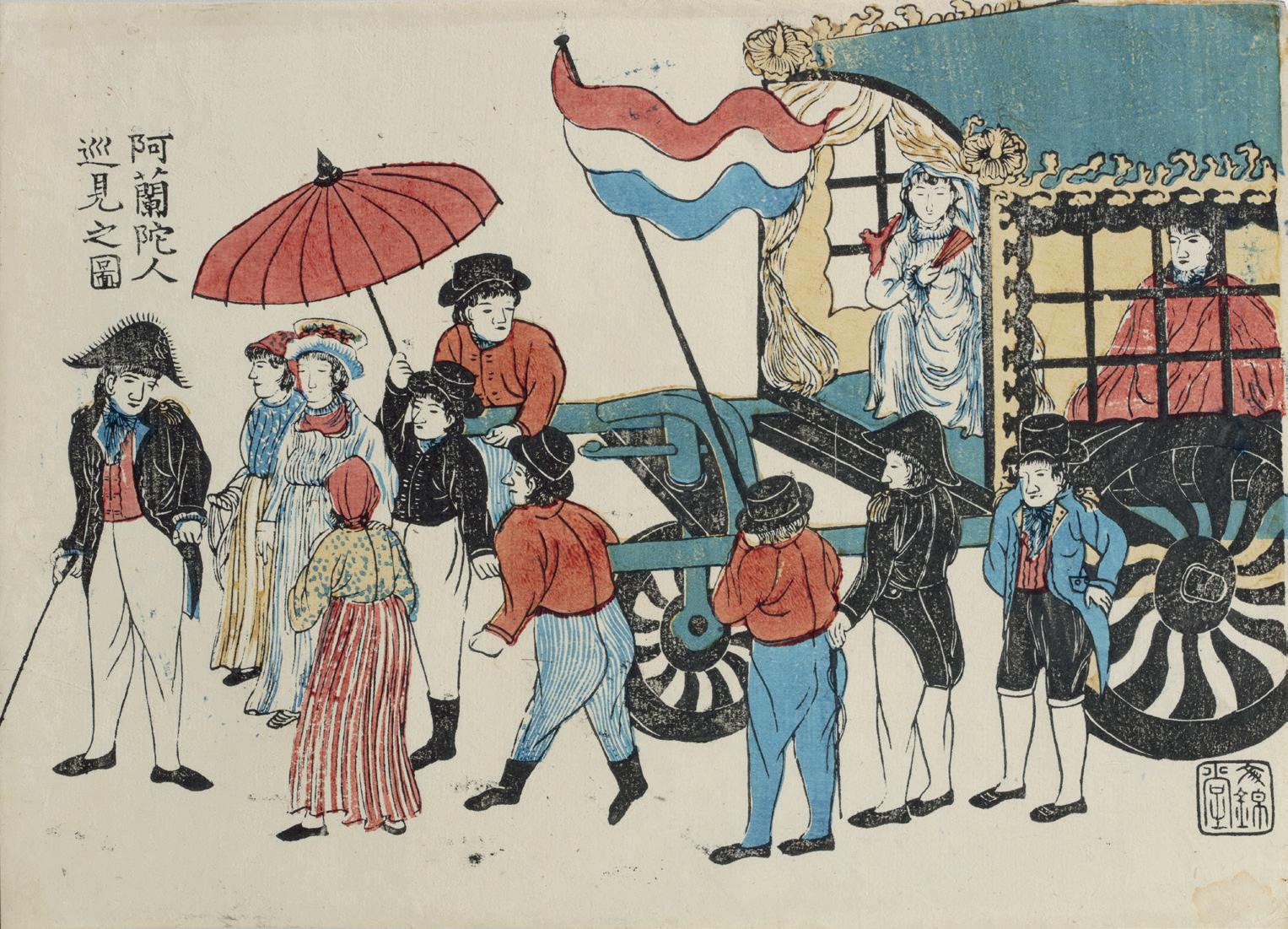
Colour woodblock print, H. 22.3 x W. 31.2 cm
It is rather unlikely this procession actually took place in 1850. During the Japanese policy of seclusion, sakoku, between 1641 and 1854, the Dutch were the only Europeans allowed to trade in Japan, but under stringent limitations. They were not allowed to leave their small trading post on Deshima Island without permission; no Dutch women, no Dutch military and no overt practising of the Christian belief were permitted in Japan. Only after Commodore Perry had forced the Shogun government in 1854 to sign a Treaty of Peace and Amity could such a procession have taken place.
58
A Nagasaki-e print depicting a Russian officer, probably Admiral Yevfimiy Vasilyevich Putyatin (1803-1883), with a standard bearer Circa 1853, published in Nagasaki by Bunkindô

Colour woodblock print, H. 43 x W. 15.3 cm
On hearing of American plans to send Commodore Perry to Japan to open the country to foreign trade, the Russian government in 1852 sent Admiral Putyatin to Japan with the same objective. Putyatin arrived in Nagasaki in August 1853, one month after Perry. As negotiations were protracted by Japanese indecision, Putyatin departed from Nagasaki to survey the coasts of Korea and the Russian far east. On returning to Nagasaki, he found no progress in the negotiations and that the British Royal Navy sought to destroy his vessels because of the Crimean War. Putyatin sailed to Shimoda in the Bay of Edo, arriving in November 1854, after the Americans had already opened Japan by the Convention of Kanagawa. In February 1855, he concluded the Treaty of Shimoda, opening three ports to the Russians. In the meantime, a giant tsunami destroyed the Russian ships after the Ansei Tokai earthquake. Russian sailors and technicians worked with Japanese carpenters to build new vessels, teaching the Japanese much about European shipbuilding.
59
60
Okada Shuntosai (act. 1832-1861) Murayama, the red-light district of Nagasaki in the province of Hizen, with Dutch merchants and Japanese courtesans
Copperplate engraving, H. 8.8 x W. 14.4 cm
The sign reads Koewagetoeroo hikichaya (i.e., Kagetsurõ hikichaya), the brothel Kagetsu, which is still there as a restaurant. This extremely rare engraving is depicted in Nishimura Tei, Nihon dõbangashi (The history of Japanese copperplates), Takatsuki, 1971 (1941), pl. 83. Another copy is in Kupferstich-Kabinet, Dresden (inv.no. 735v.1).

Unpei Kameyama (1821-1899)
A view of black (American) ships in the bay of Uraga Senminato, Miura district, June 1853, the first arrival of Comodore Perry in Japan.

The Japanese text reads: ‘The seventy-six old men for the Kitamura-clan, drawn in 1897 on request of Yoshisada Kitamura, Himeji, the black ships which so much changed the fate of Japan, enjoy please this masterpiece by Harima Shonin Bisei who brings back memories of his young days.’
Watercolour on paper, laid down on cardboard, H. 44.5 x W. 115.5 cm
61
Yoshisada Kitamura (1838-1899), the son of a farmer in the village of Ogawa, in the district of Harimakashikihigashi, studied under Matajiro Otaka and got heavily involved in the anti-Shogunate movement. He was active in several military incidents against the Shogunate. After the Meiji restoration, he served the Meiji government as a local official in the Himeji domain.
Kameyama Unpei was a Confucian scholar, a Shinto priest, an educator, and a feudal vassal of the Himeji-clan. As a young man, he was a student at Shoheizaka Gakumonjo in Edo, where he was instructed by Shoheiko. After that, he served the Tokugawa Shogunate, and after the Meiji restoration, he was called ‘Harima-saint’ for teaching young men at Kankai Kodo in Nada, Himeji City.
Provenance: Collection of Yoshisada Kitamura, Himeji
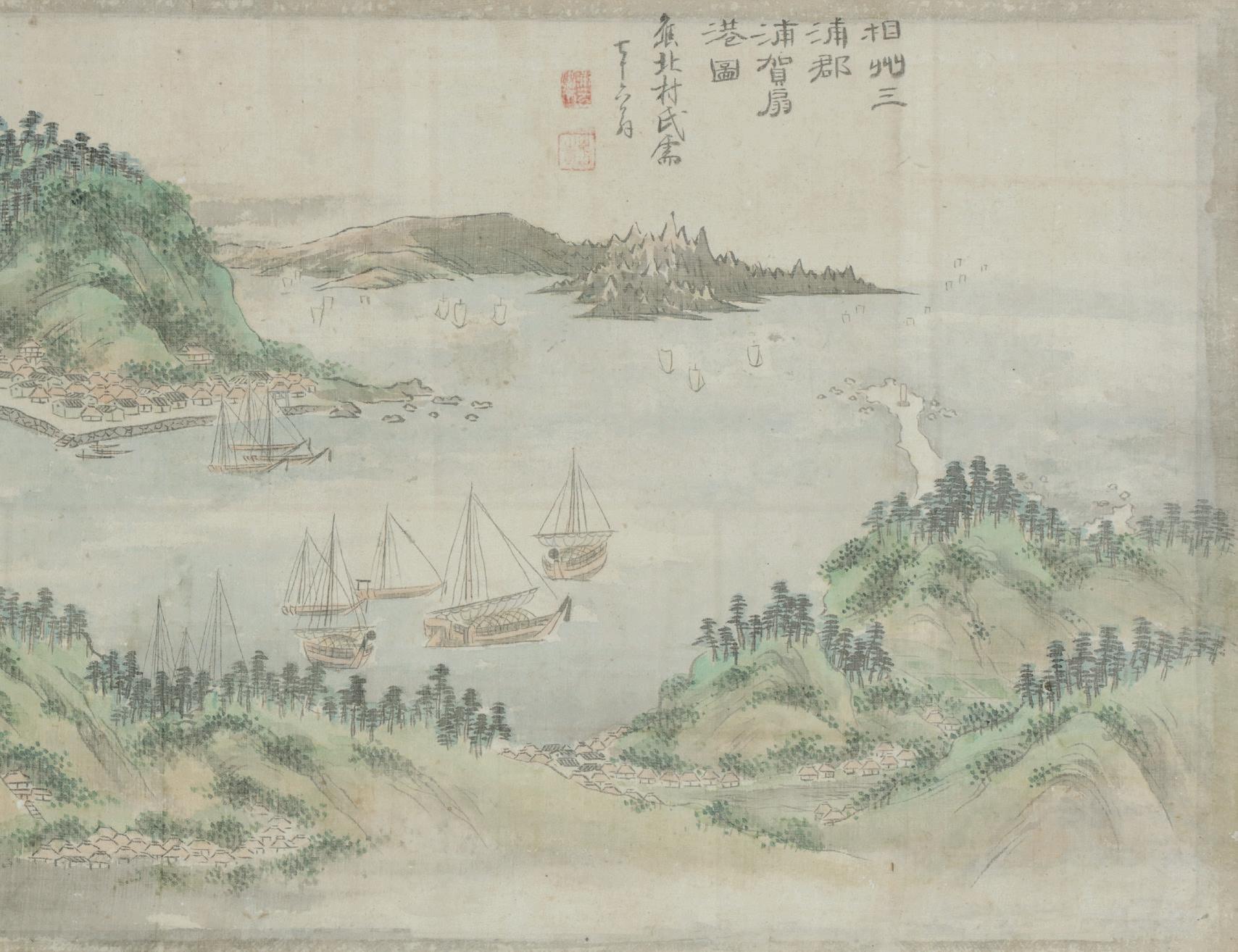
Published by Guus Röell and Dickie Zebregs

November 2022

Maastricht 6211 LN, Tongersestraat 2 guus.roell@xs4all.nl tel. +31 653211649 (by appointment only)
Amsterdam 1017DP, Keizersgracht 541-543 dickie@zebregsroell.com tel. +31 620743671 (by appointment only) Cover
Marriage procession in the valley of the Salakh, no. 35
Title page
Portuguese-colonial Brazilian silver ewer, no. 11
More images and further readings can be found at www.zebregsroell.com
This catalogue and previous ones can be viewed at www.guusroell.com Photography Michiel Stokmans
Design A10design
Printed by Pietermans Drukkerij, Lanaken, Belgium



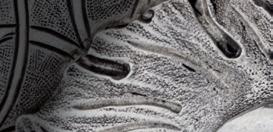



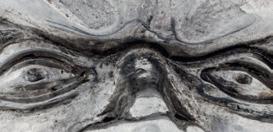


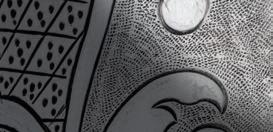


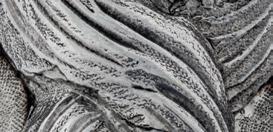

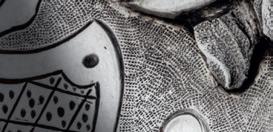

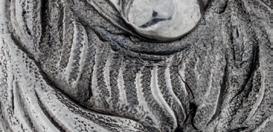



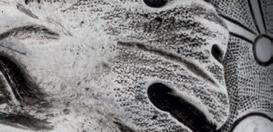


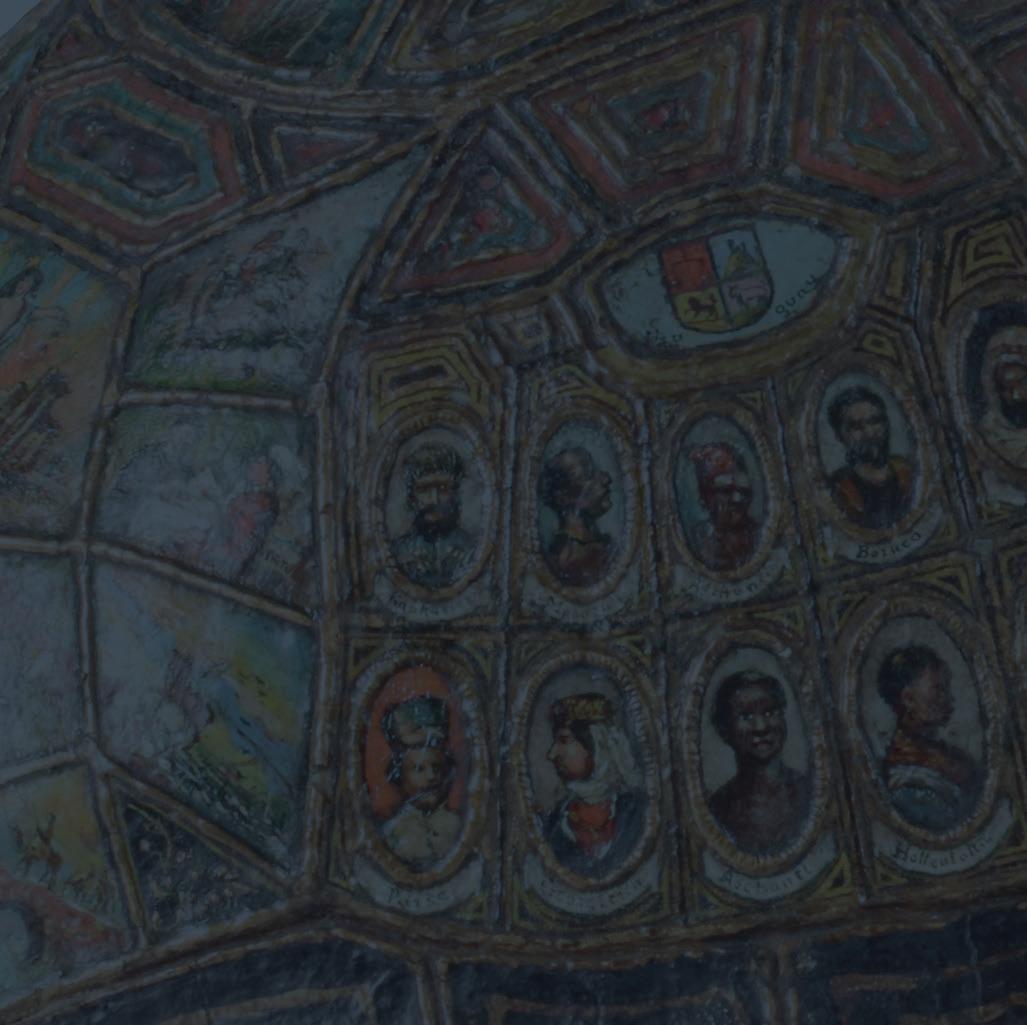
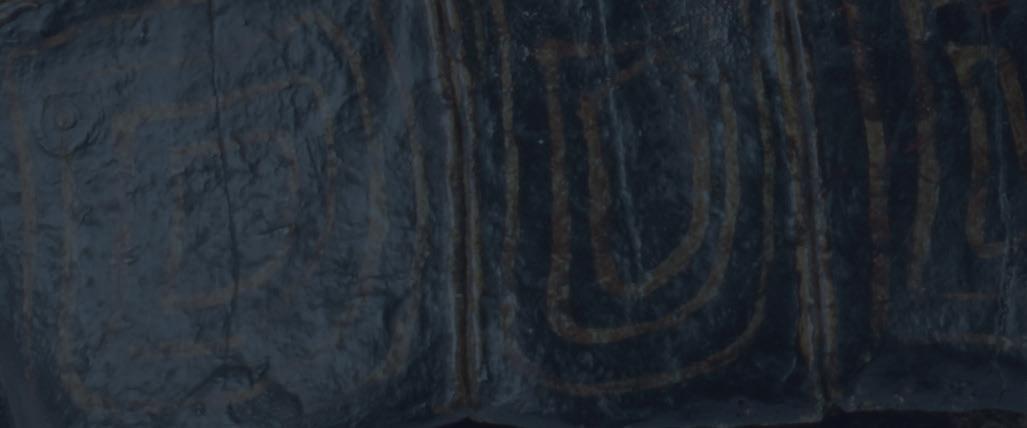






















 Provenance: Private collection, Bordeaux
Provenance: Private collection, Bordeaux






















































































































































































































 Landscape in moonlight near Sumedang
Waterfall Singahan, Rembang Residency
The road from Buitenzorg to the valley of the Salakh
The river Brantas in the mountains, Pasoeroean Residency
Wild landscape in east Javanese
The volcano Smeroe, seen from the Pasoeroean Residency
Landscape in moonlight near Sumedang
Waterfall Singahan, Rembang Residency
The road from Buitenzorg to the valley of the Salakh
The river Brantas in the mountains, Pasoeroean Residency
Wild landscape in east Javanese
The volcano Smeroe, seen from the Pasoeroean Residency








































 Rudolf Bonnet (1895-1978)
Rudolf Bonnet (1895-1978)
















































































































